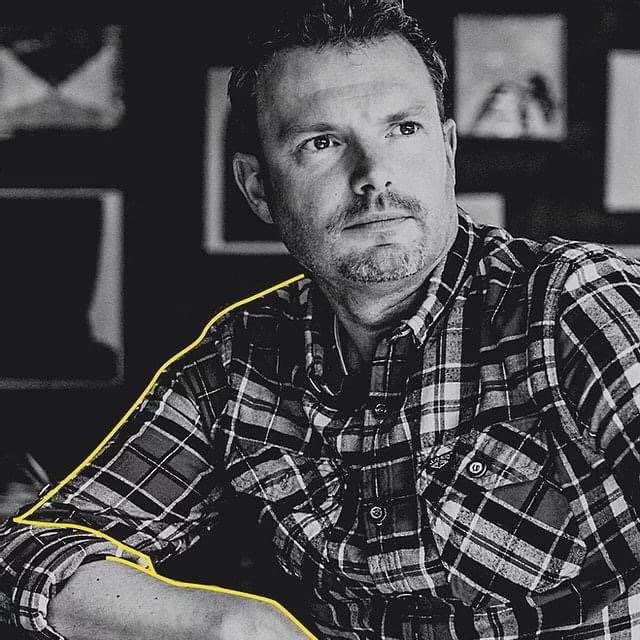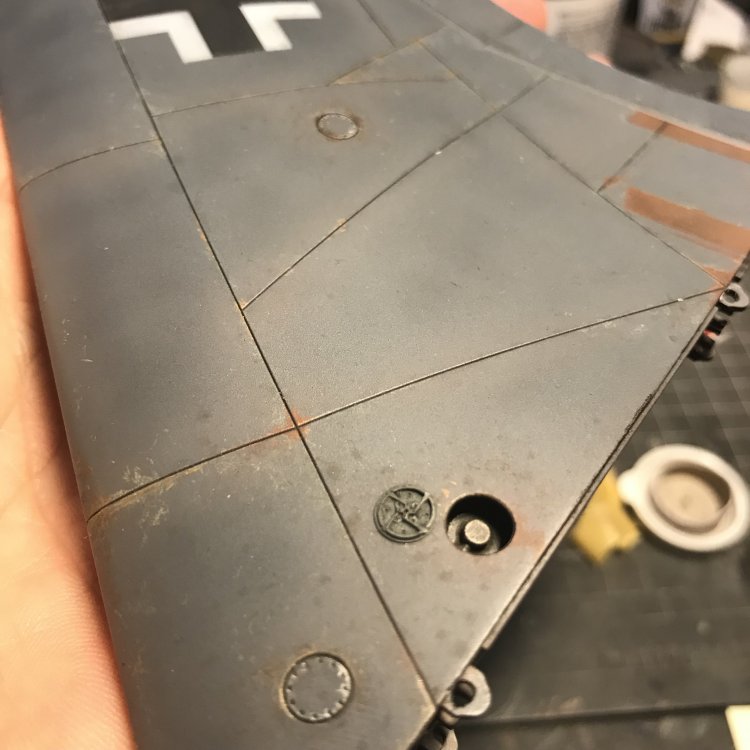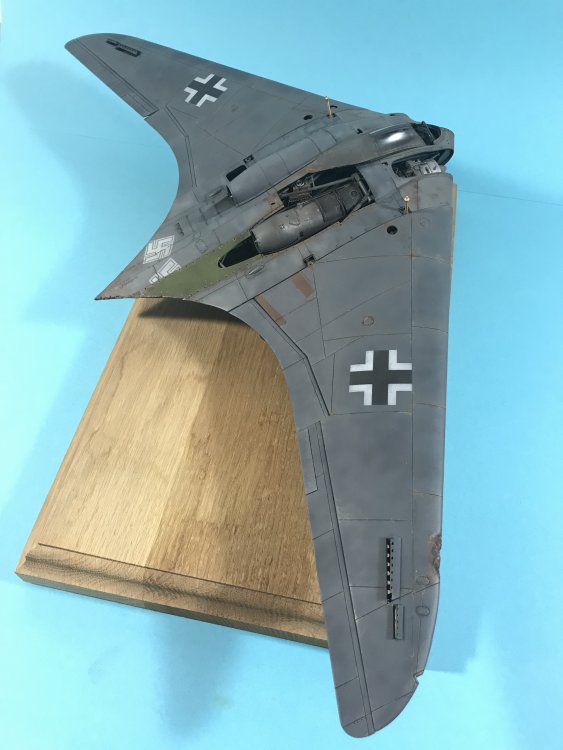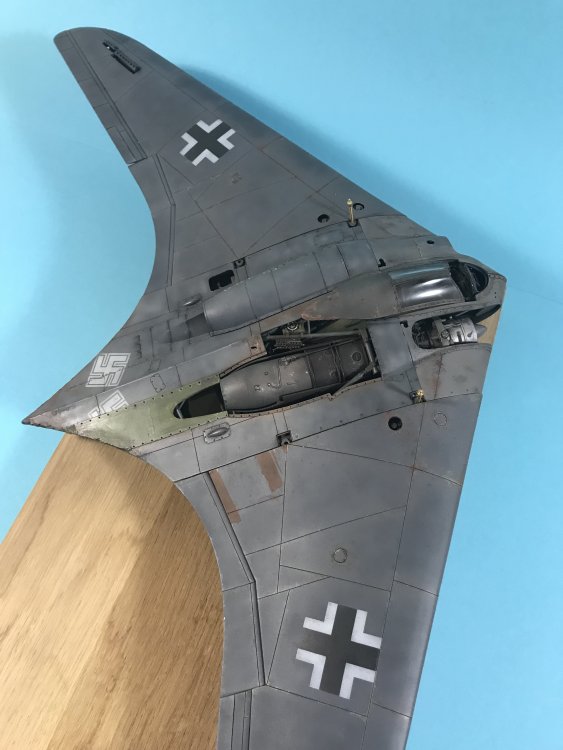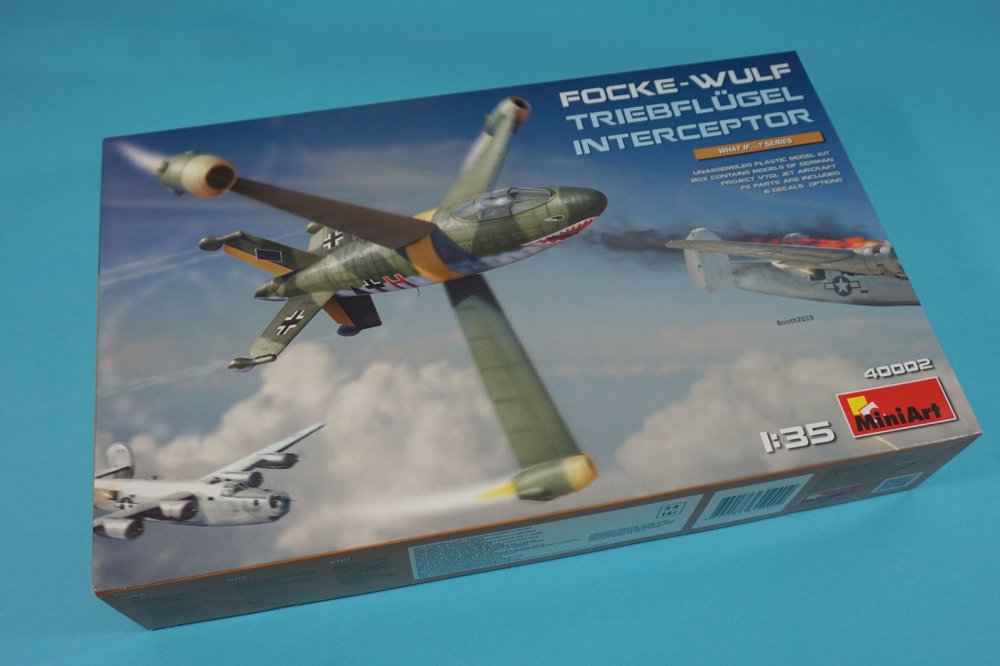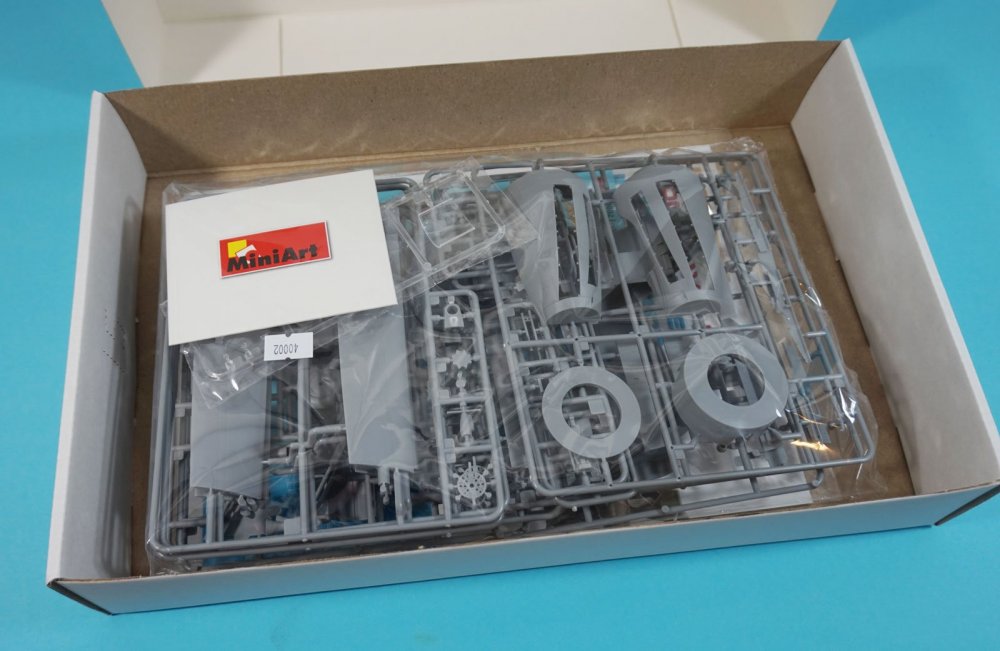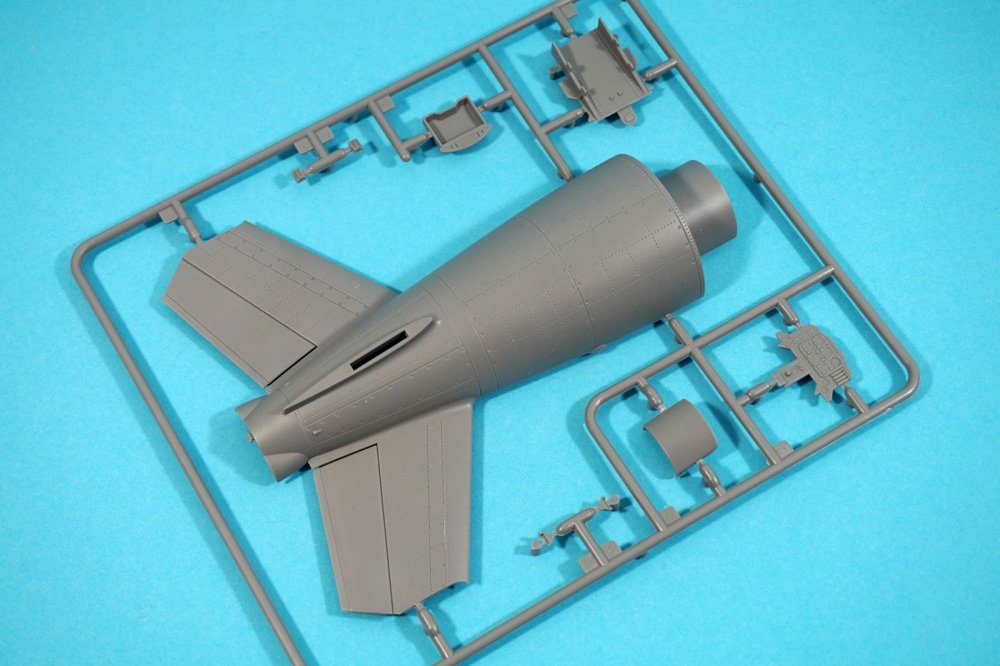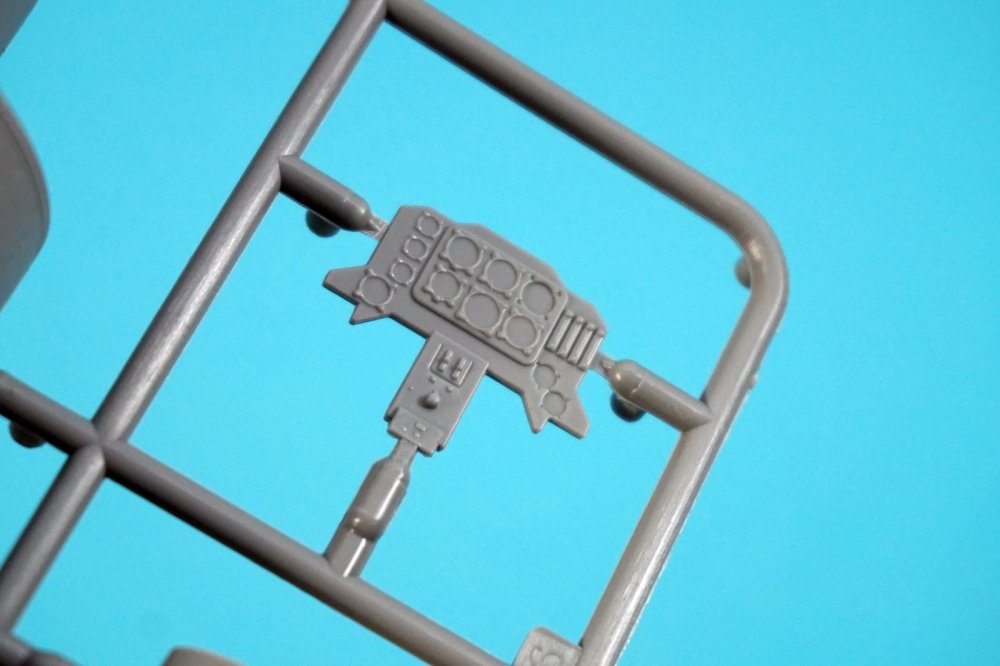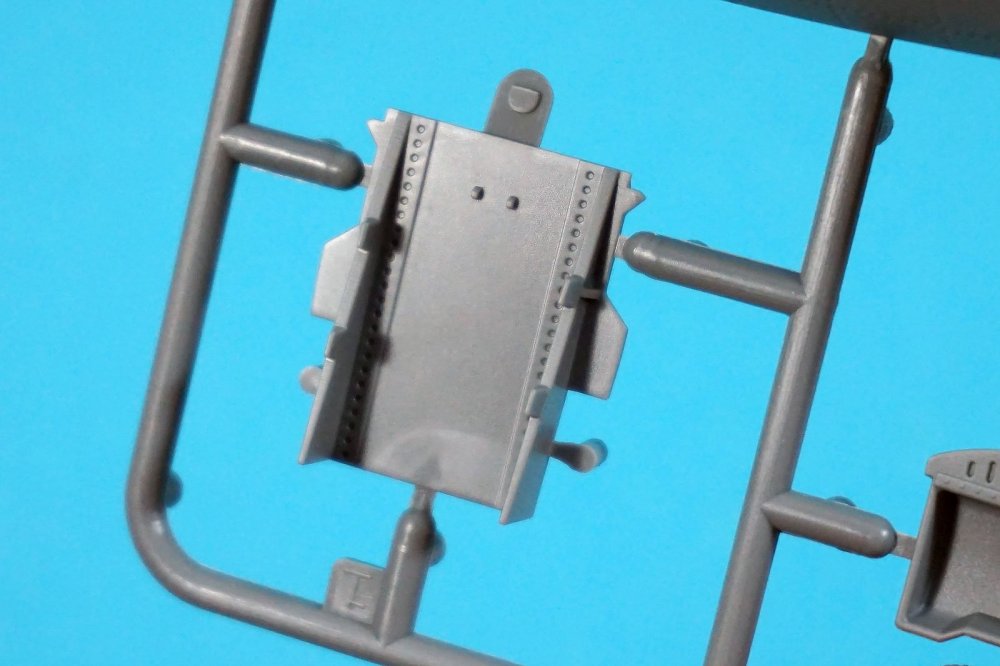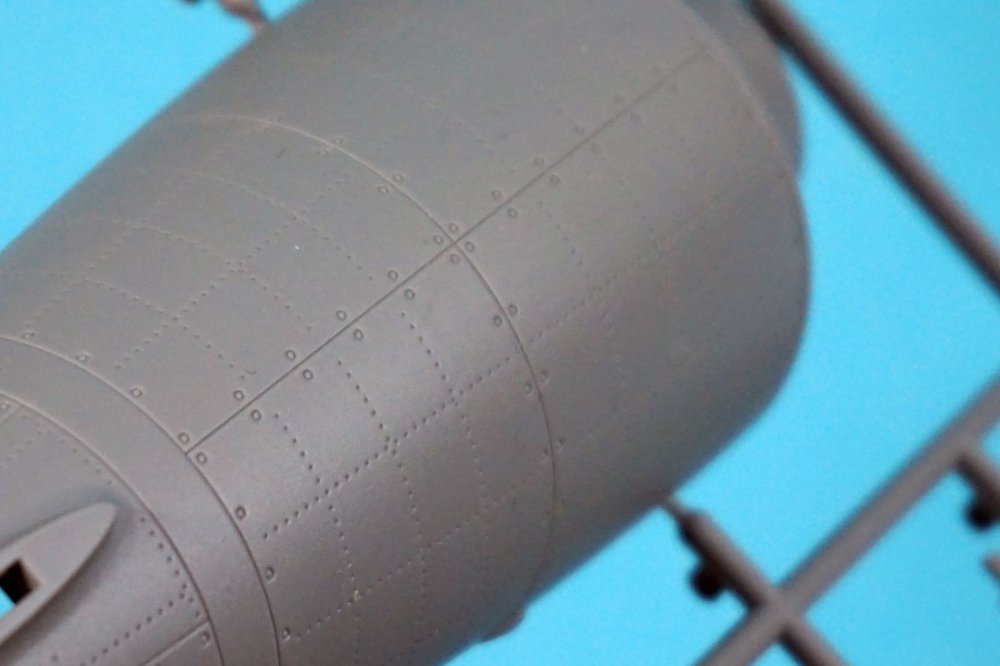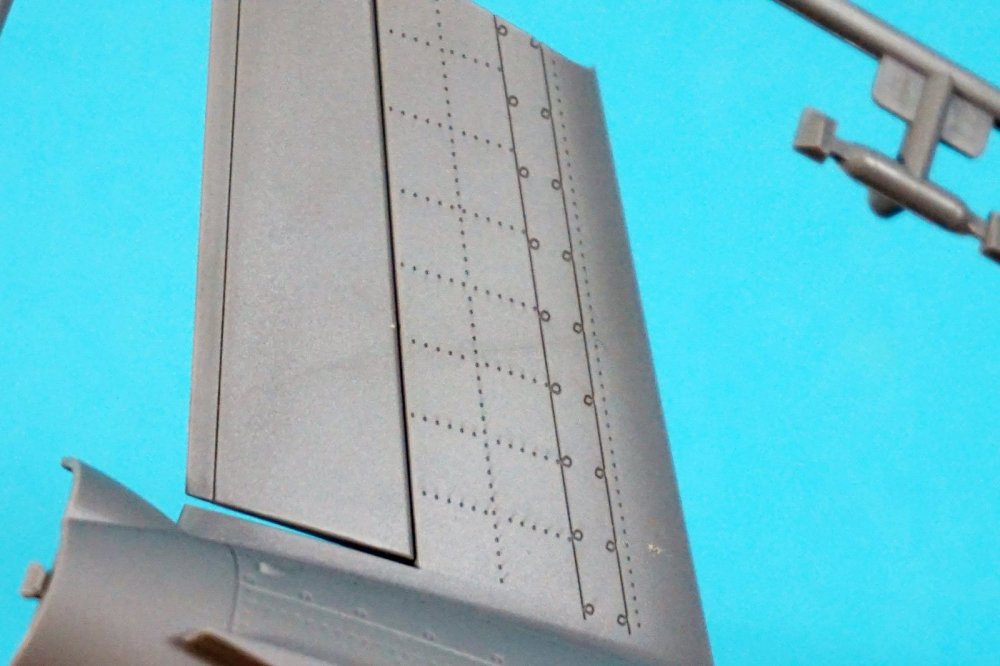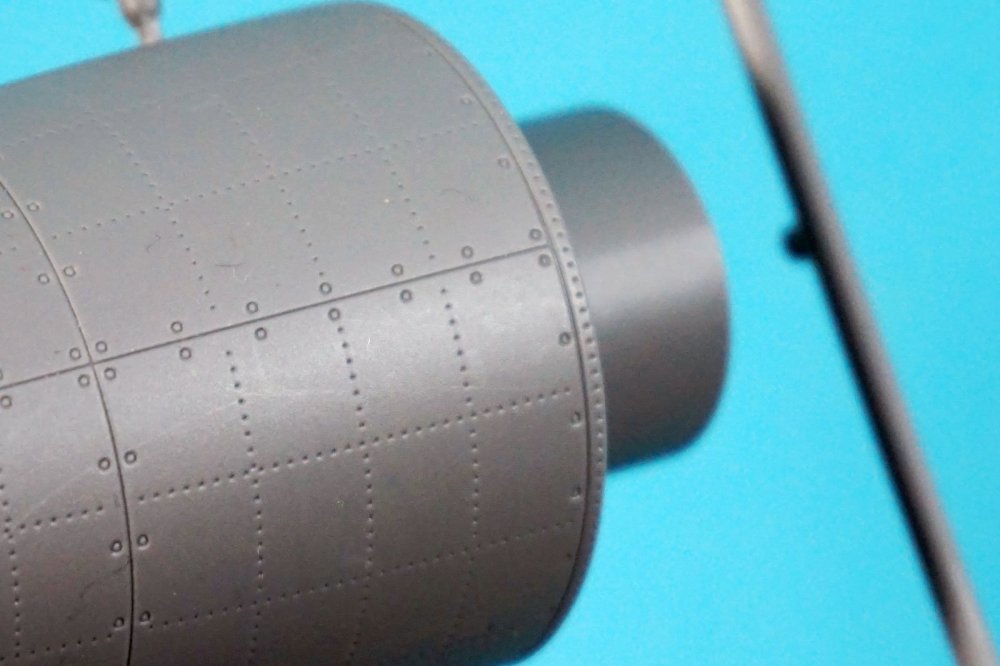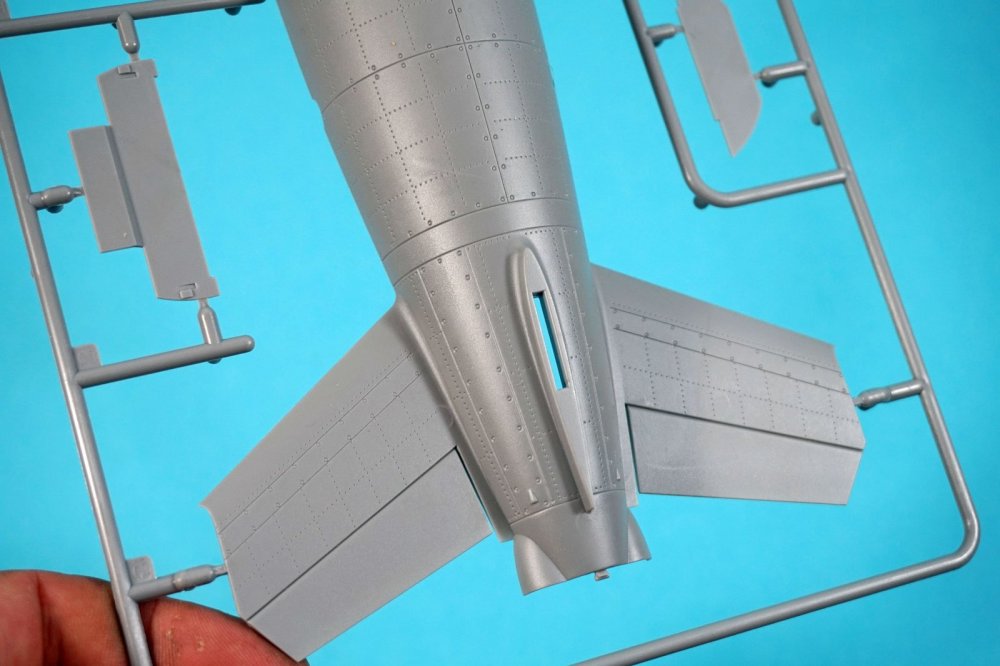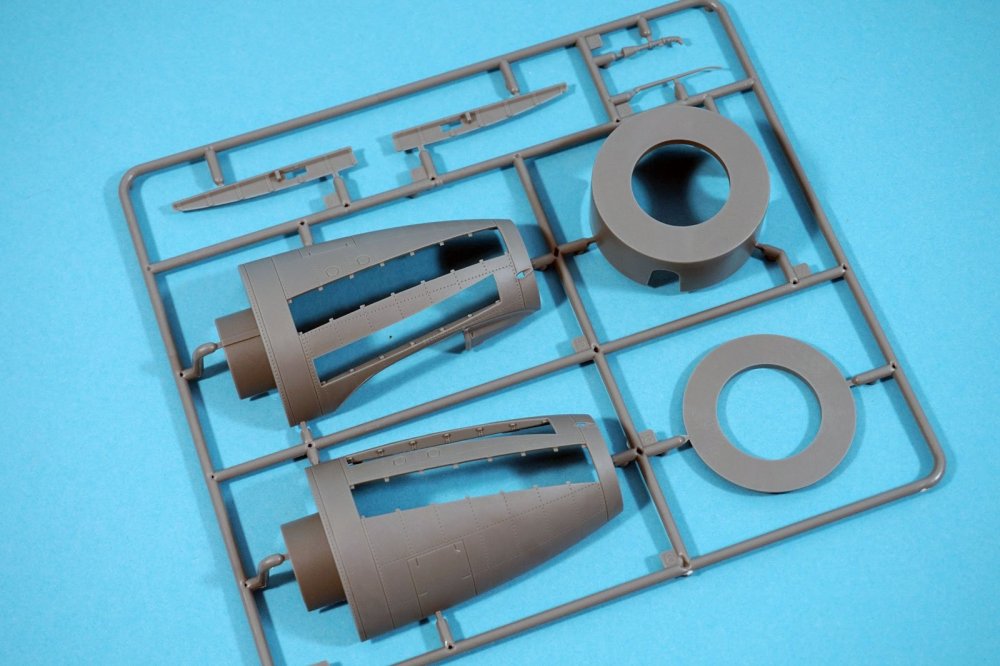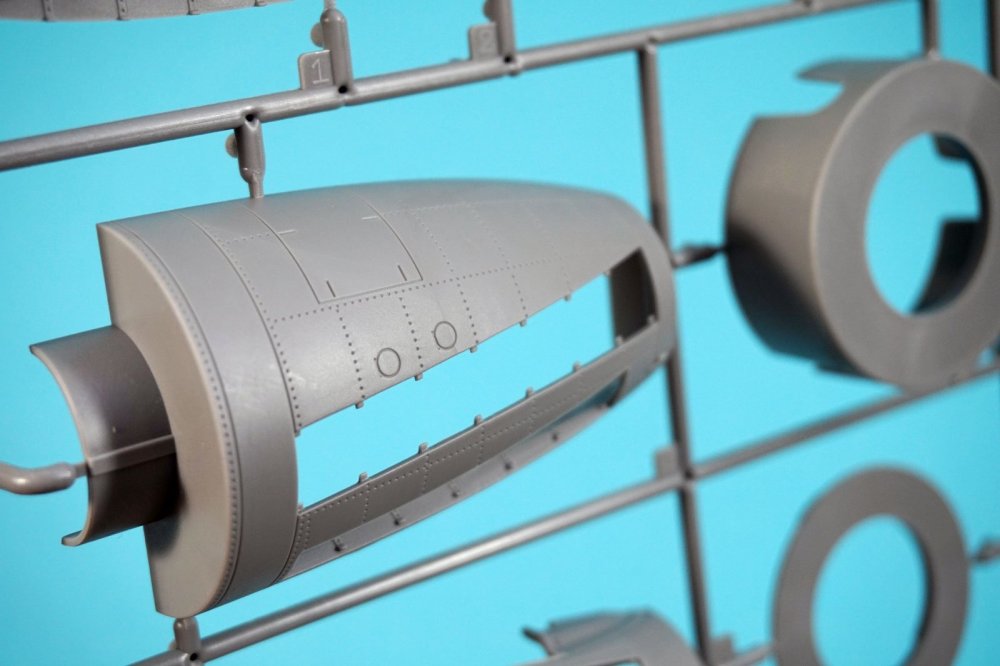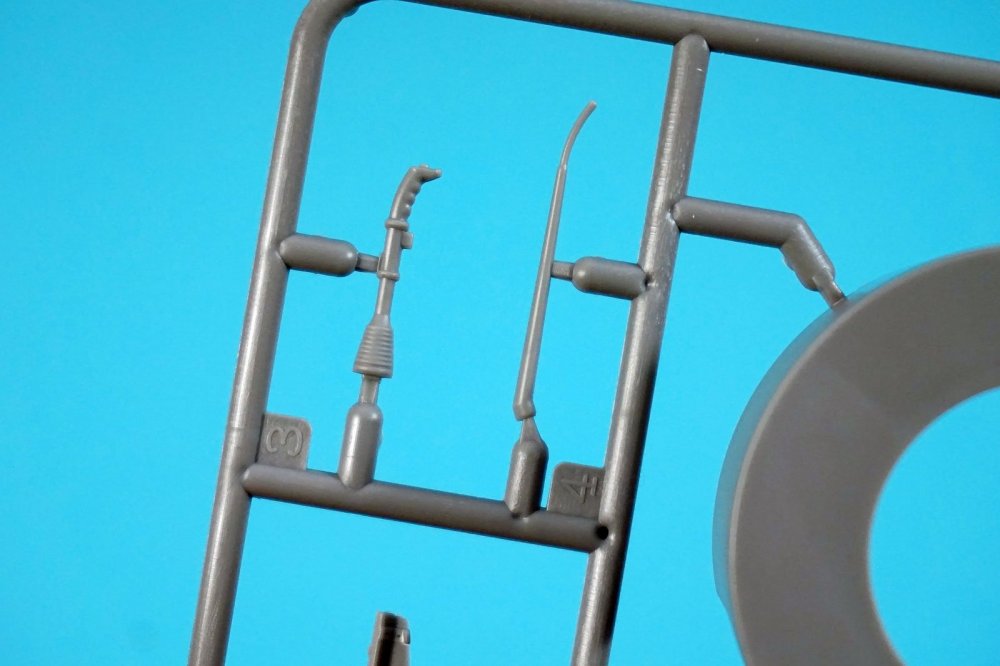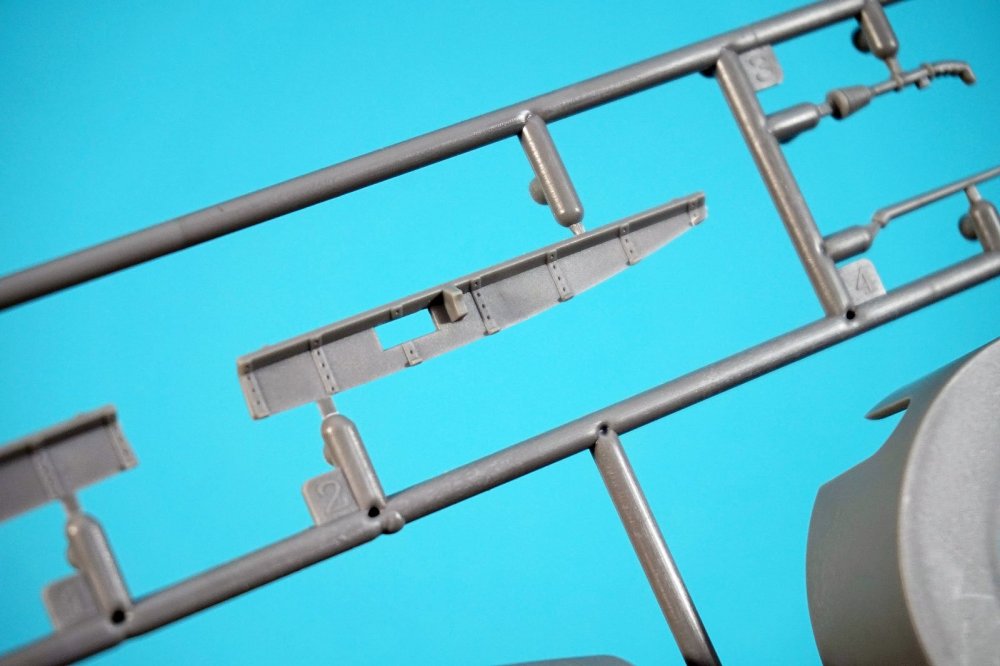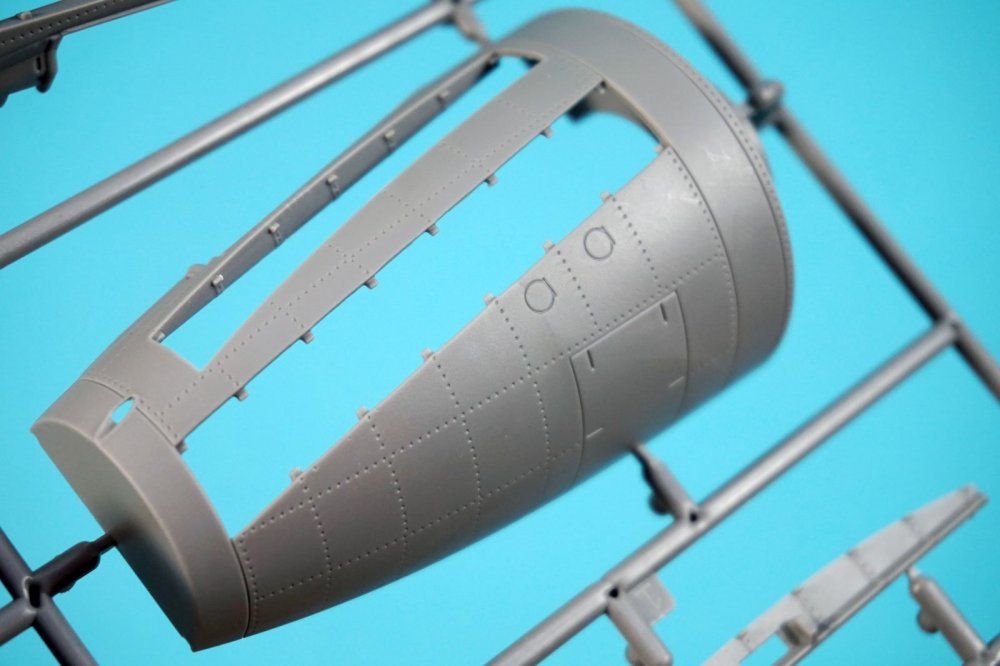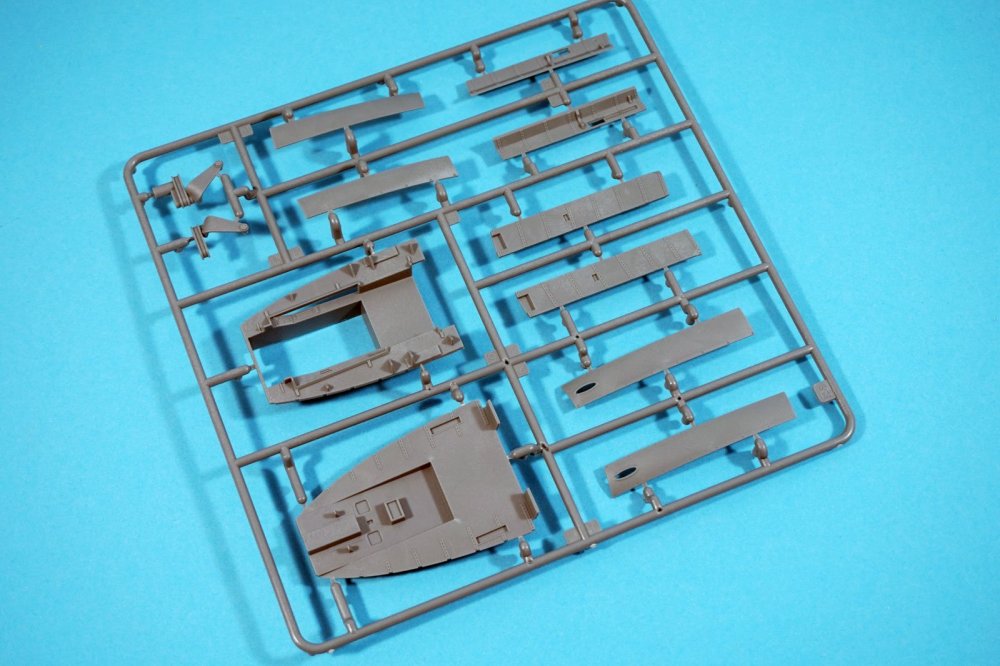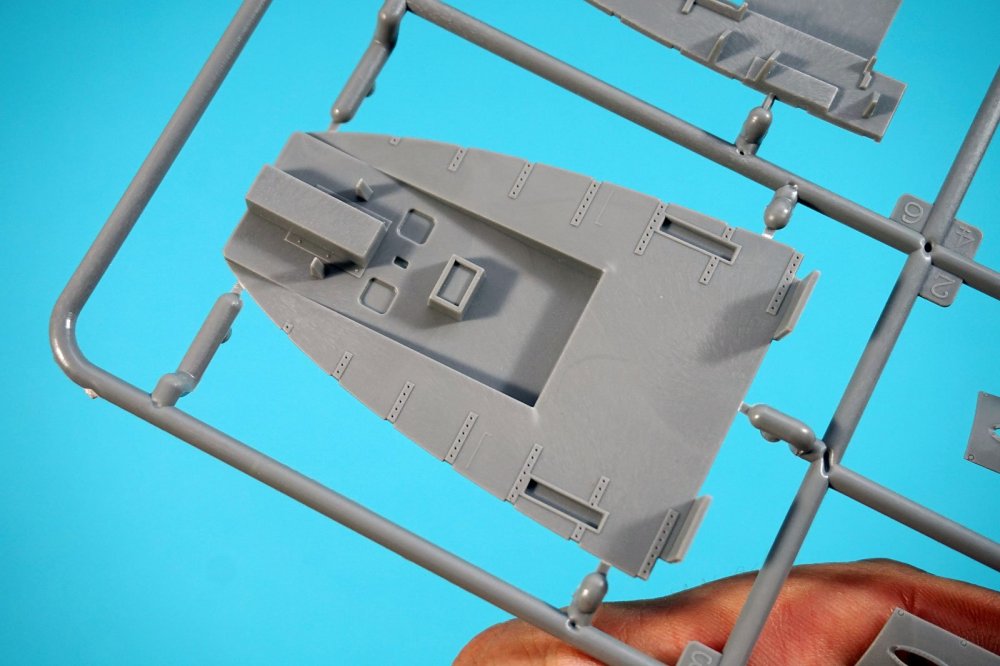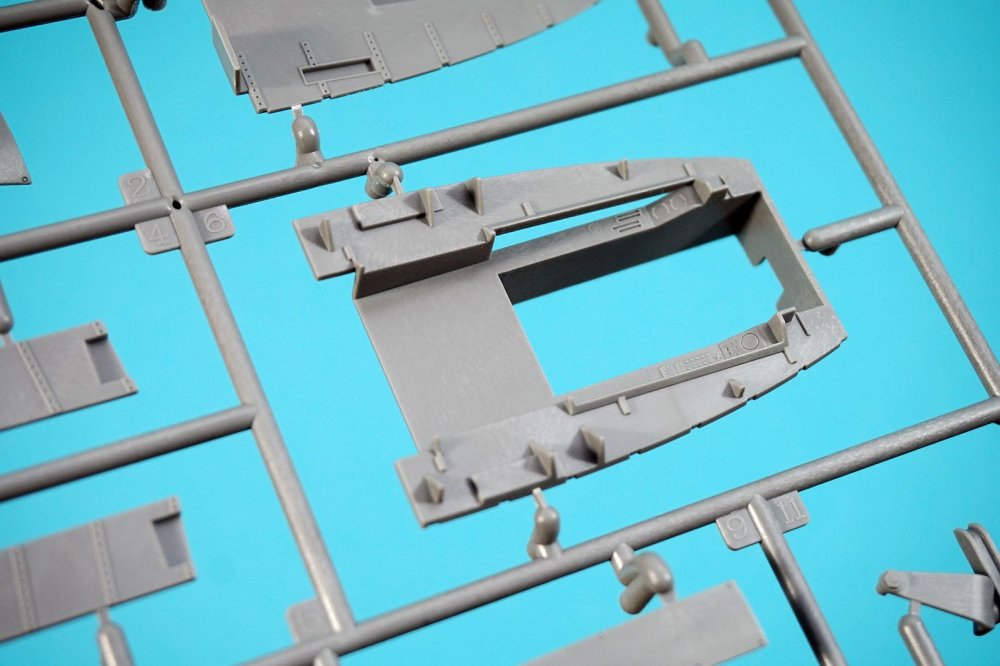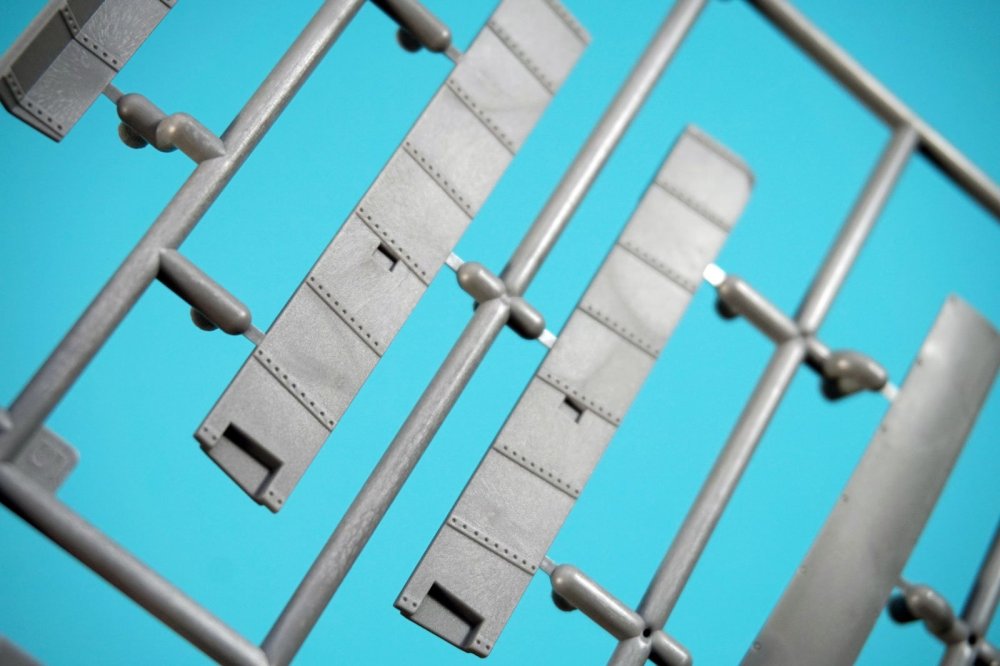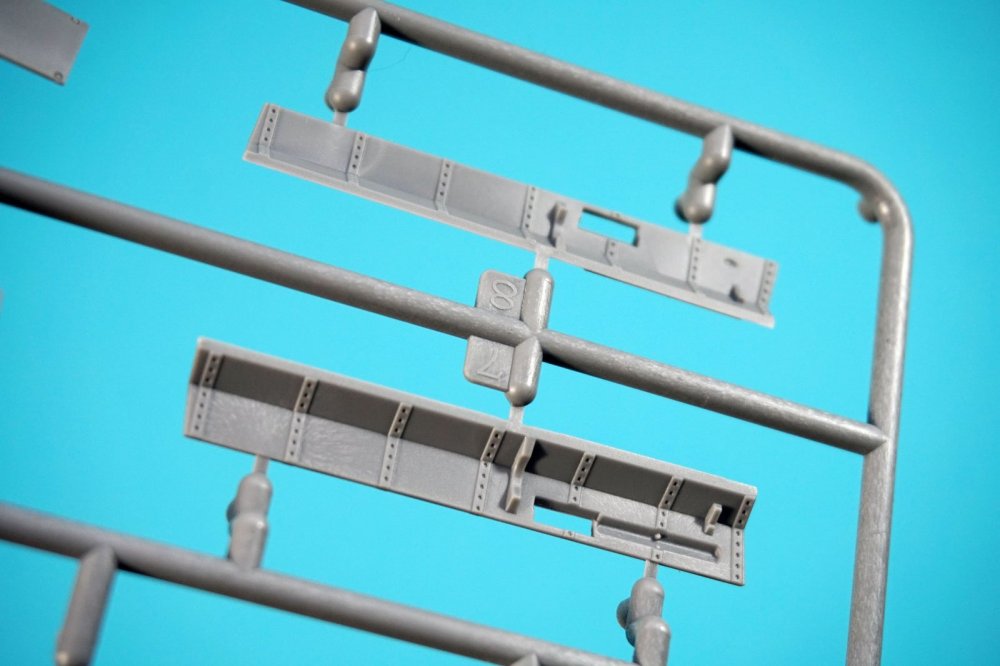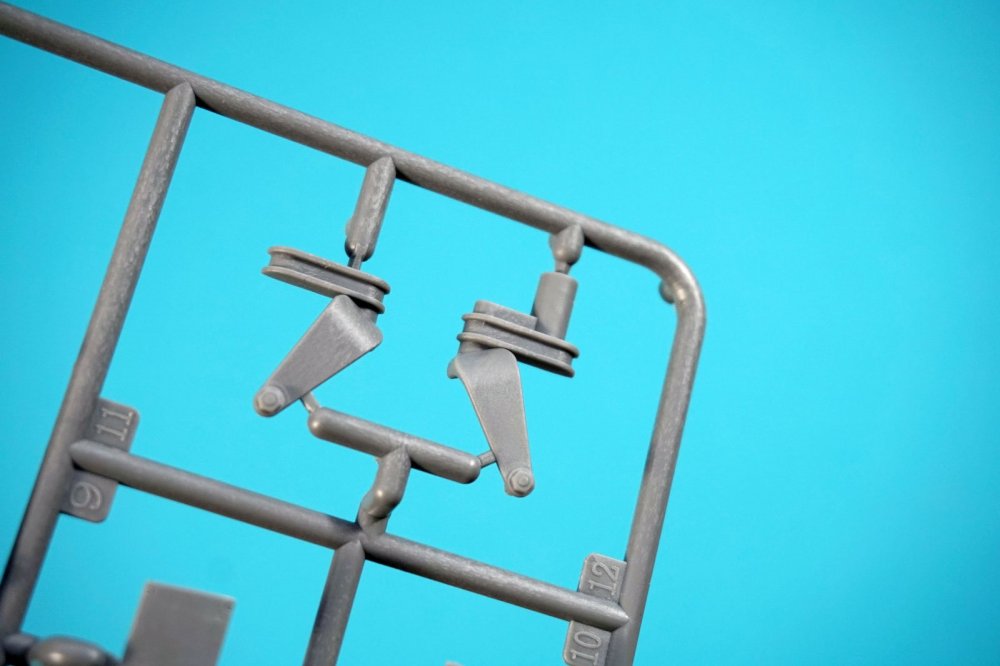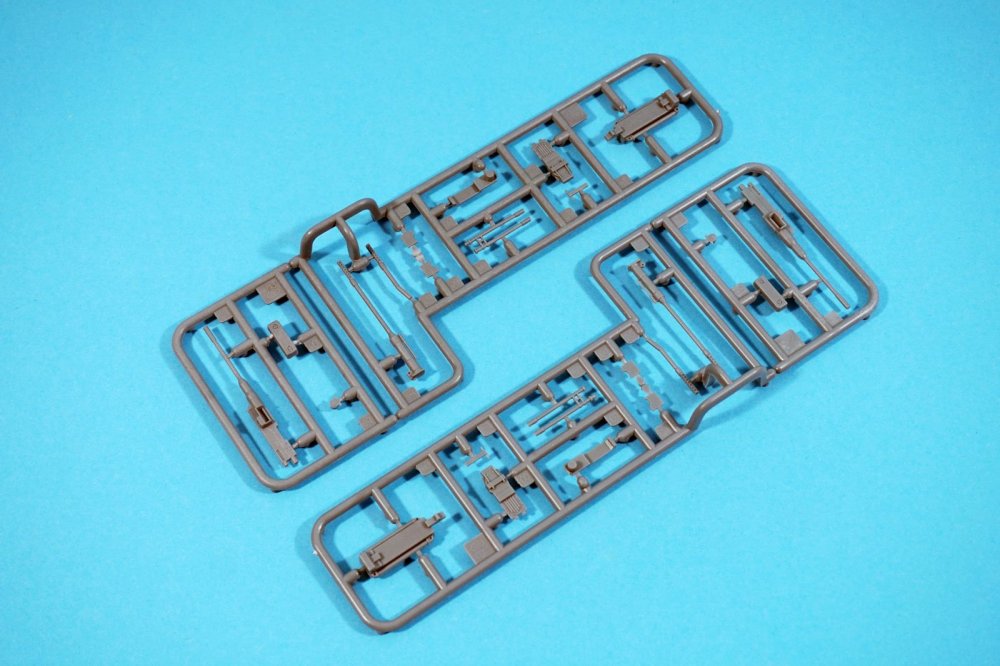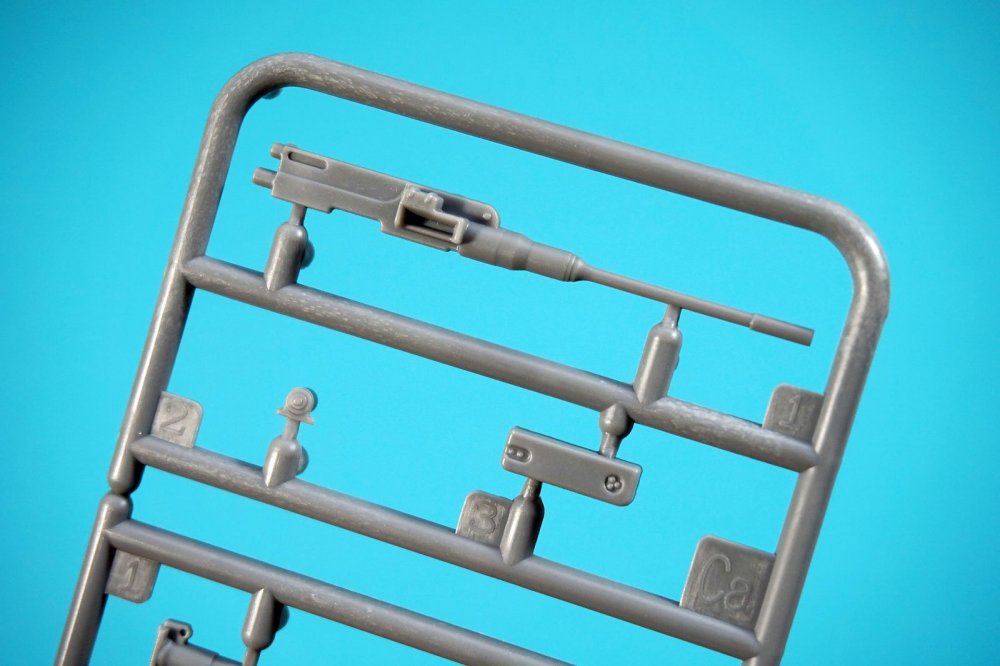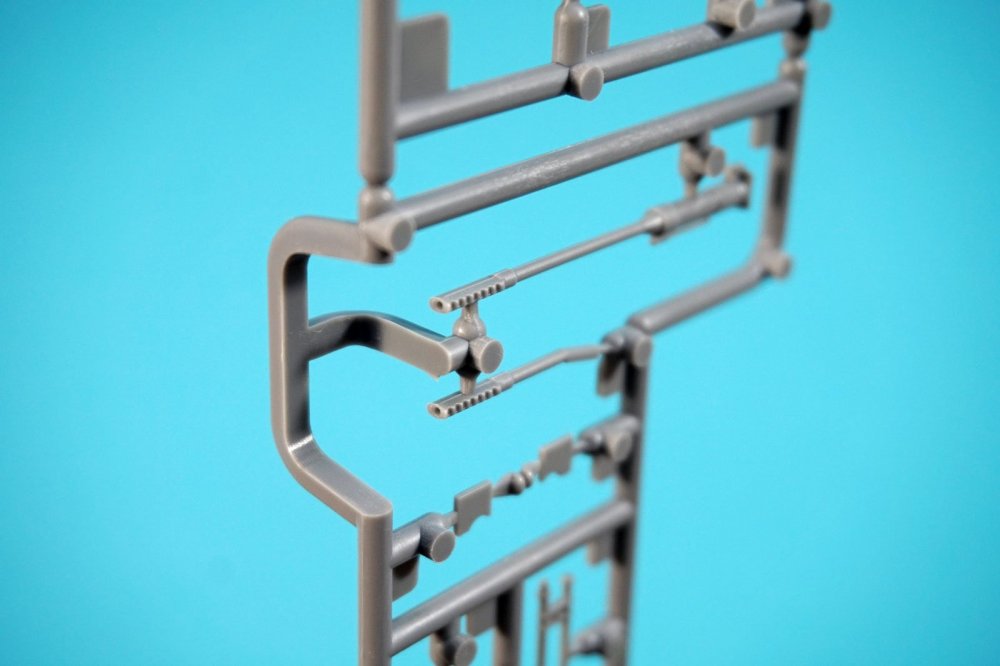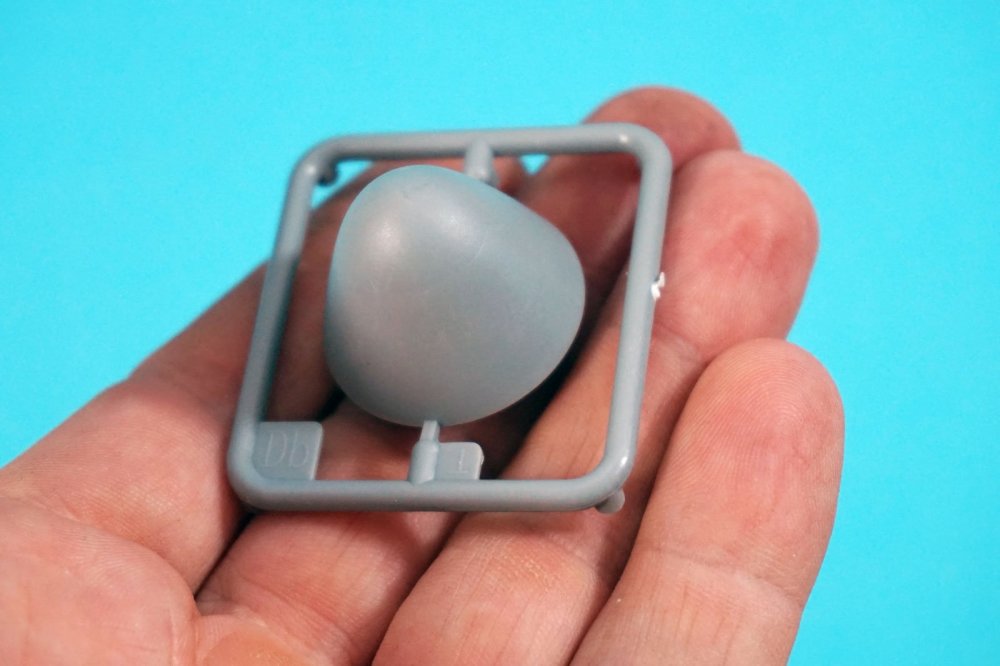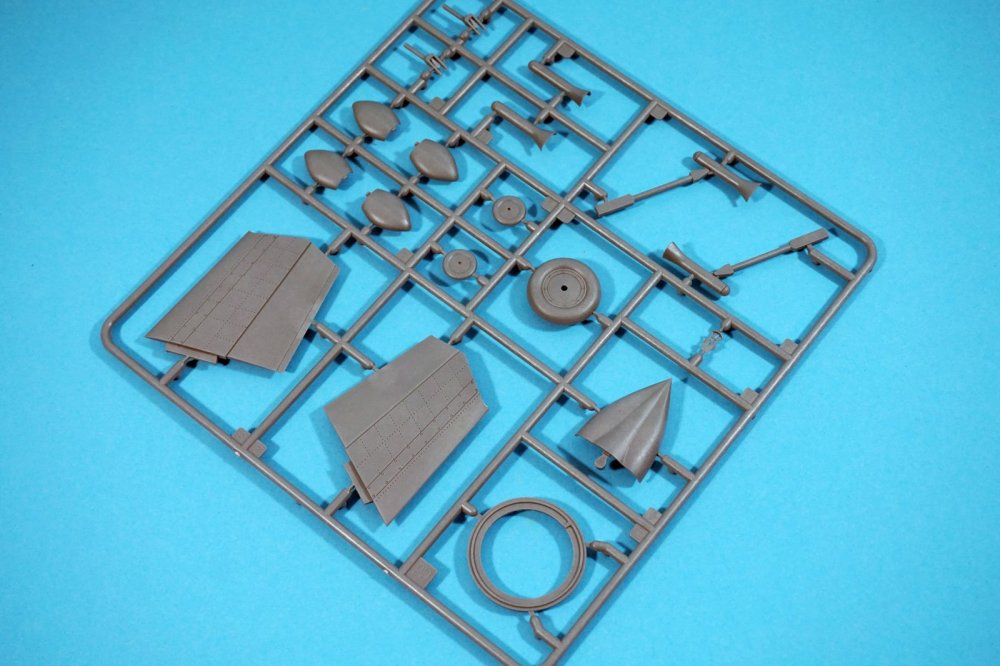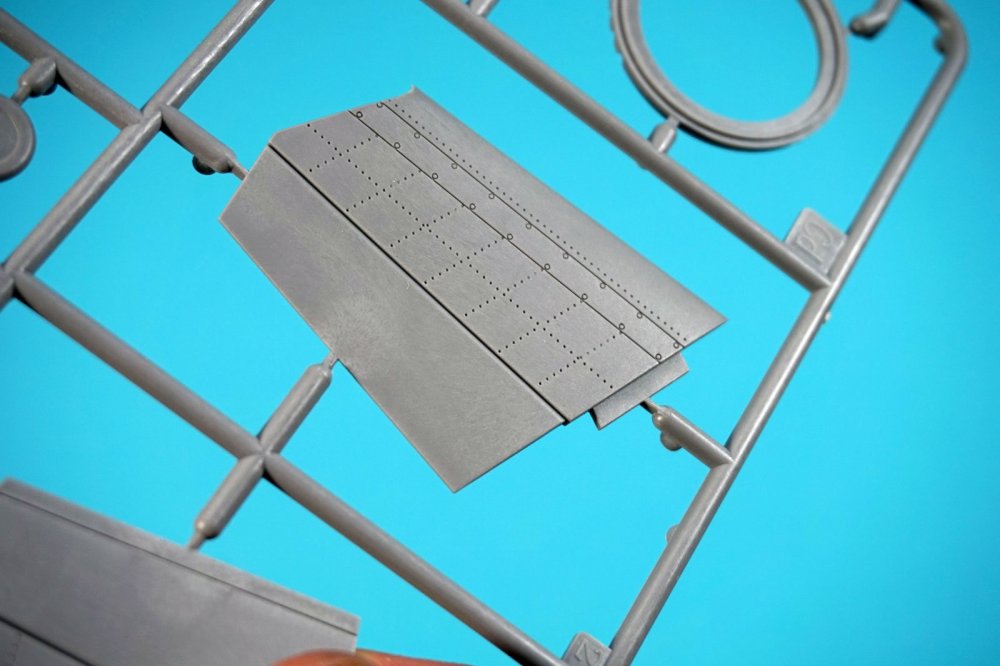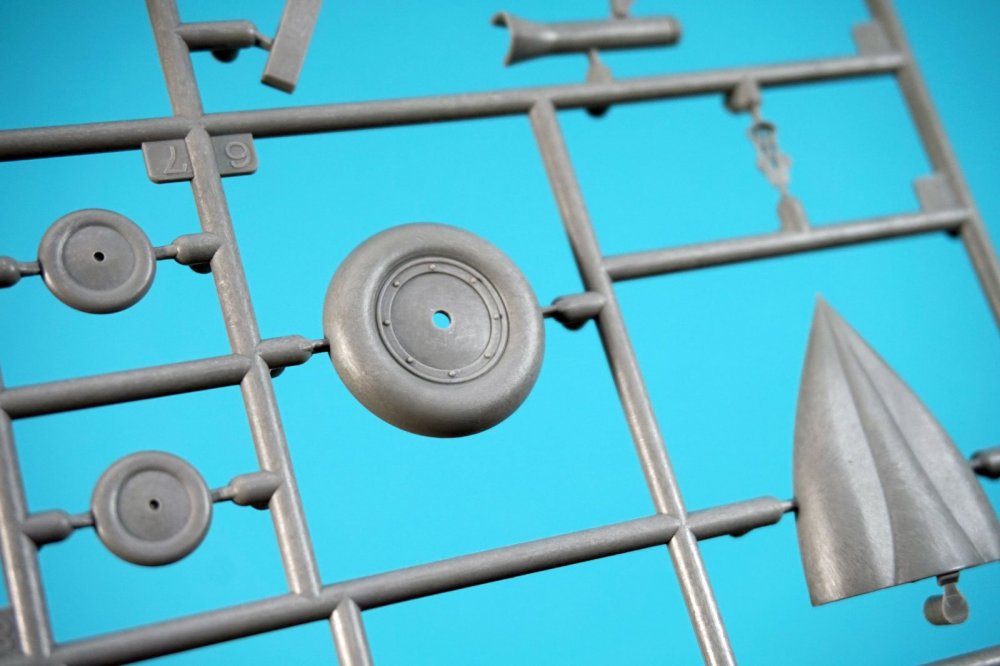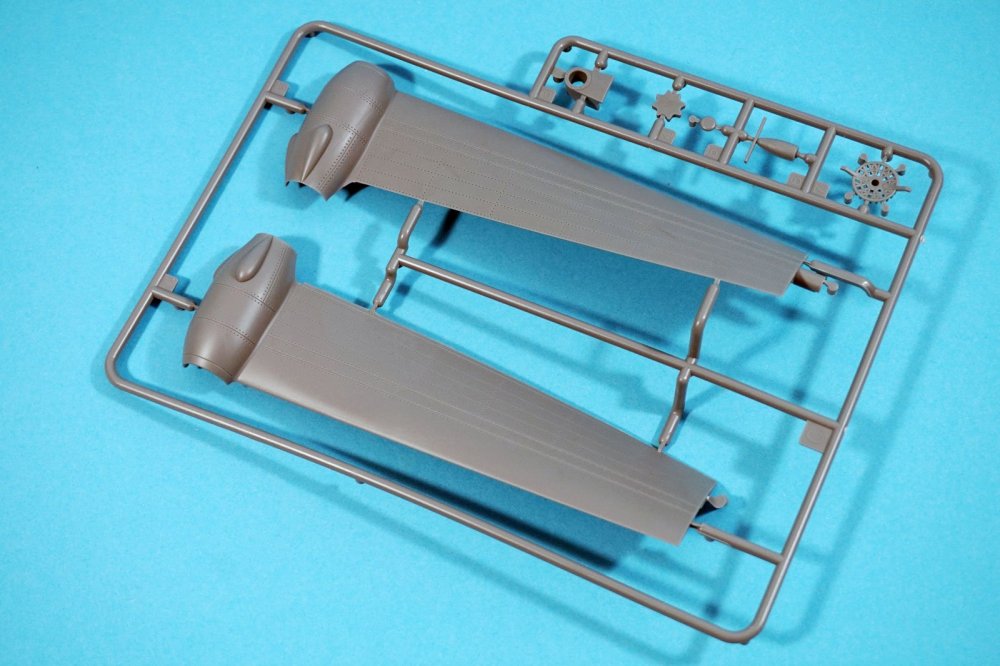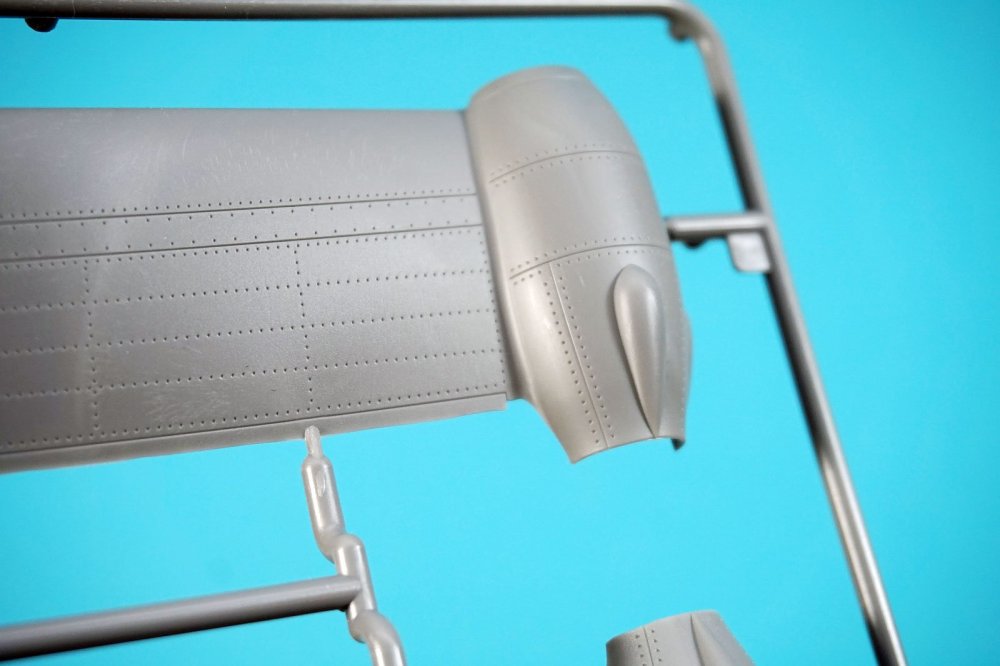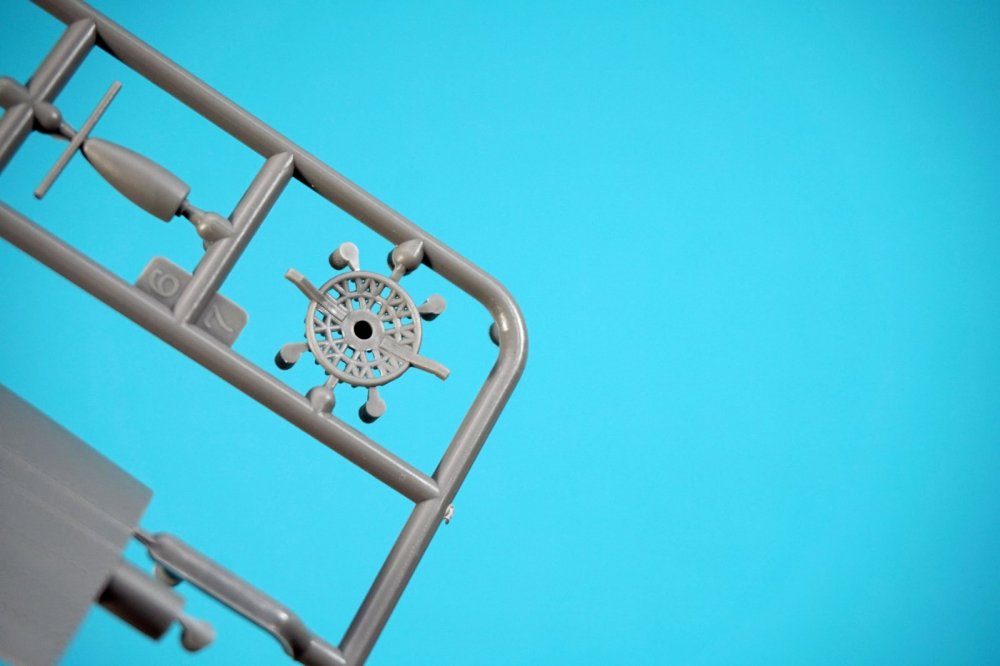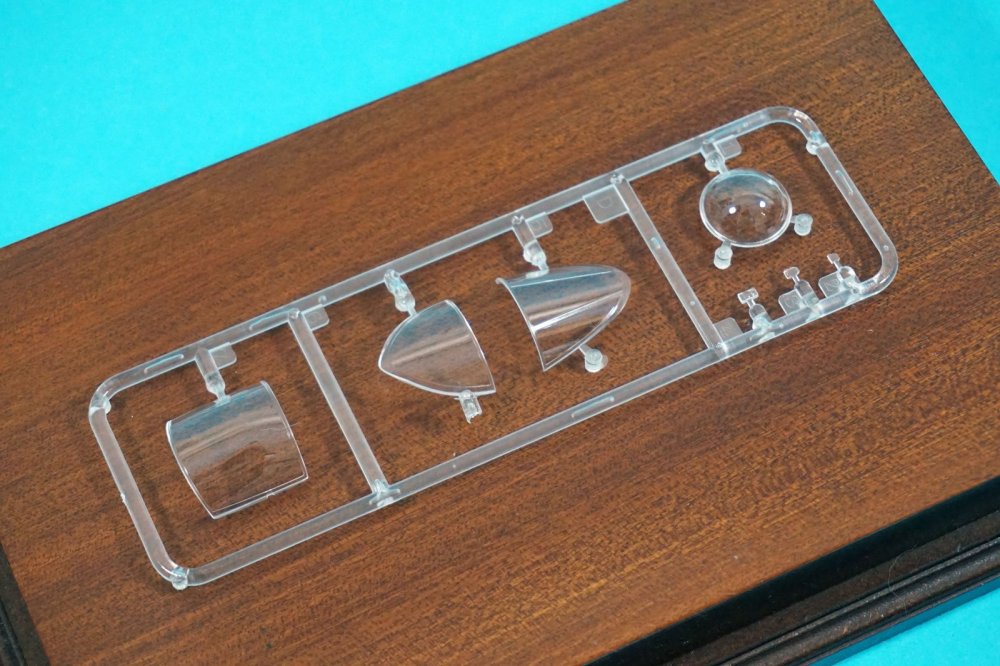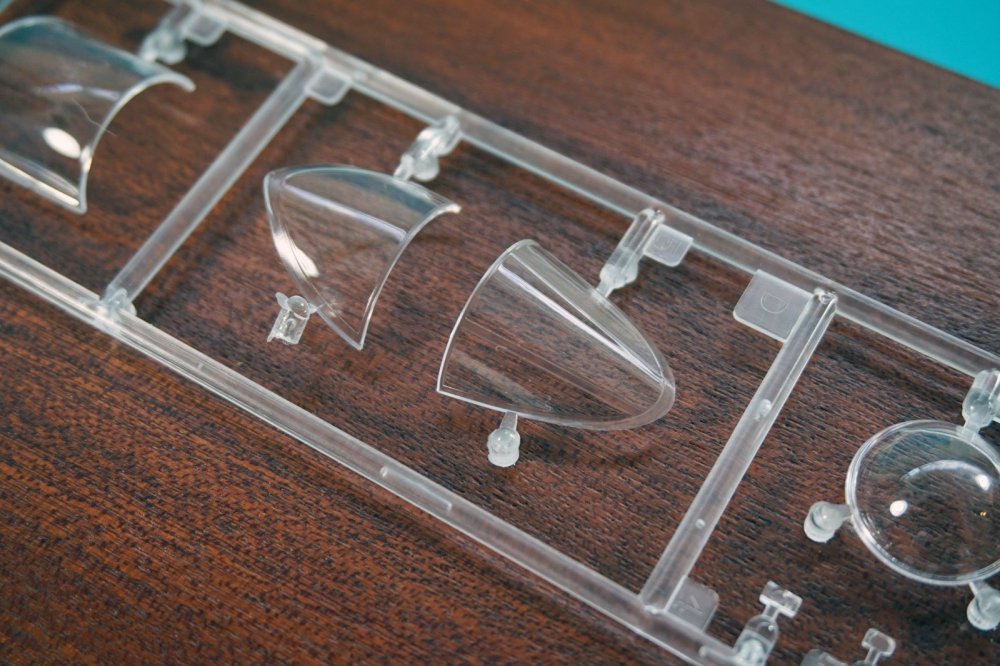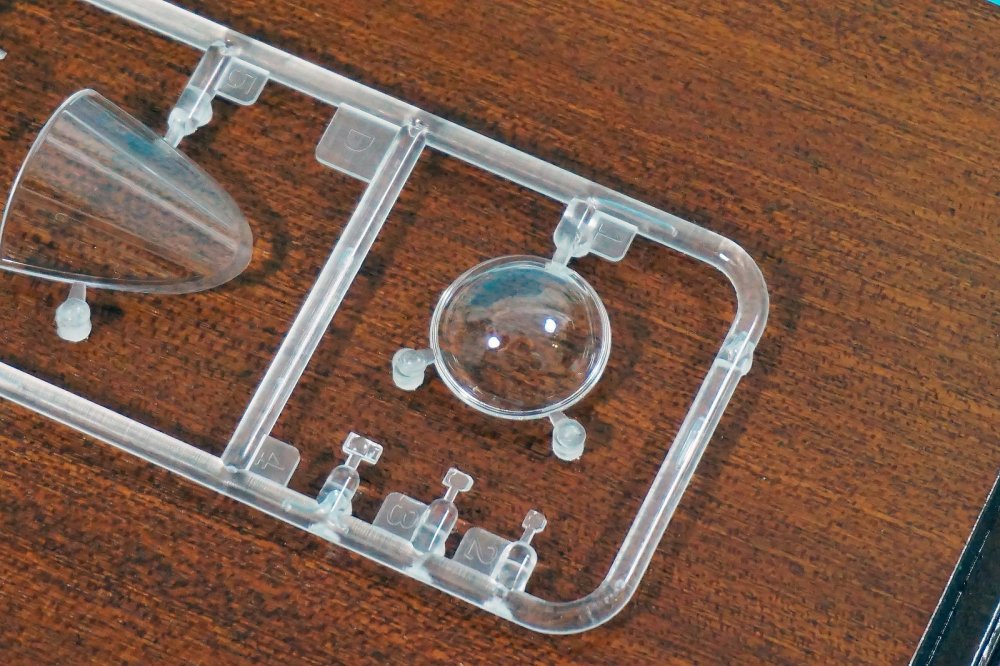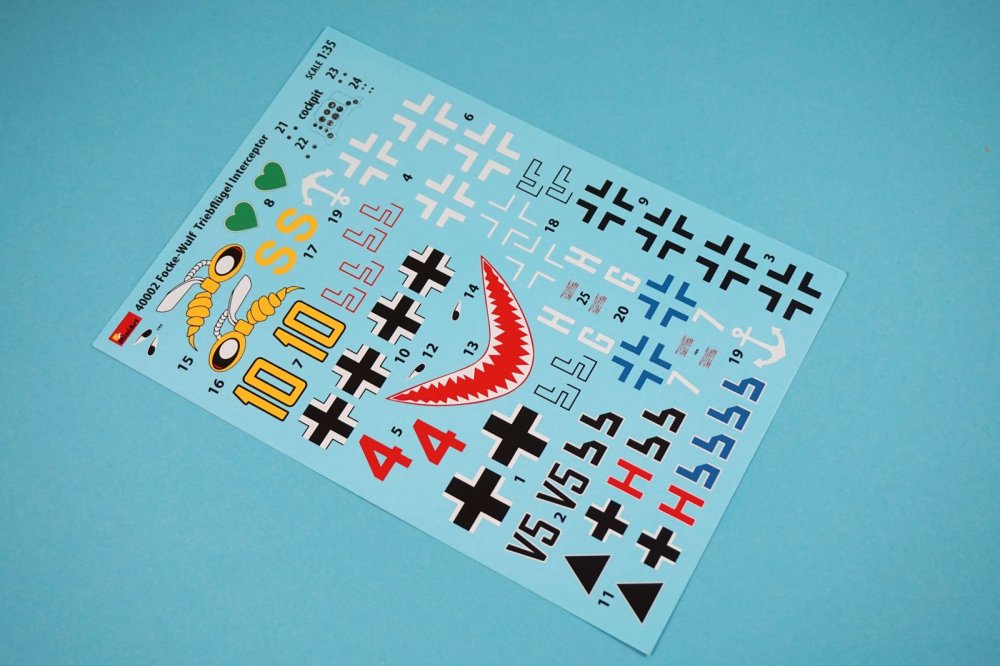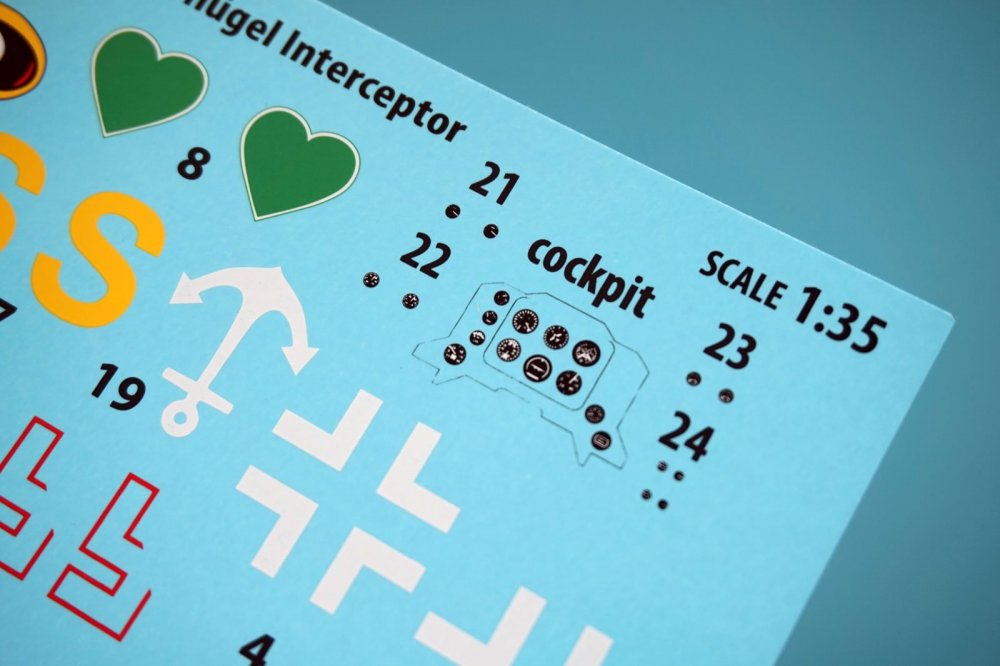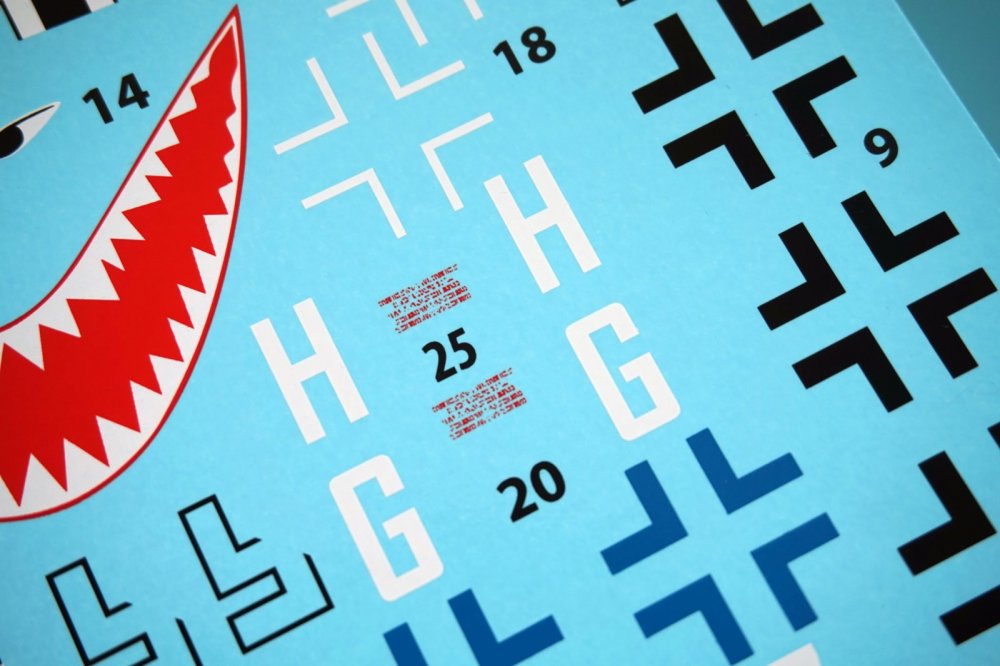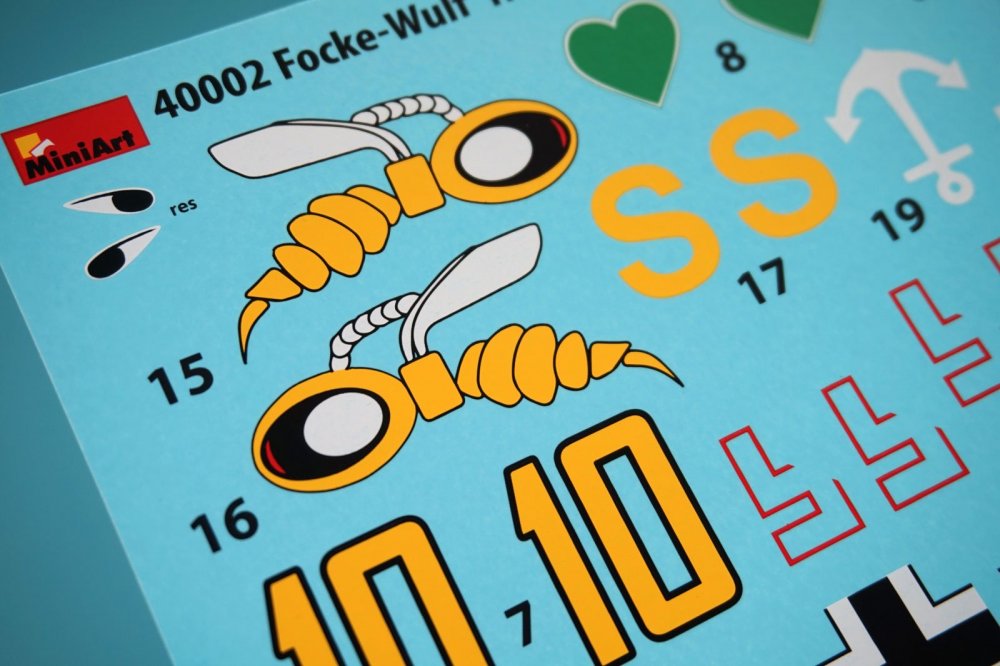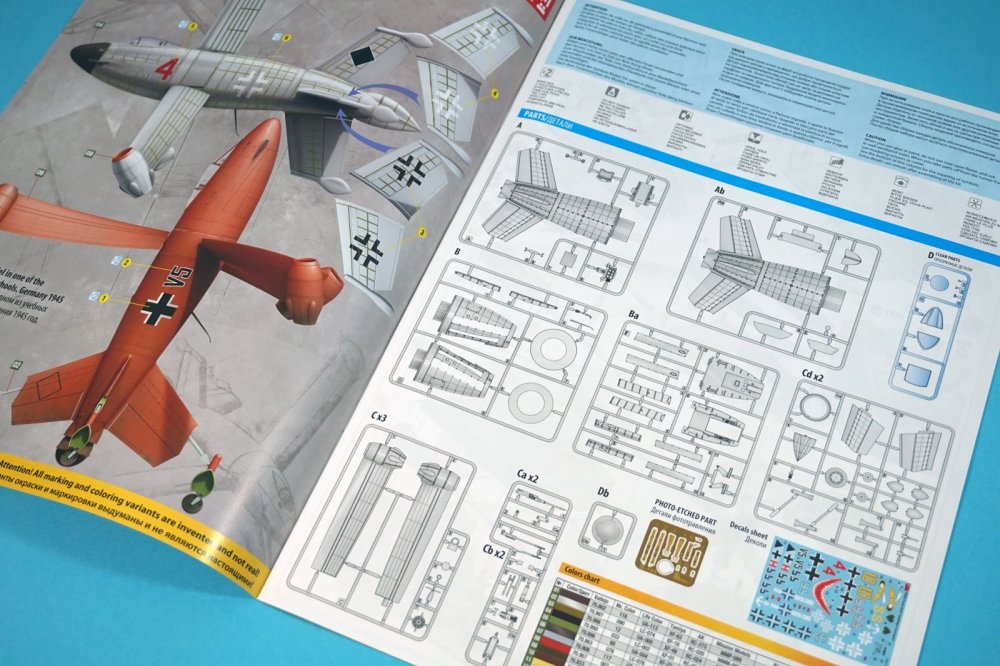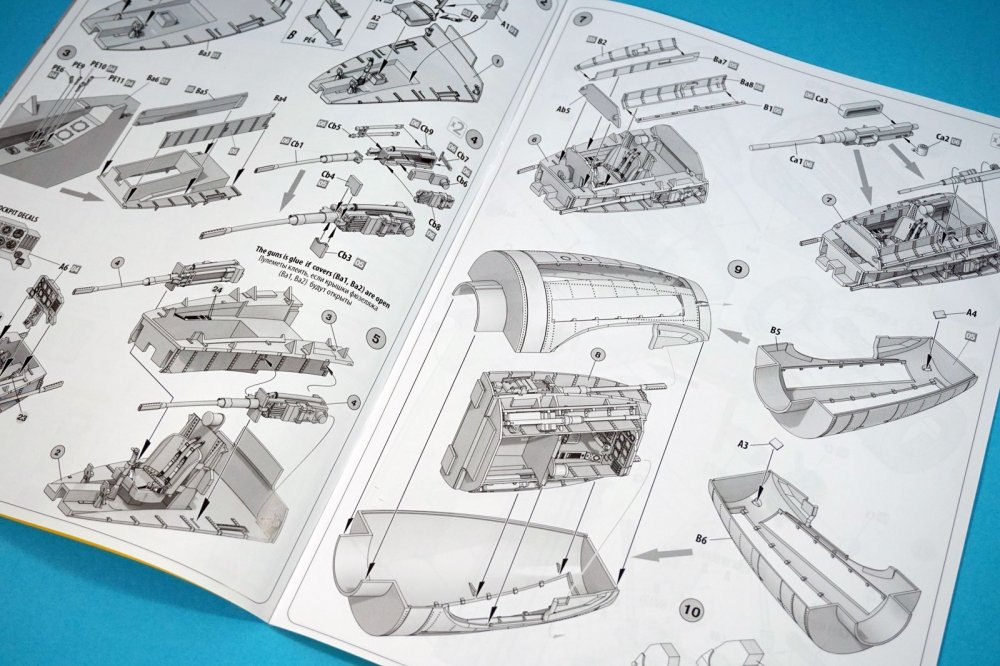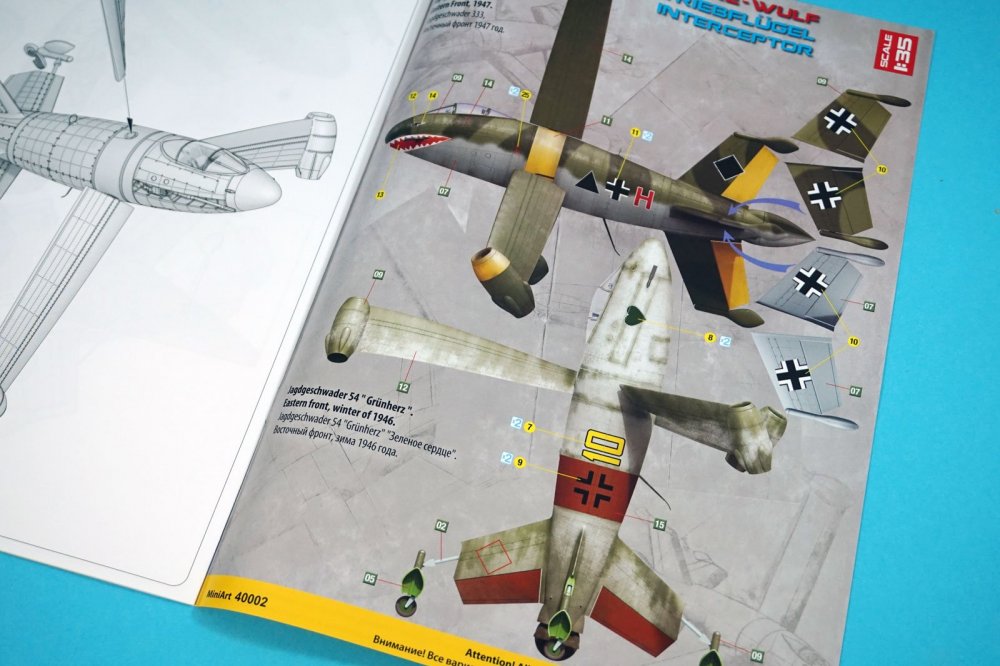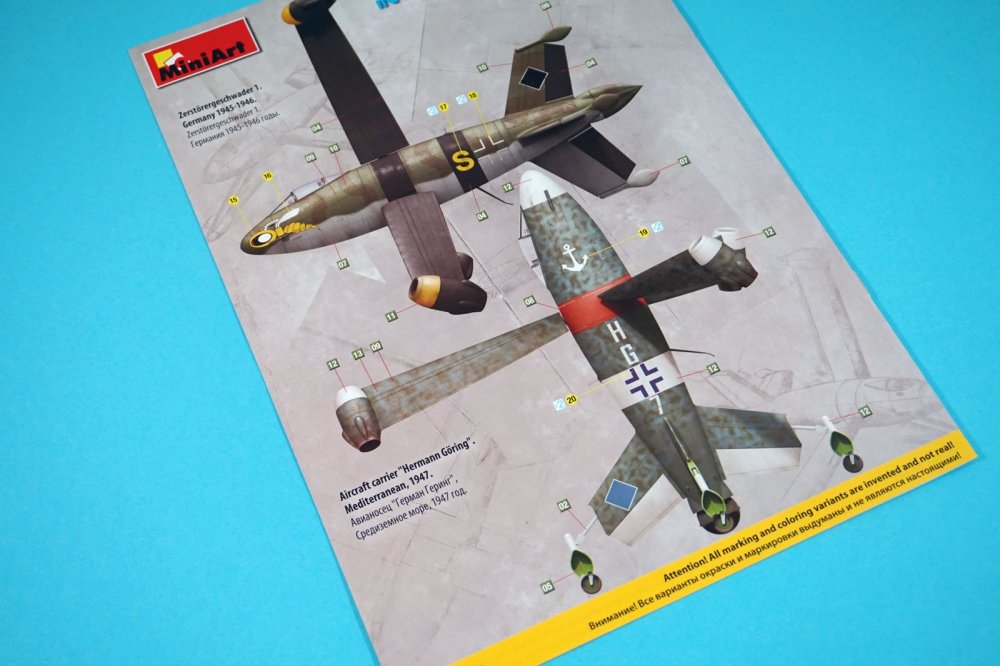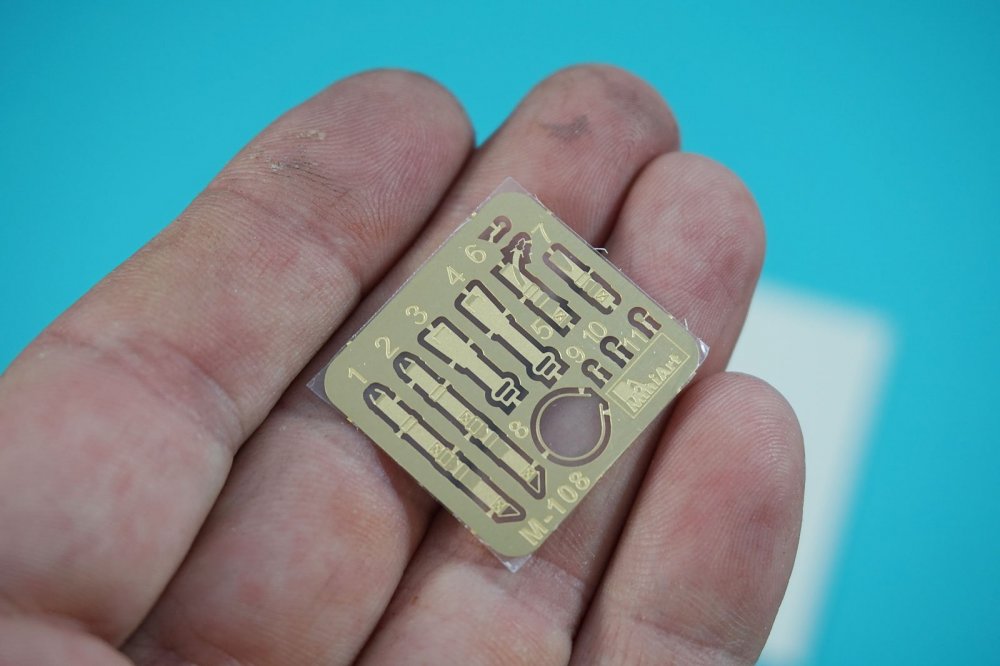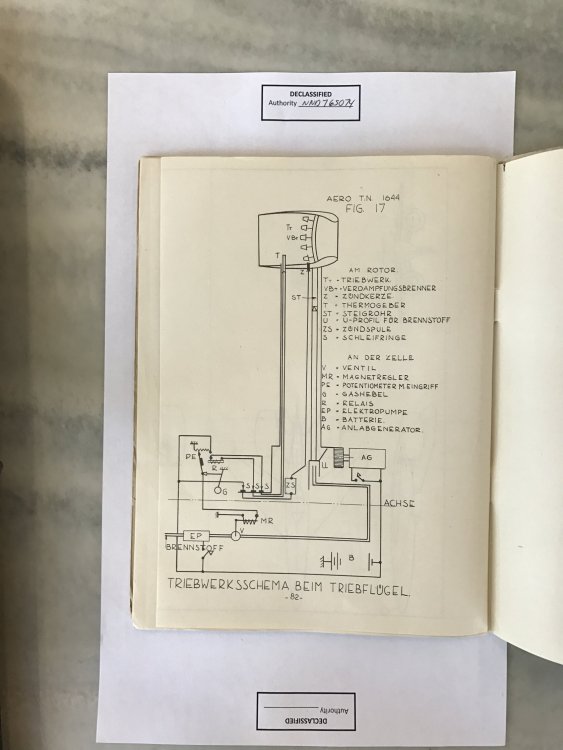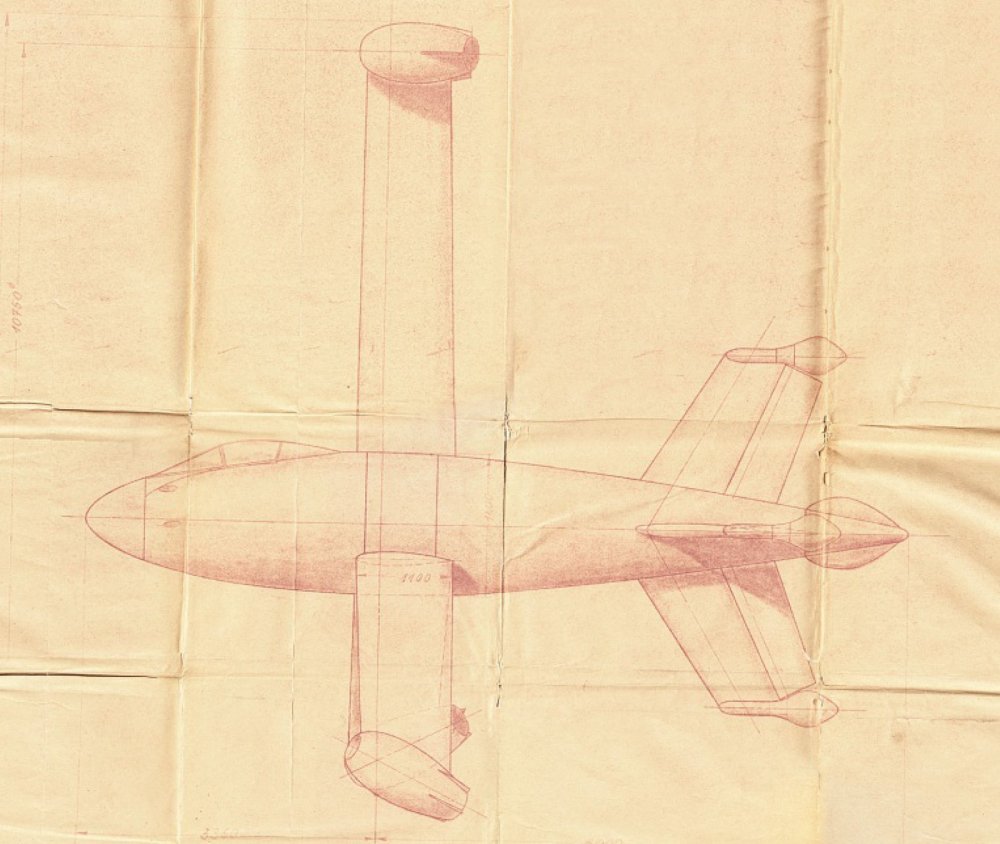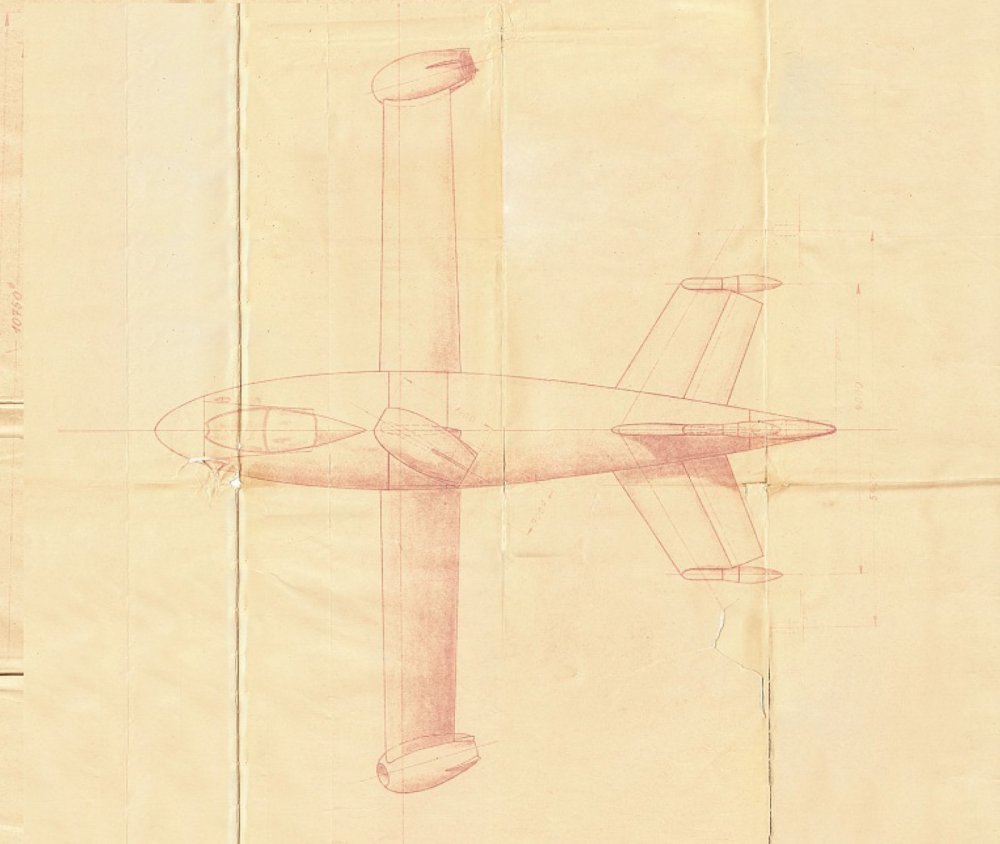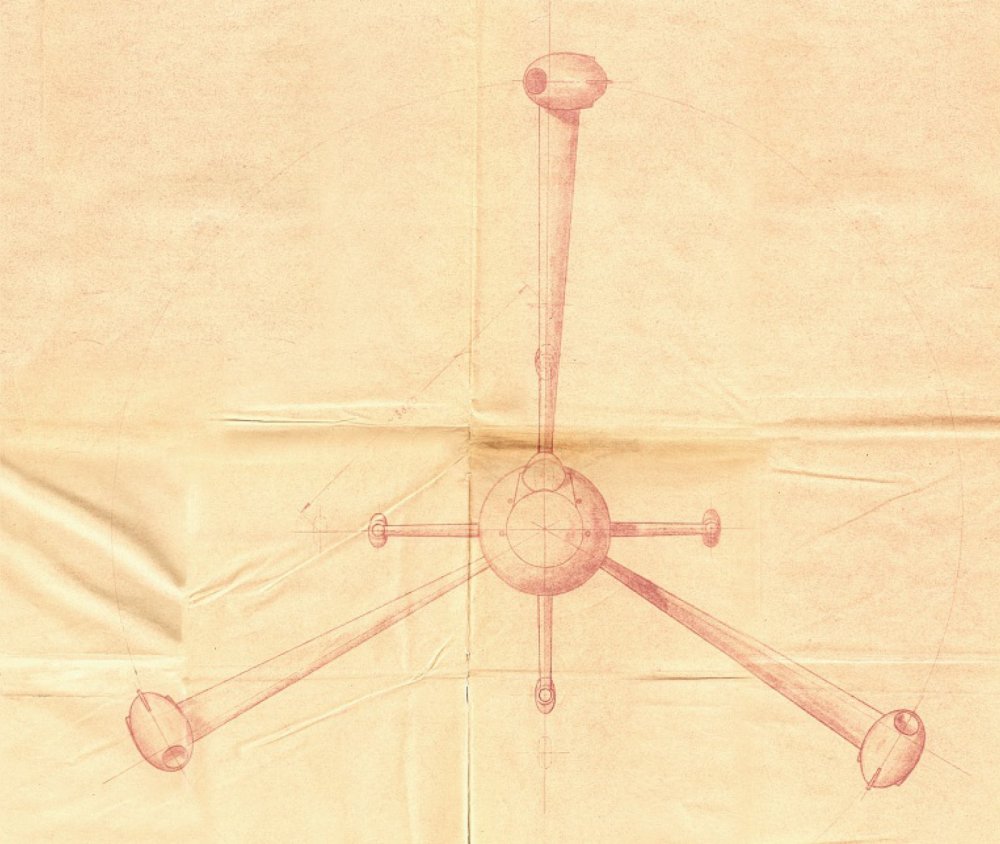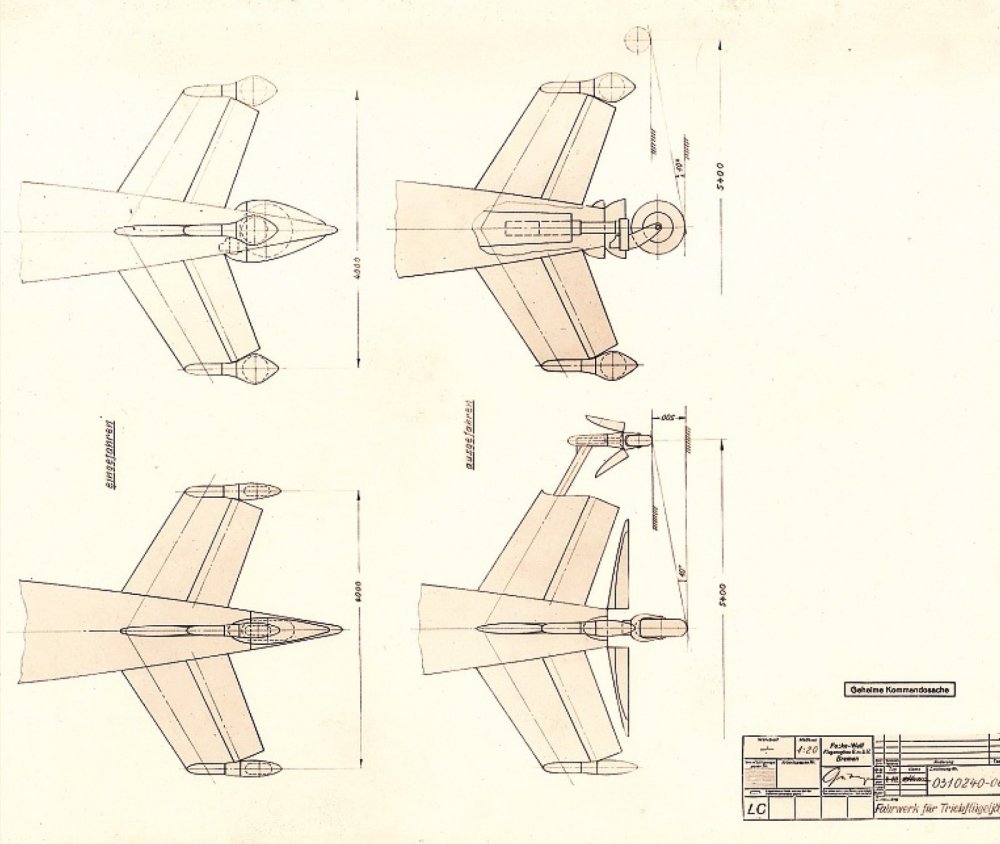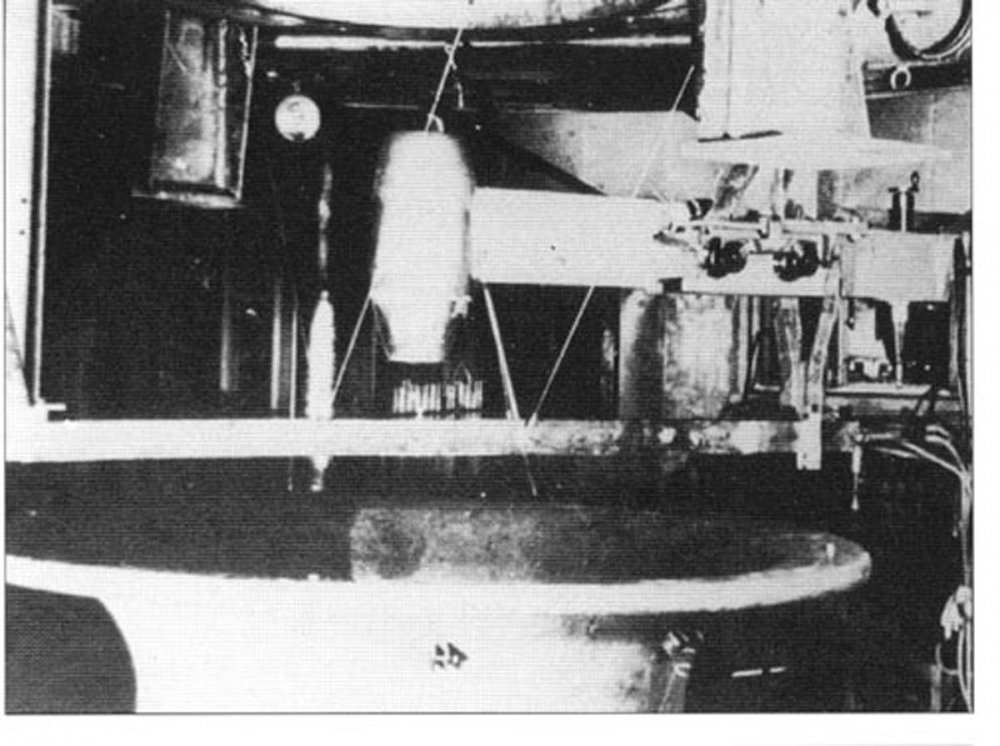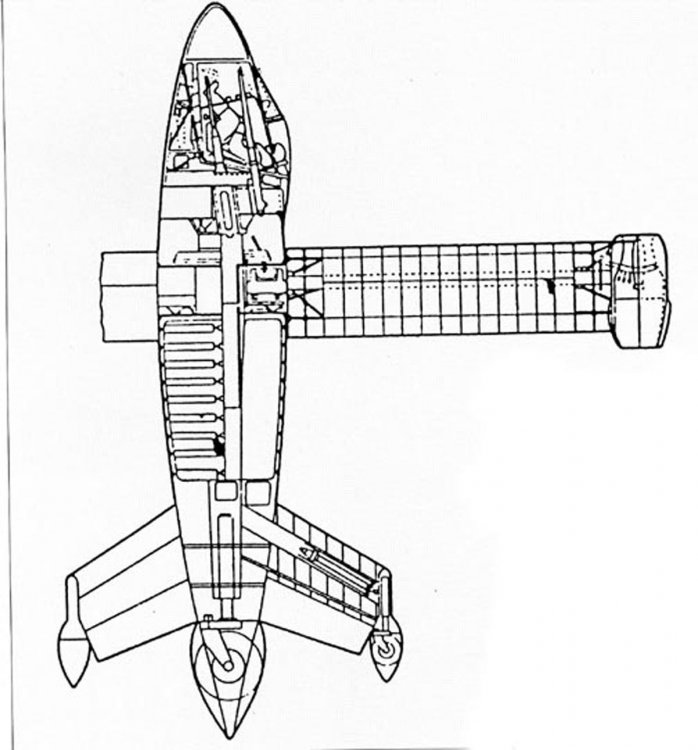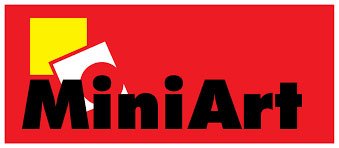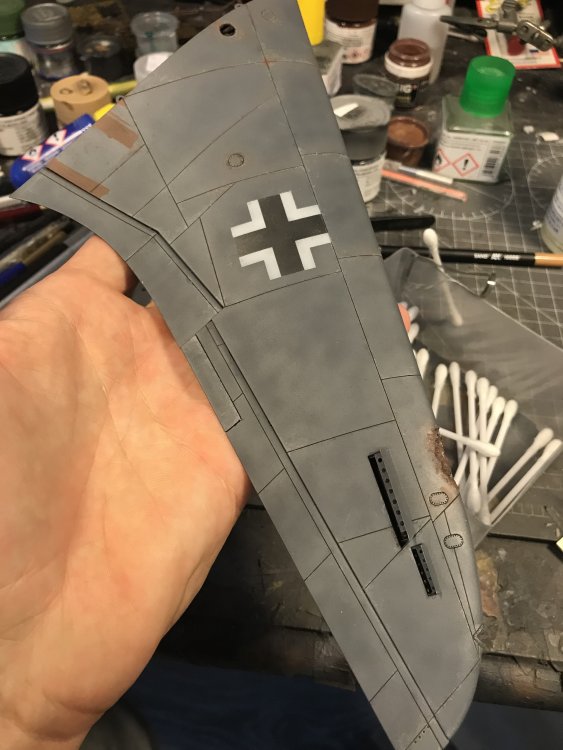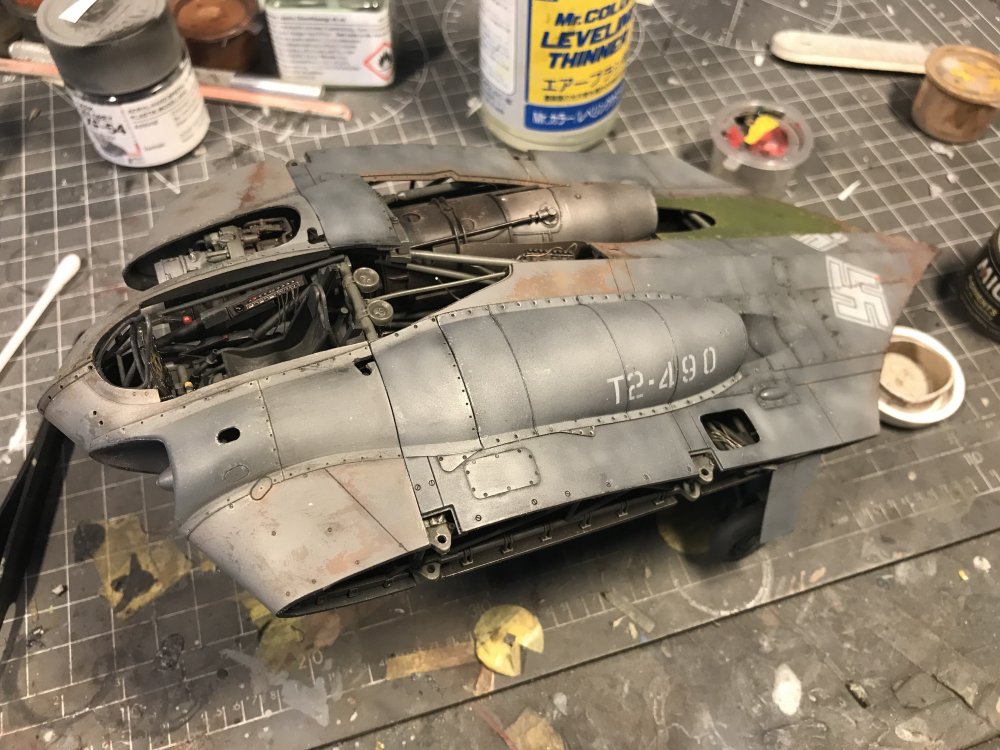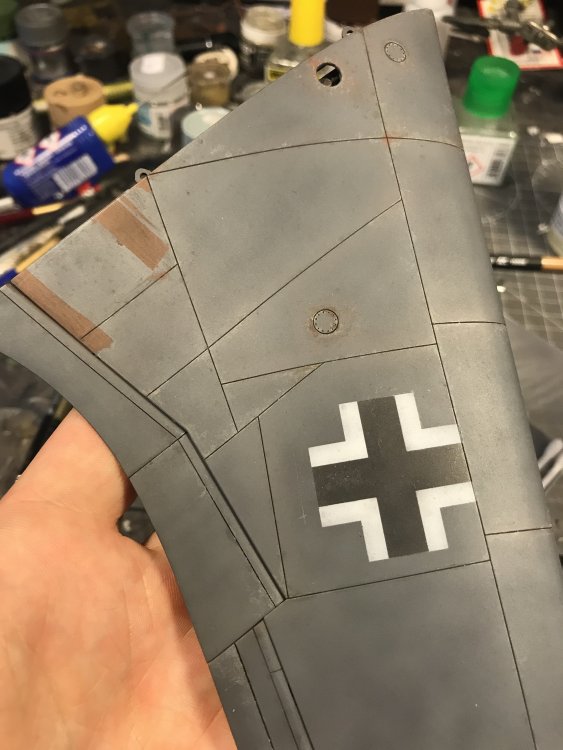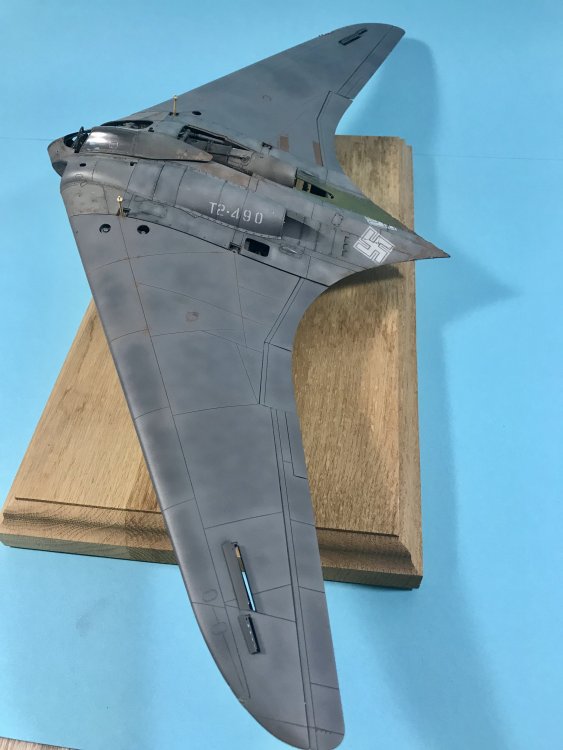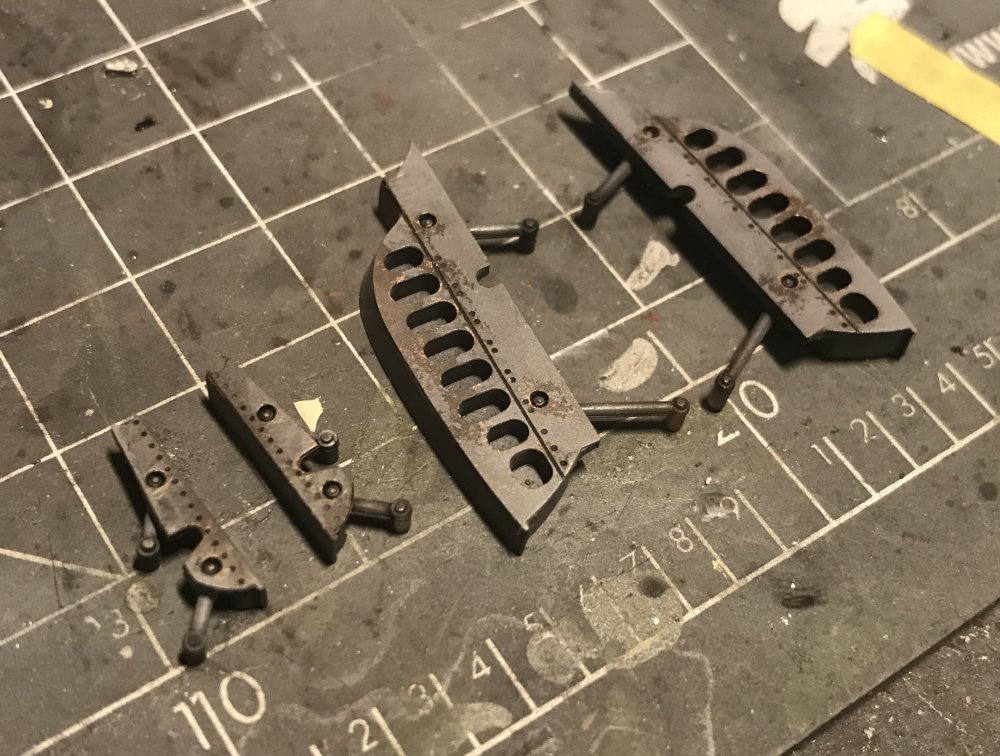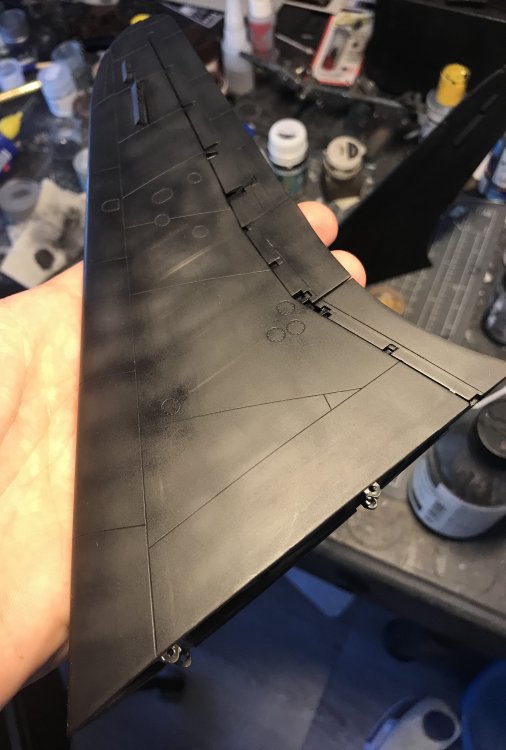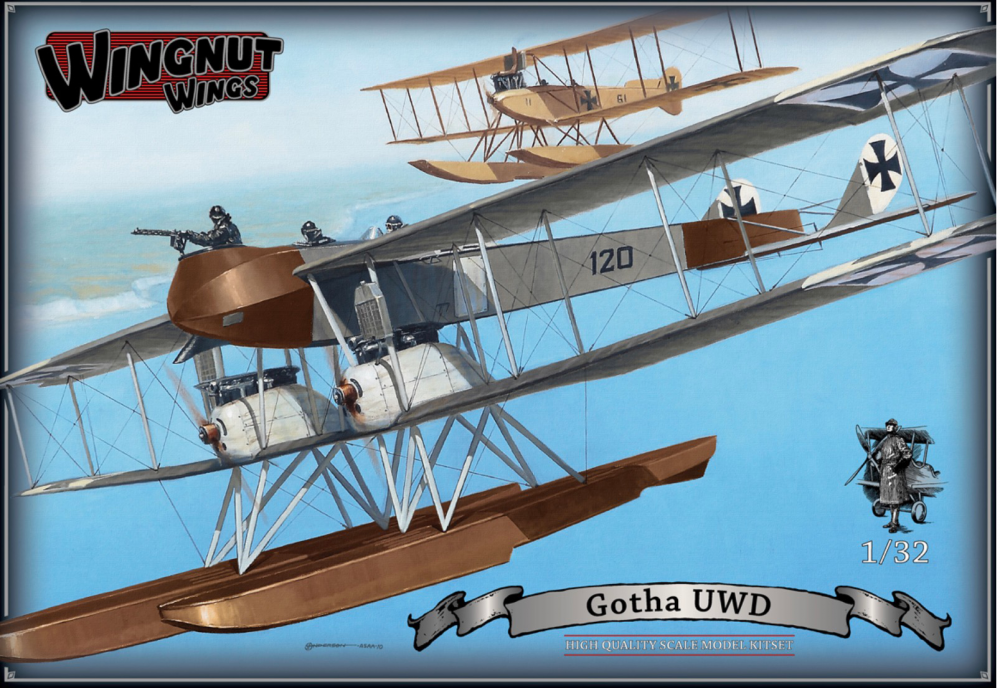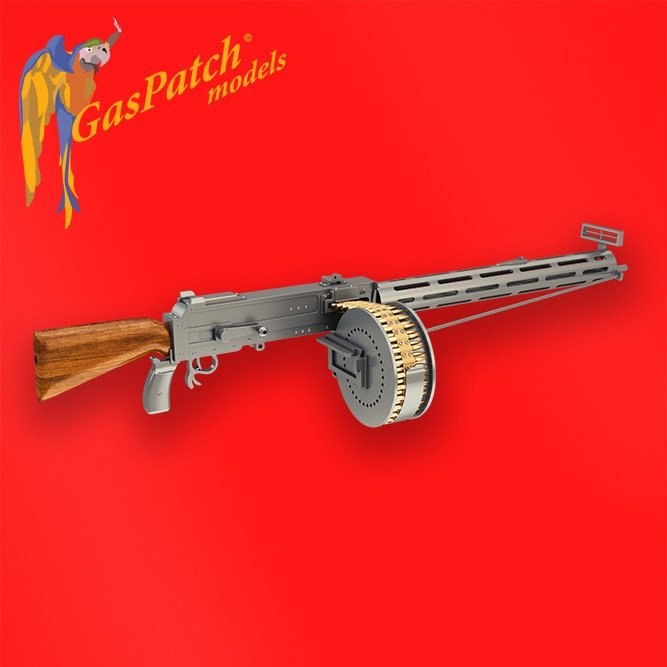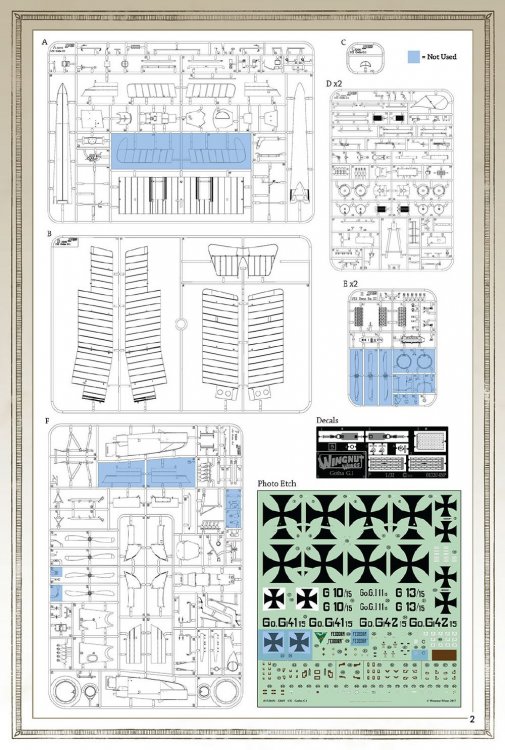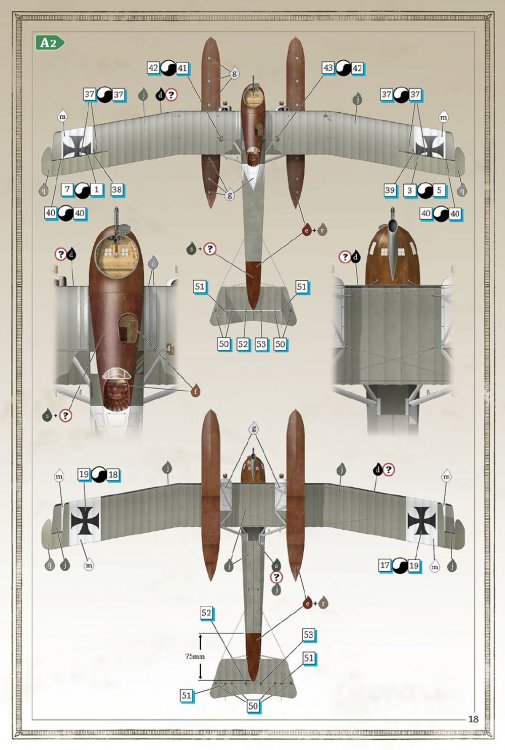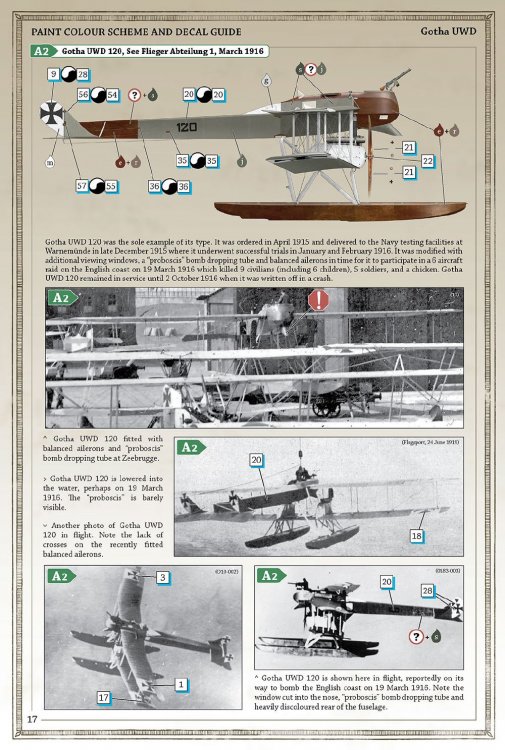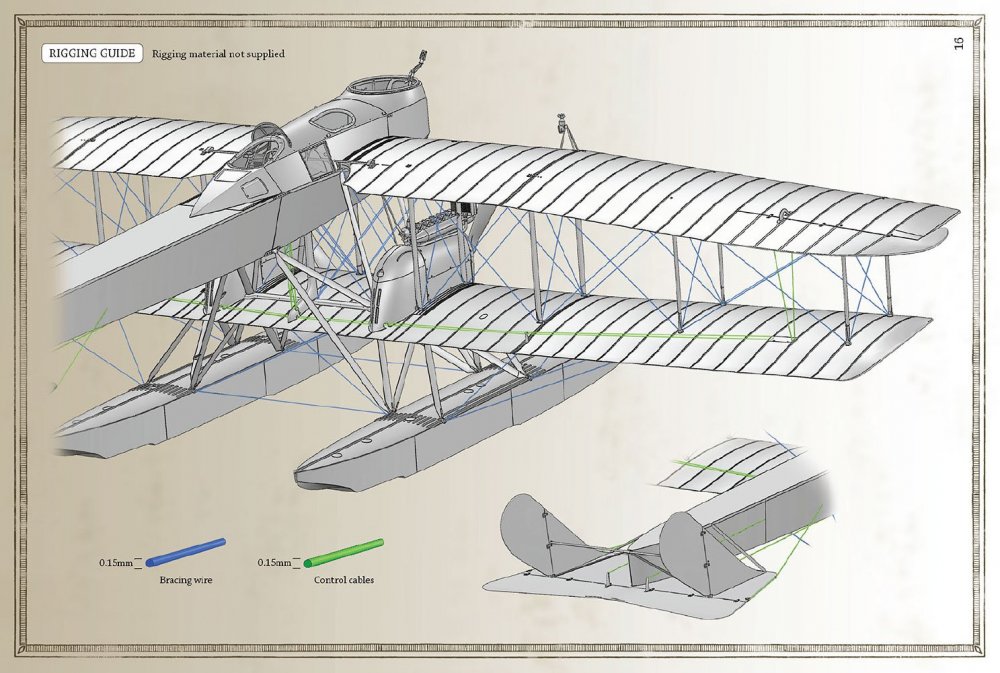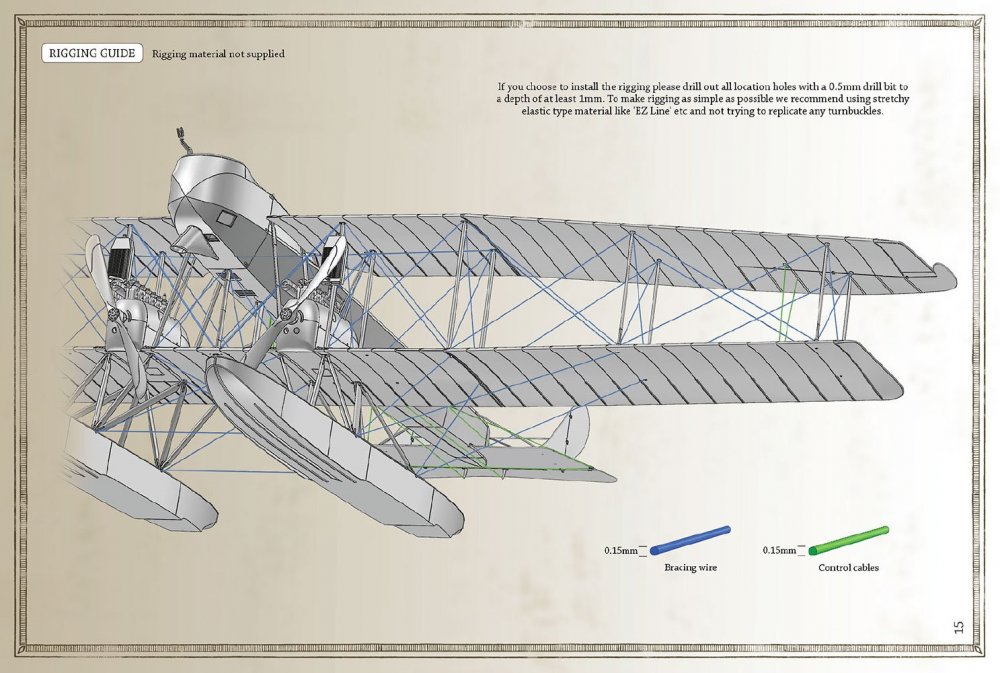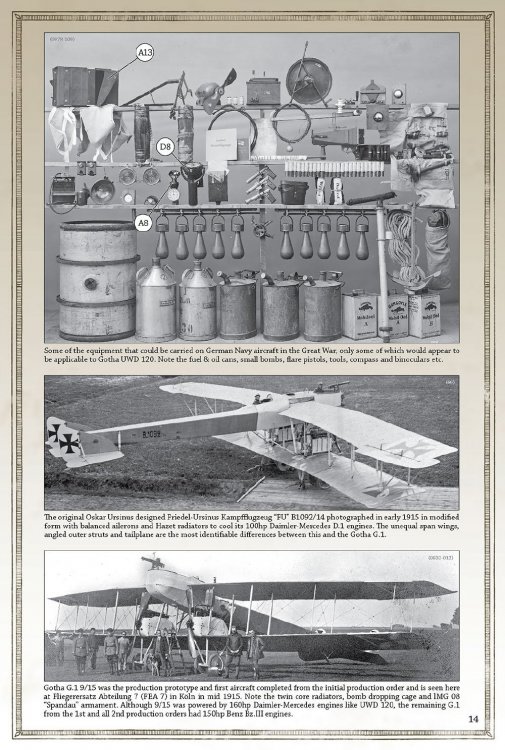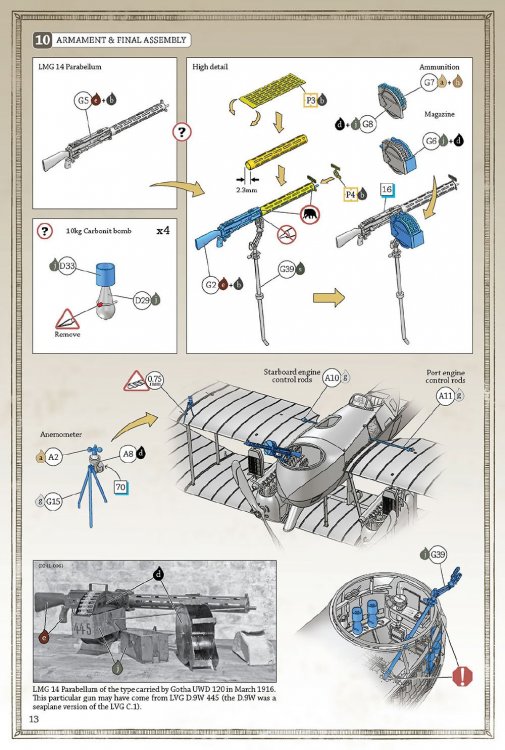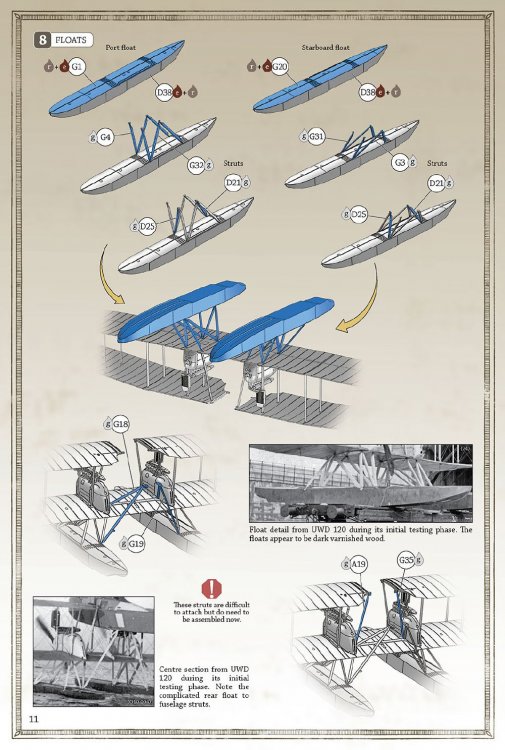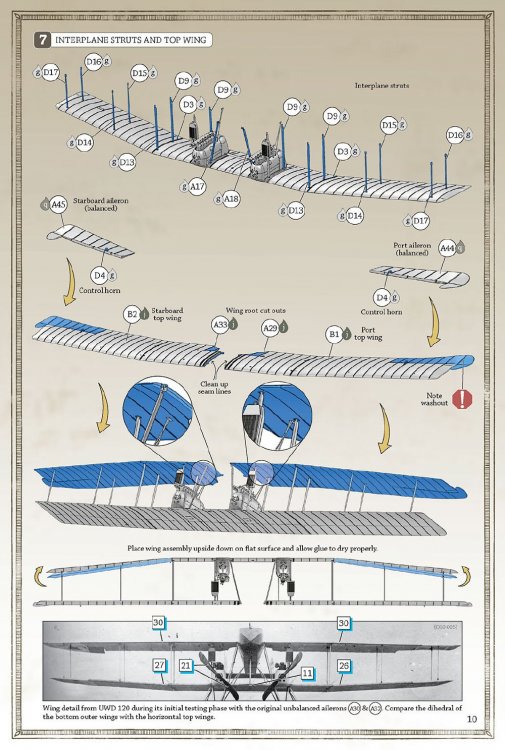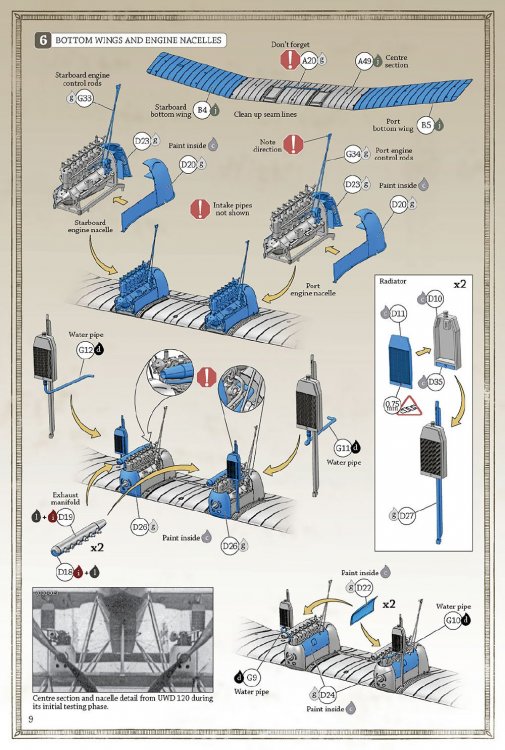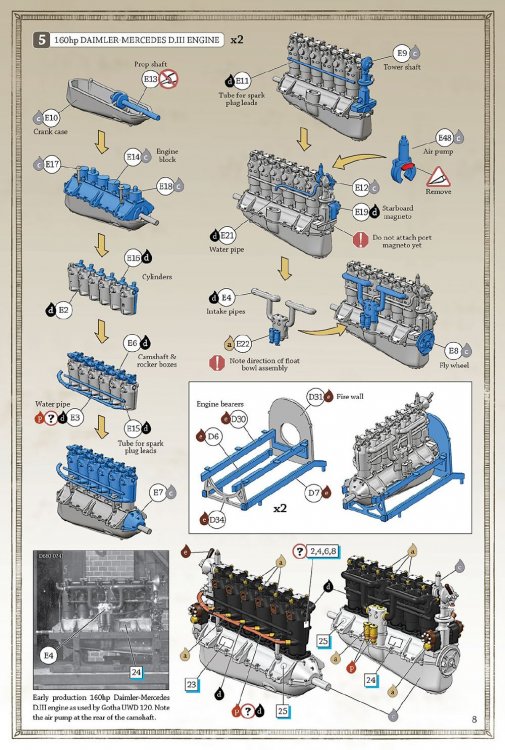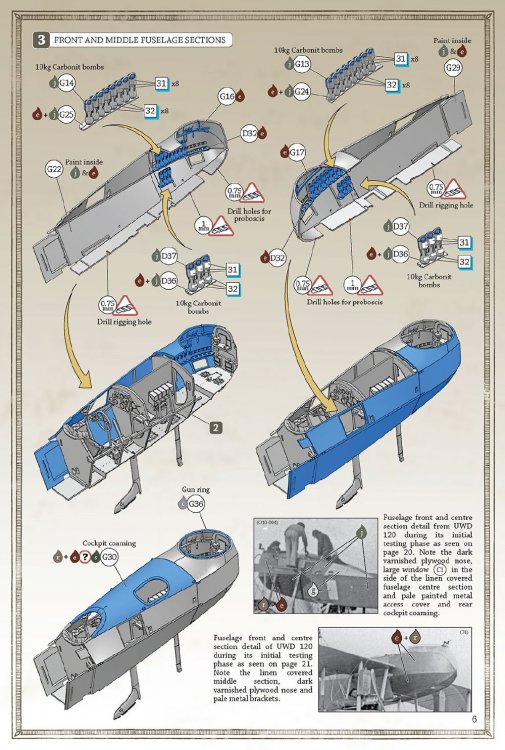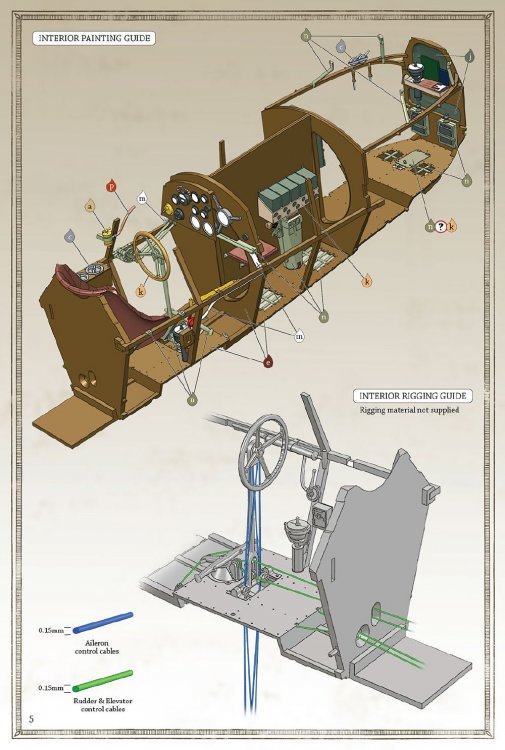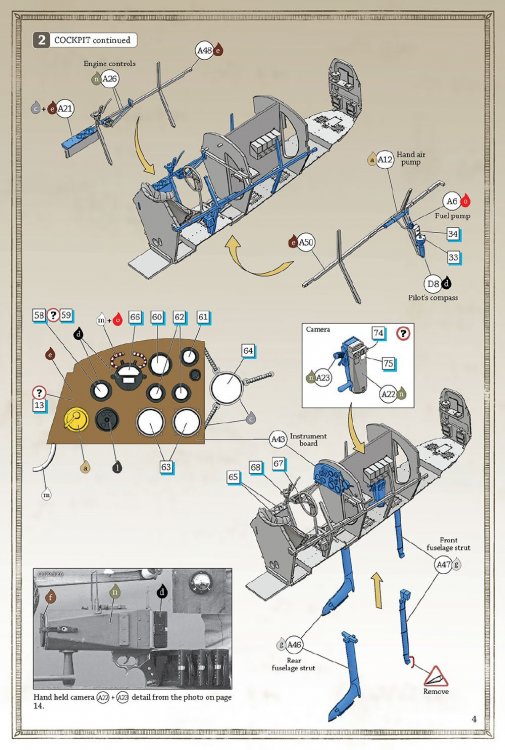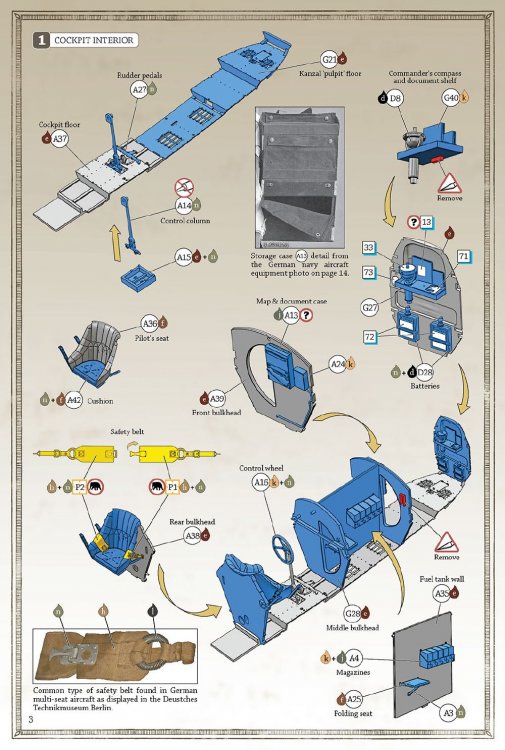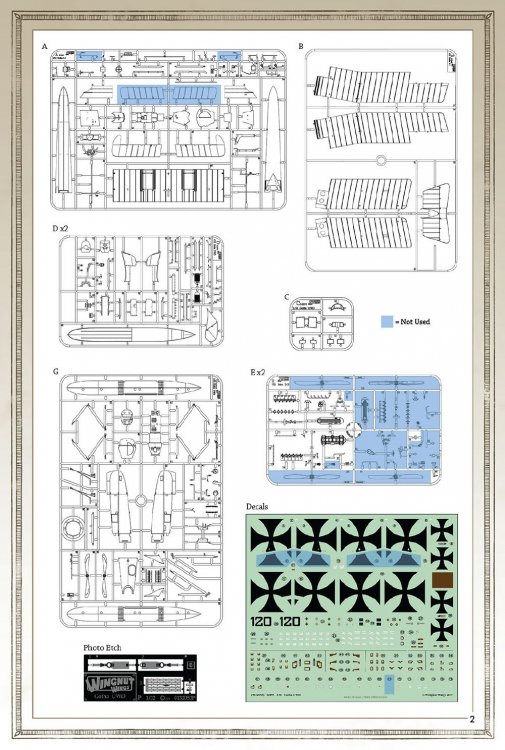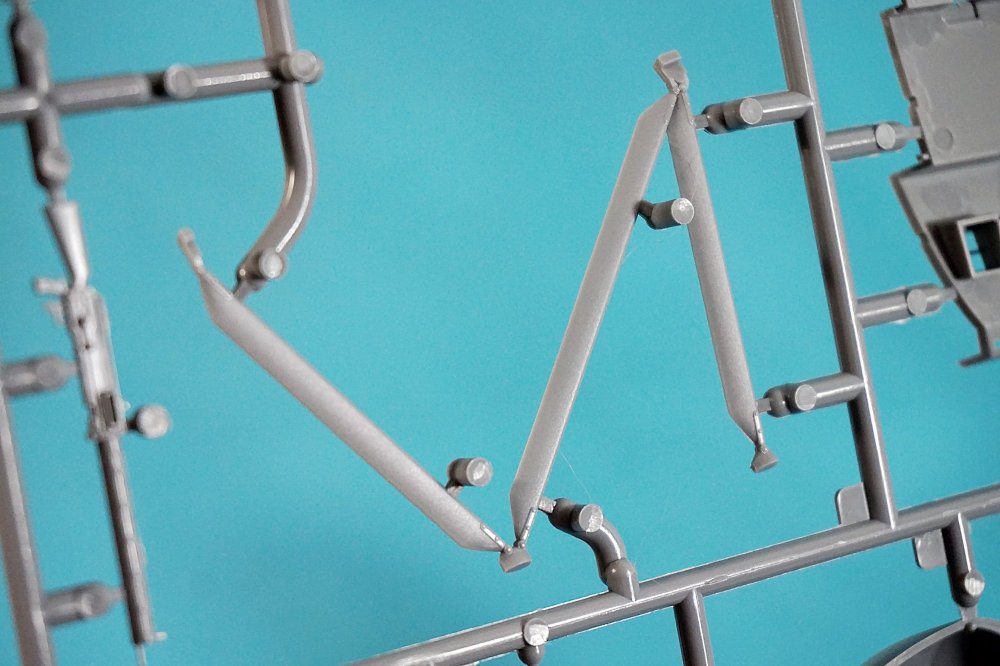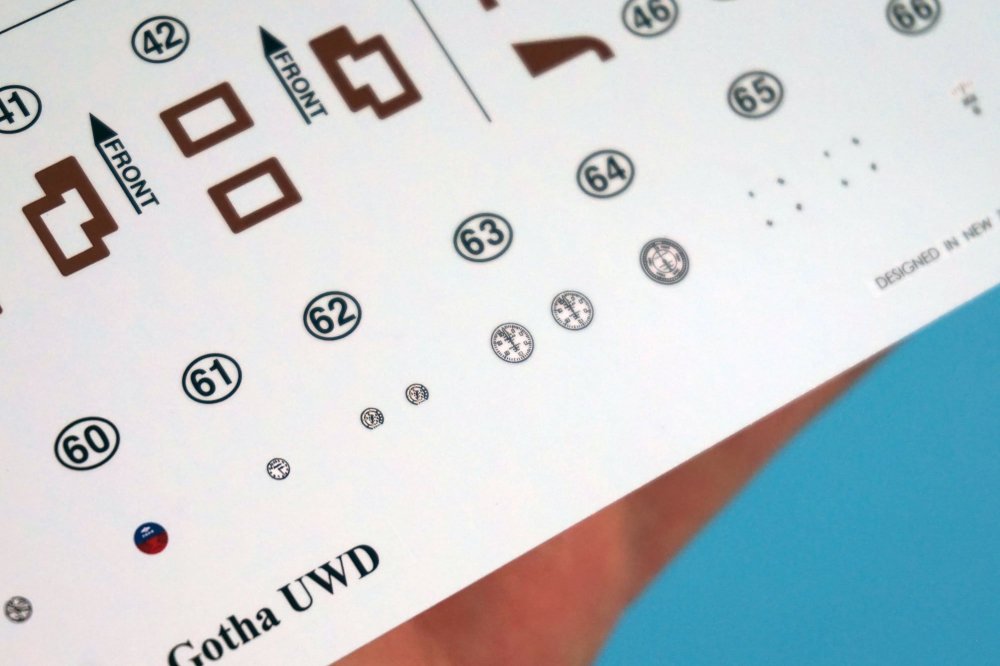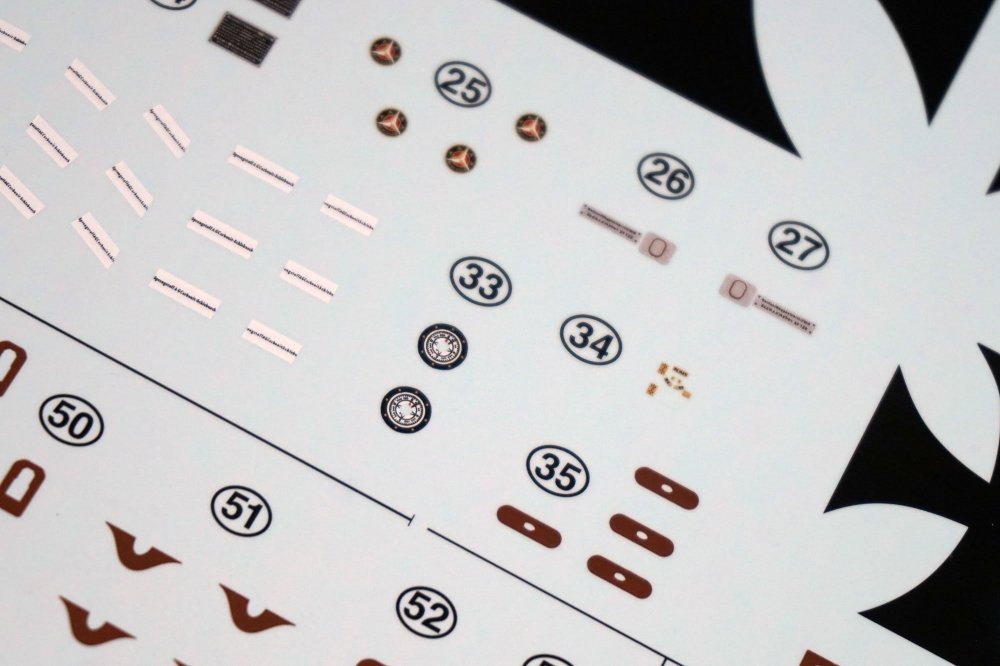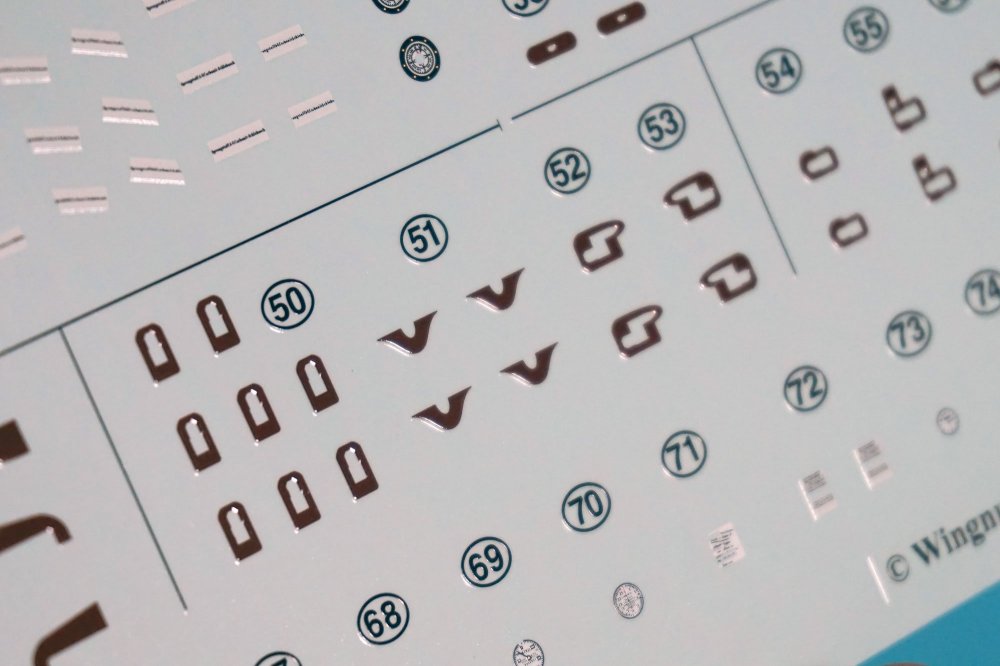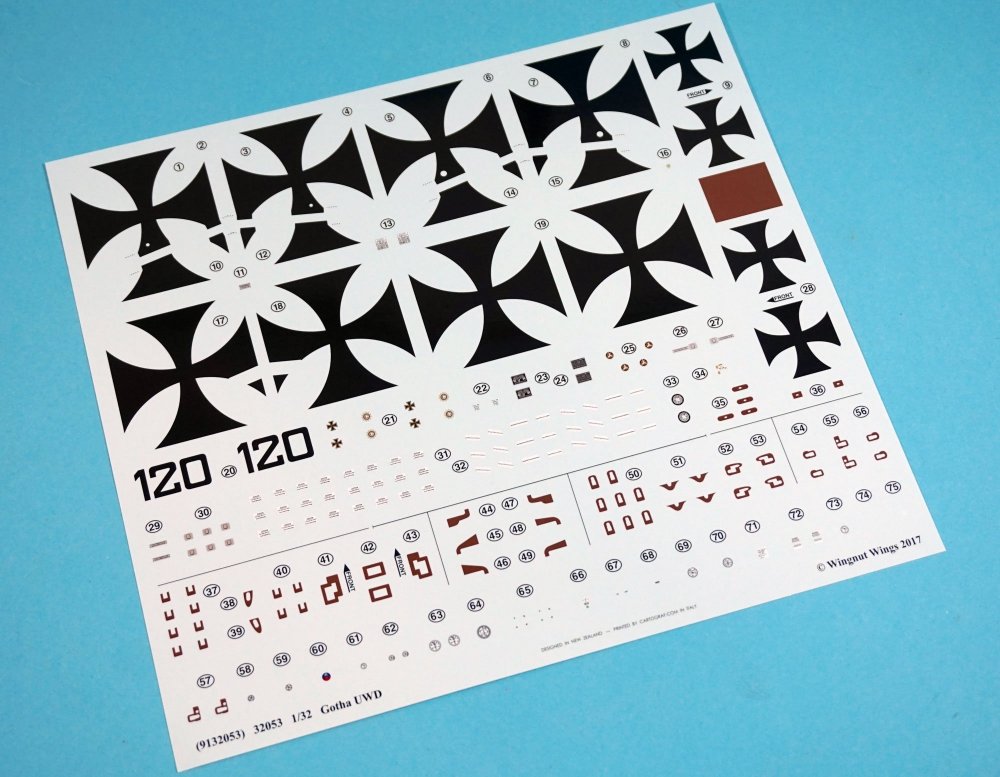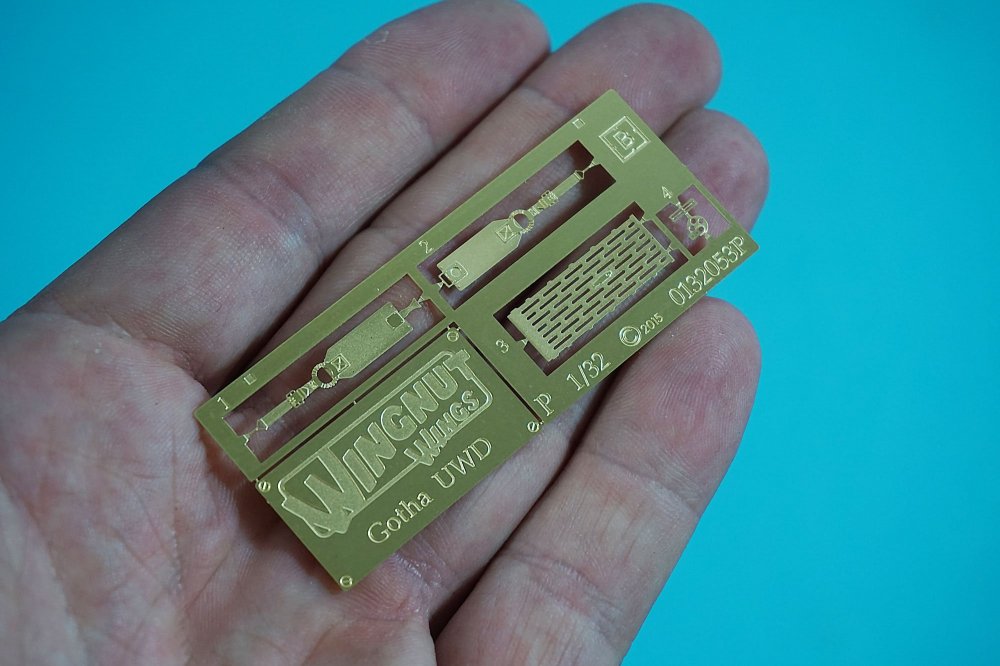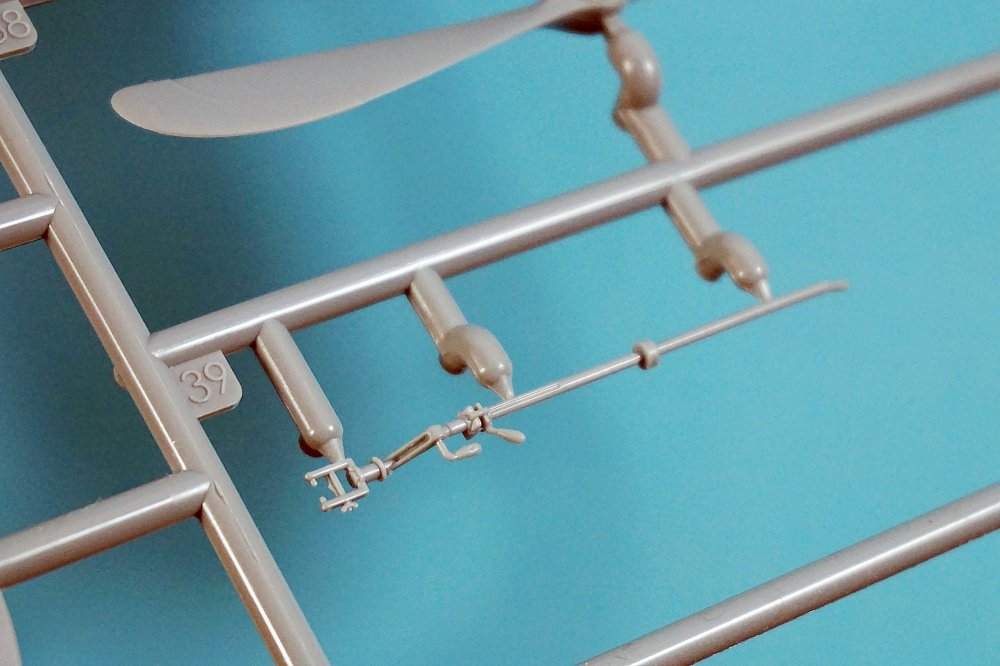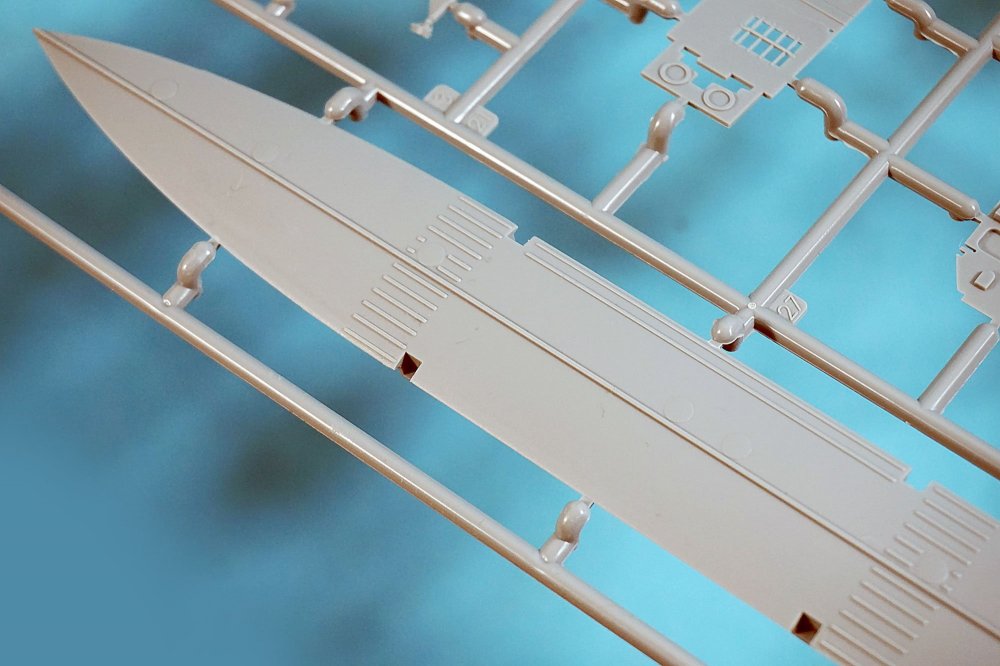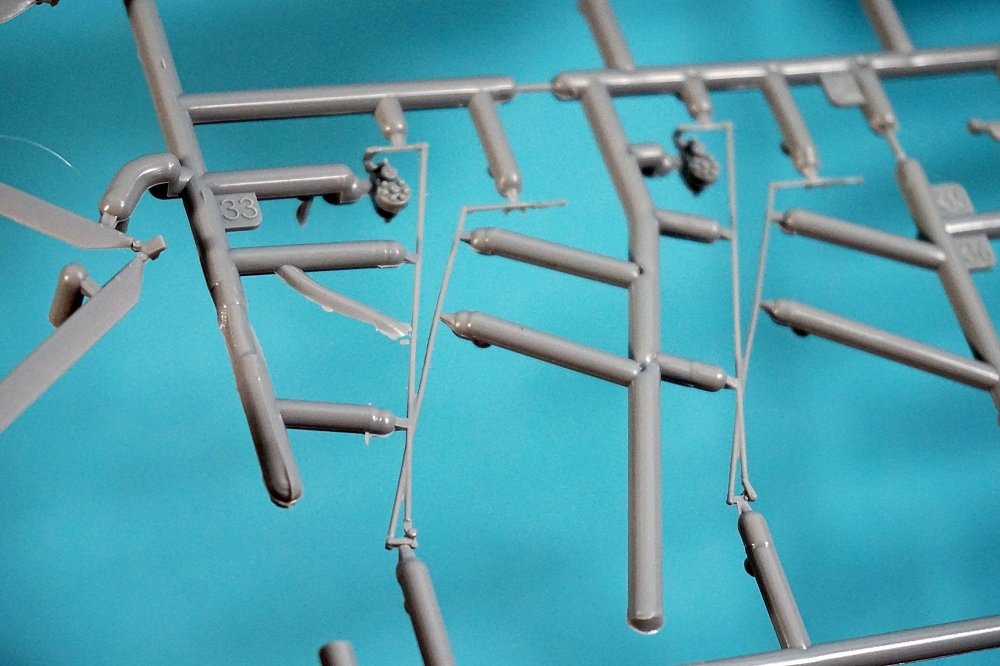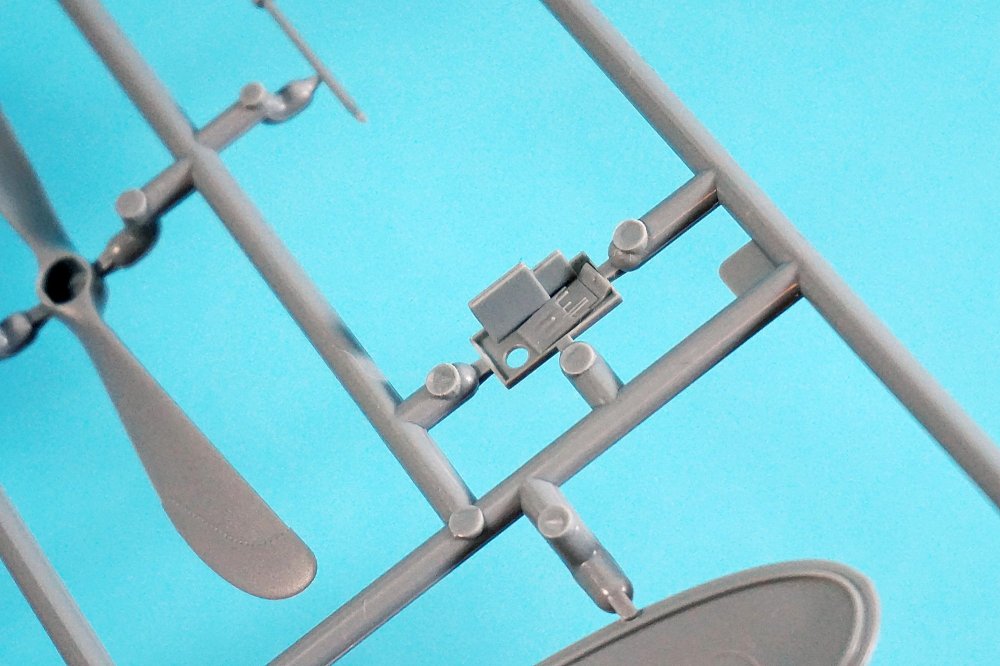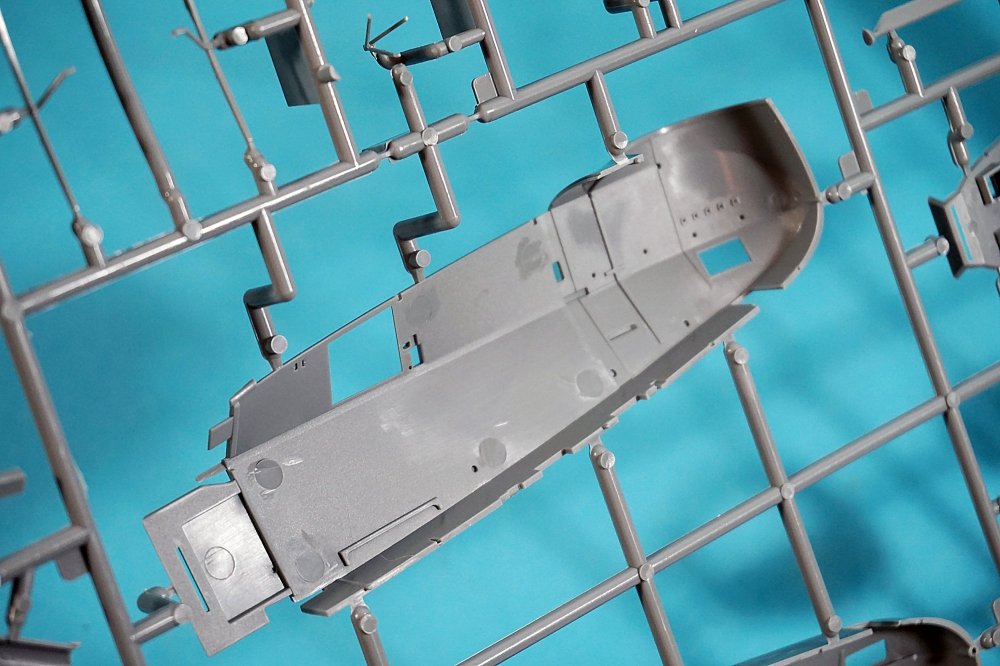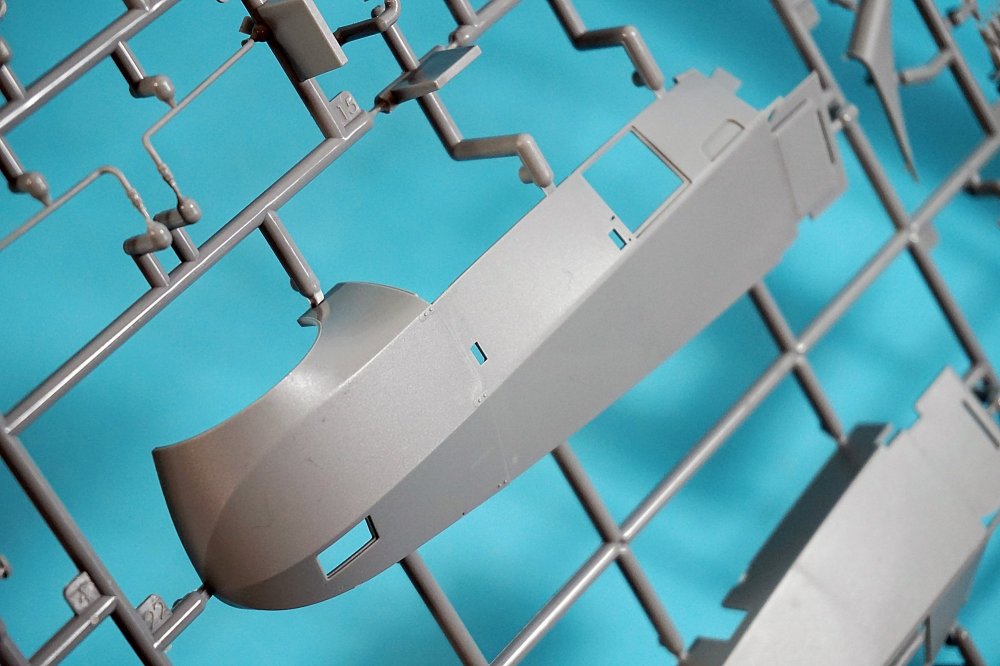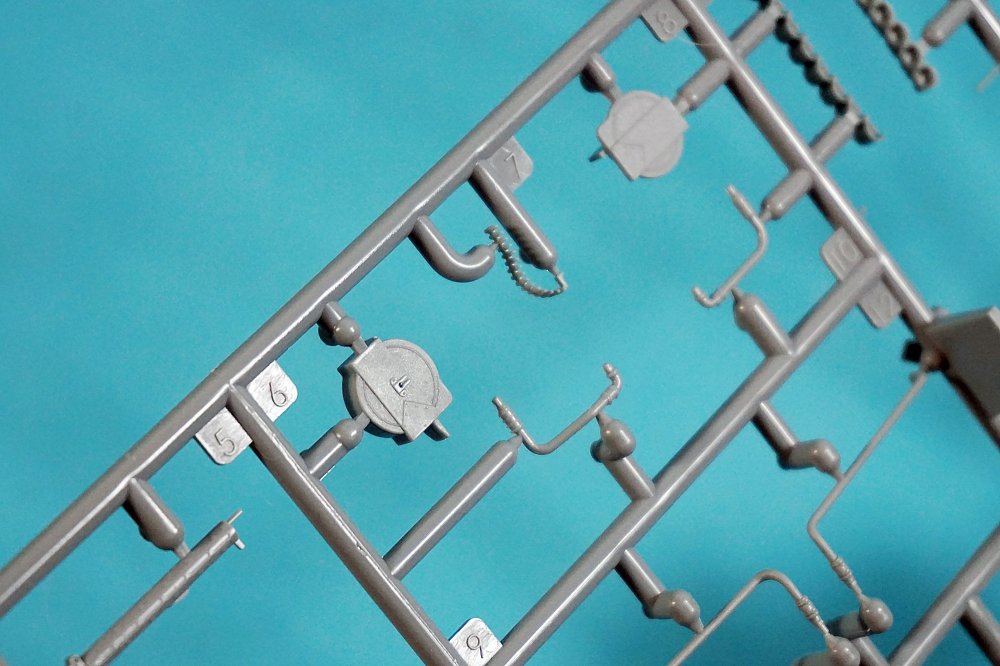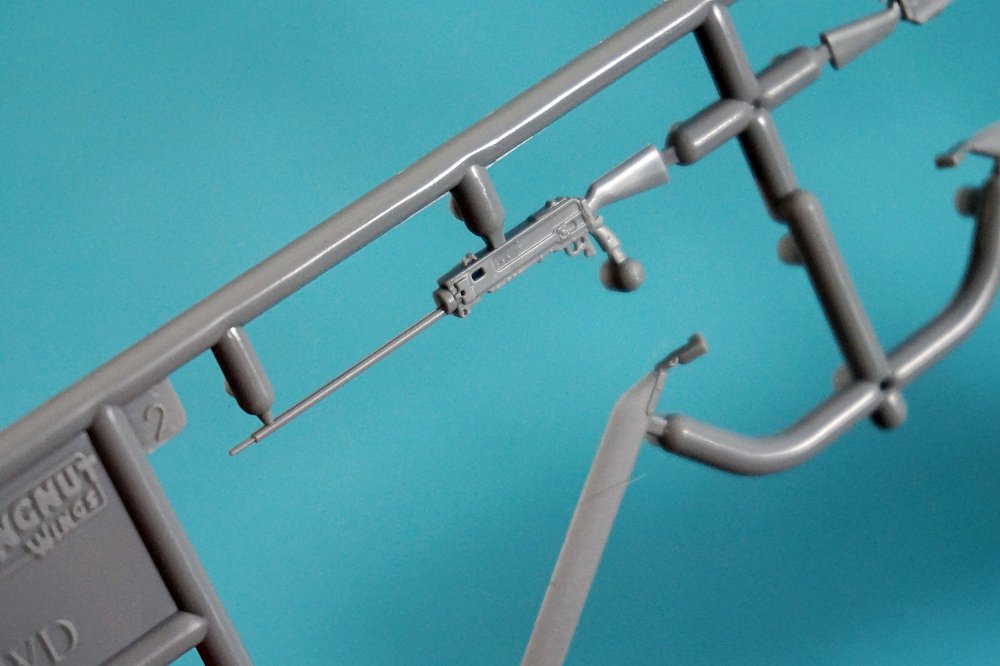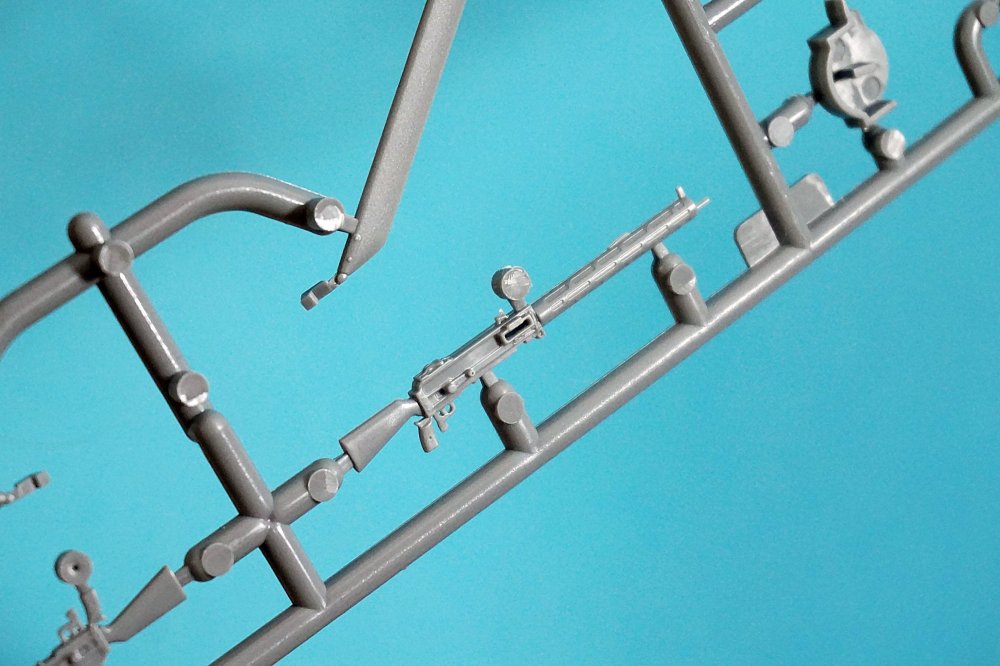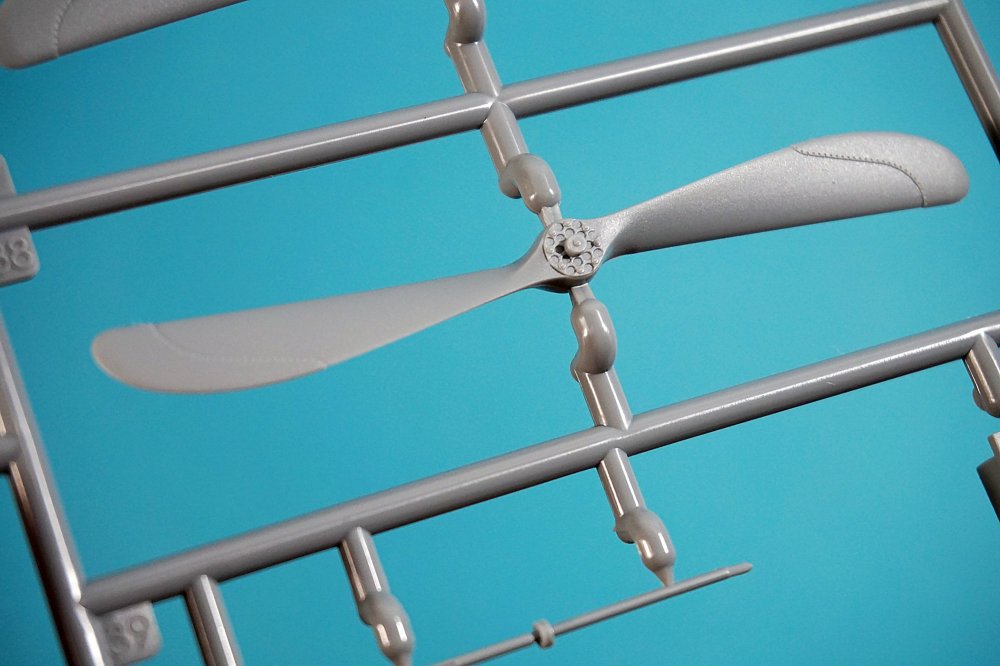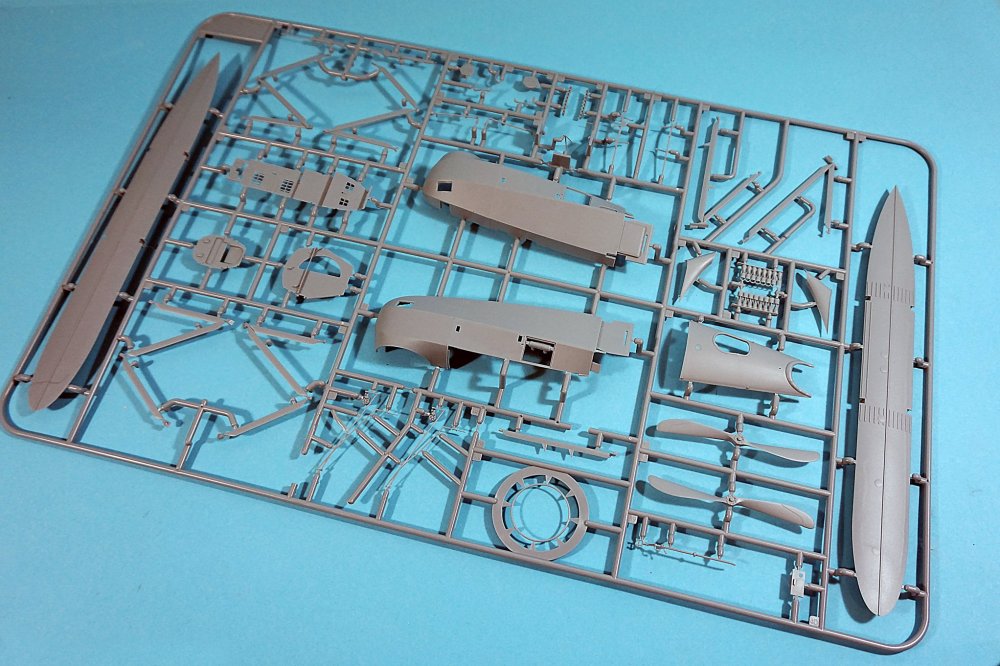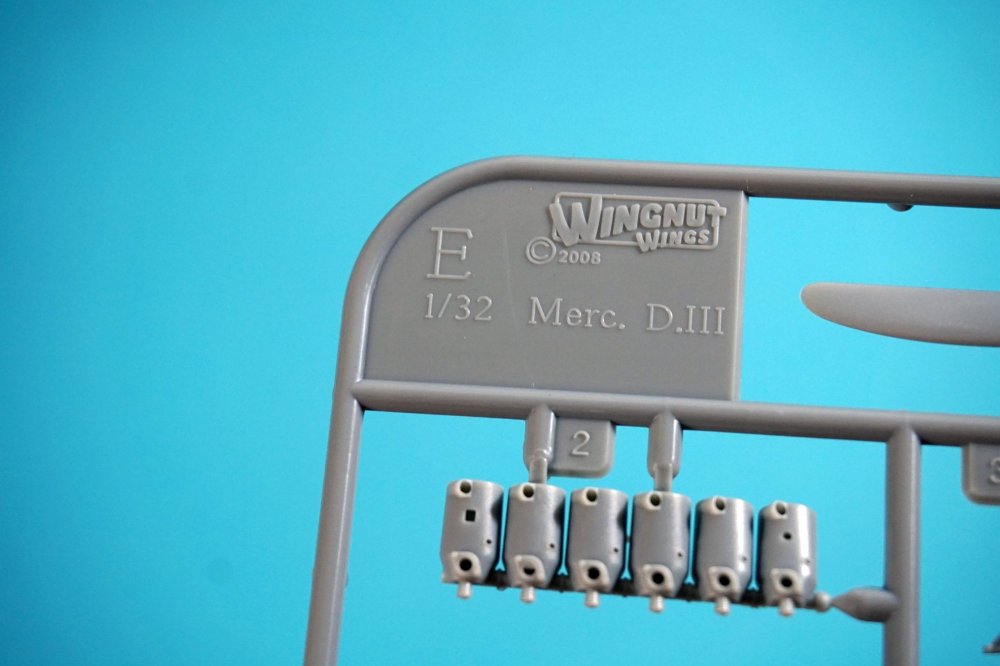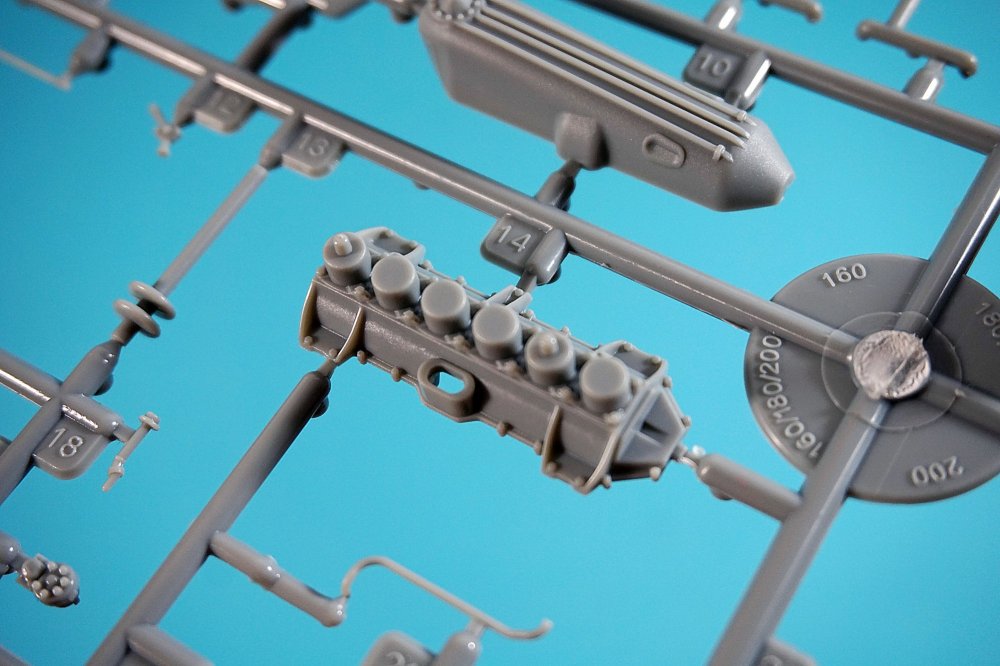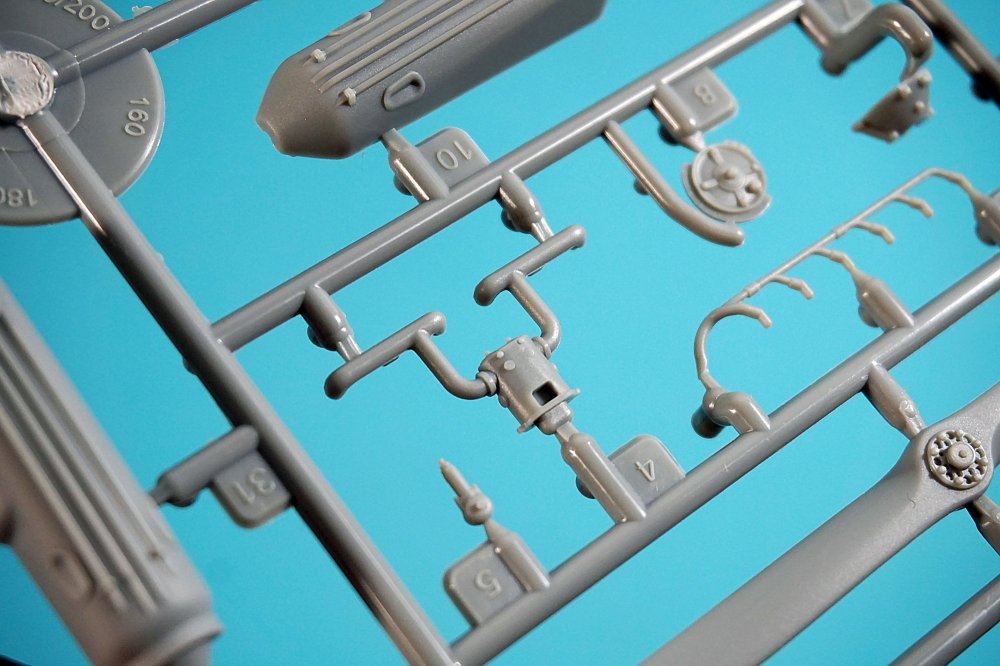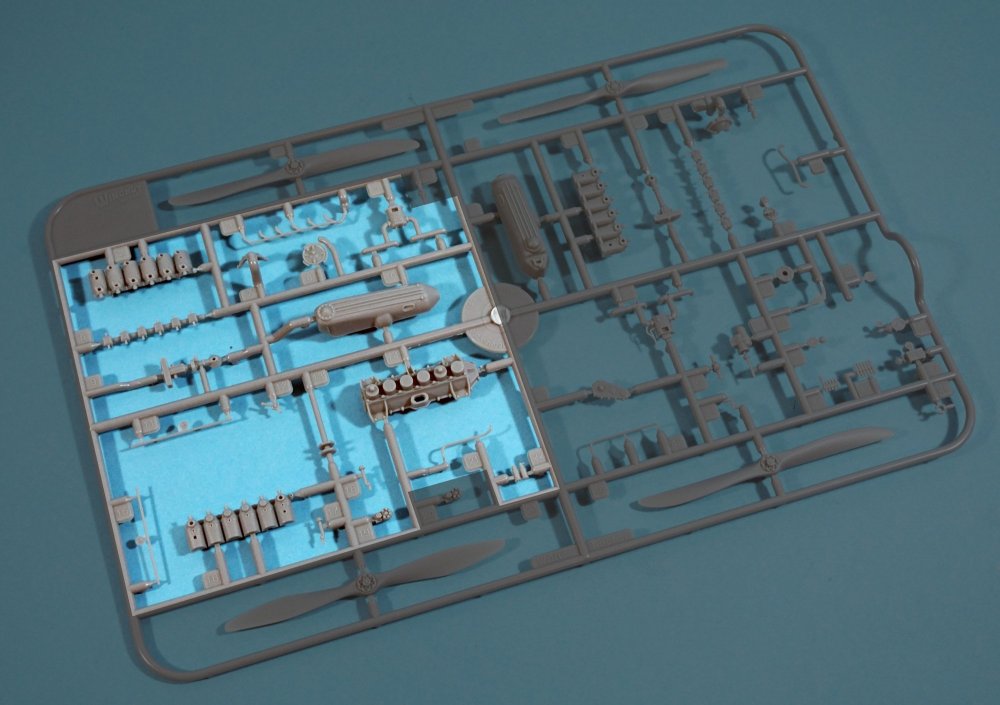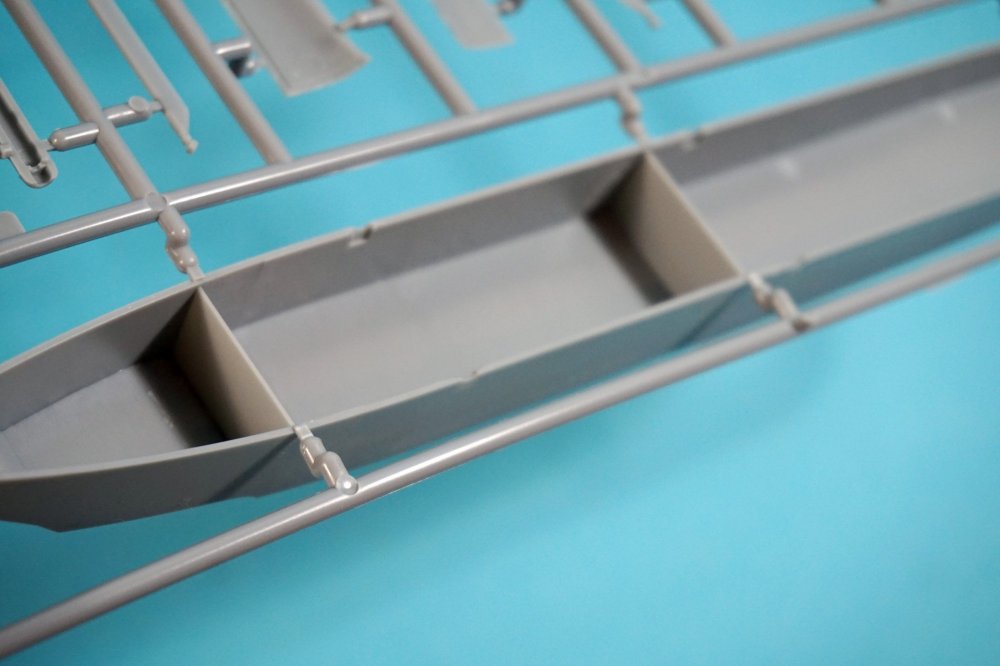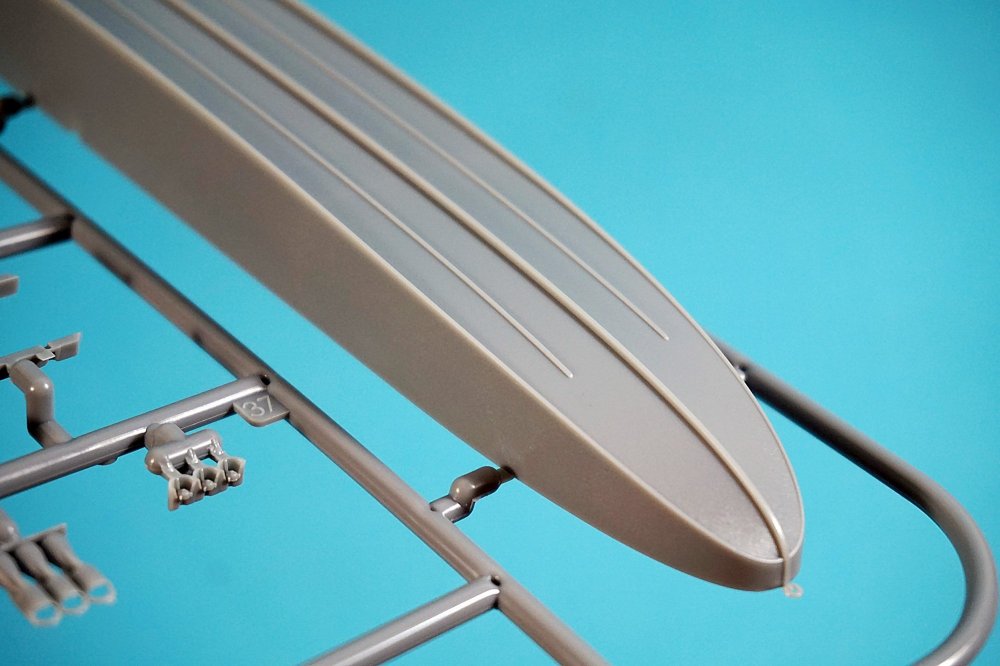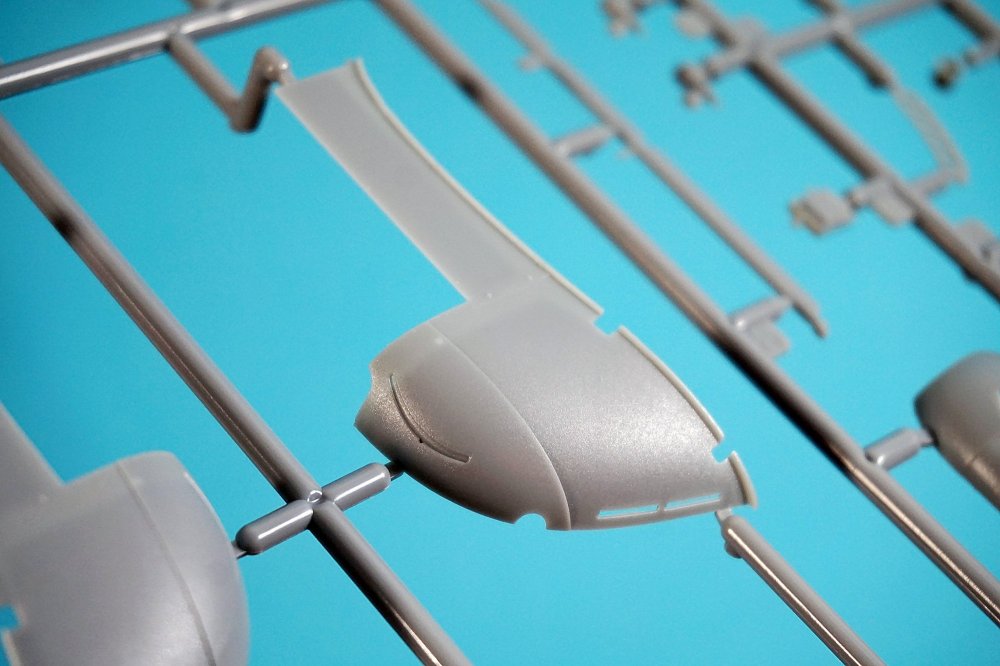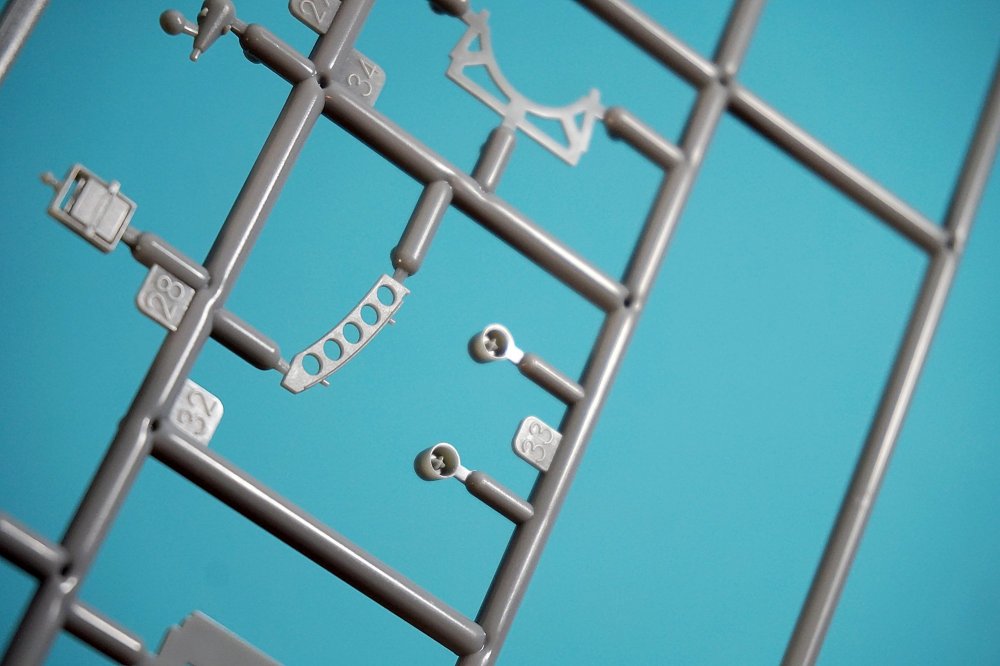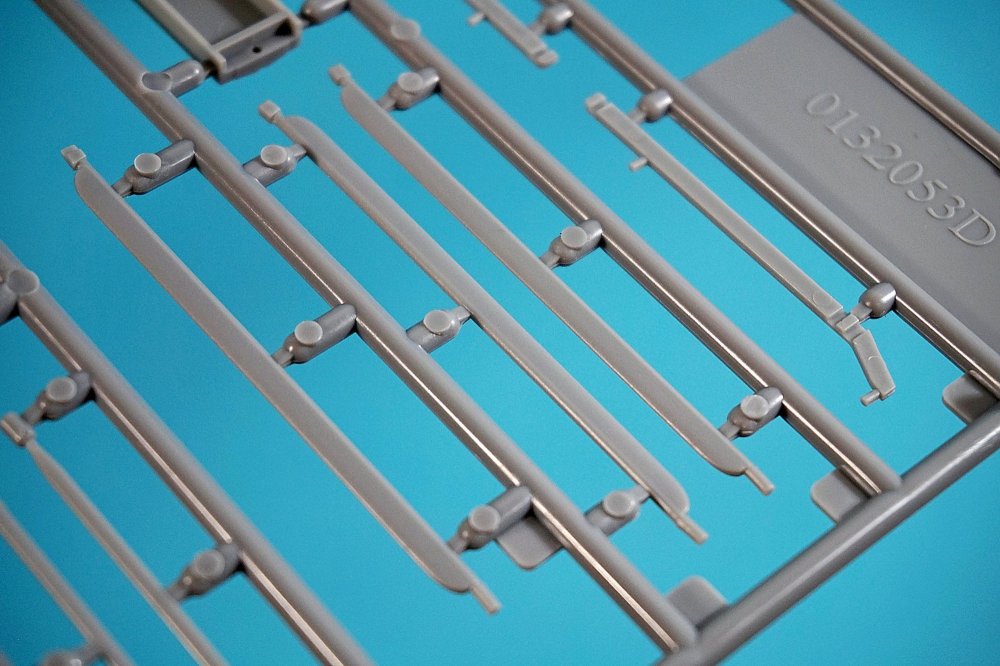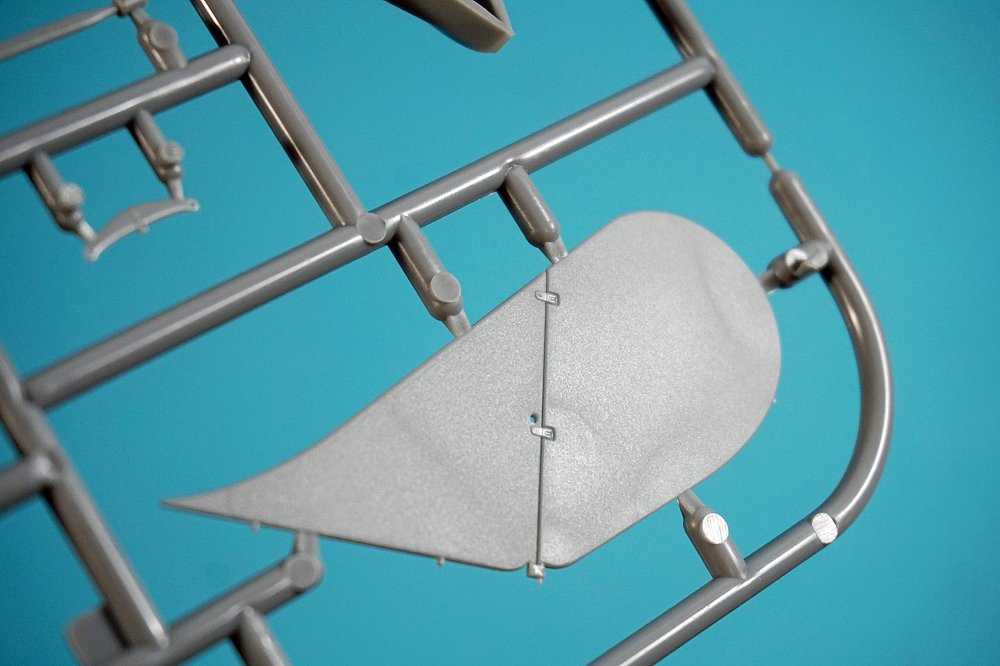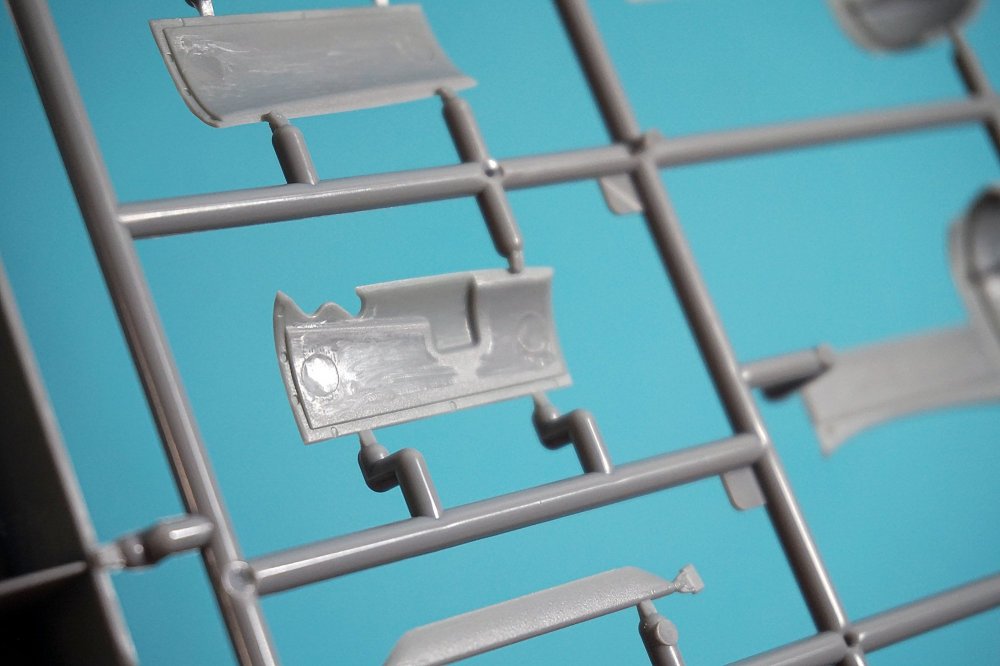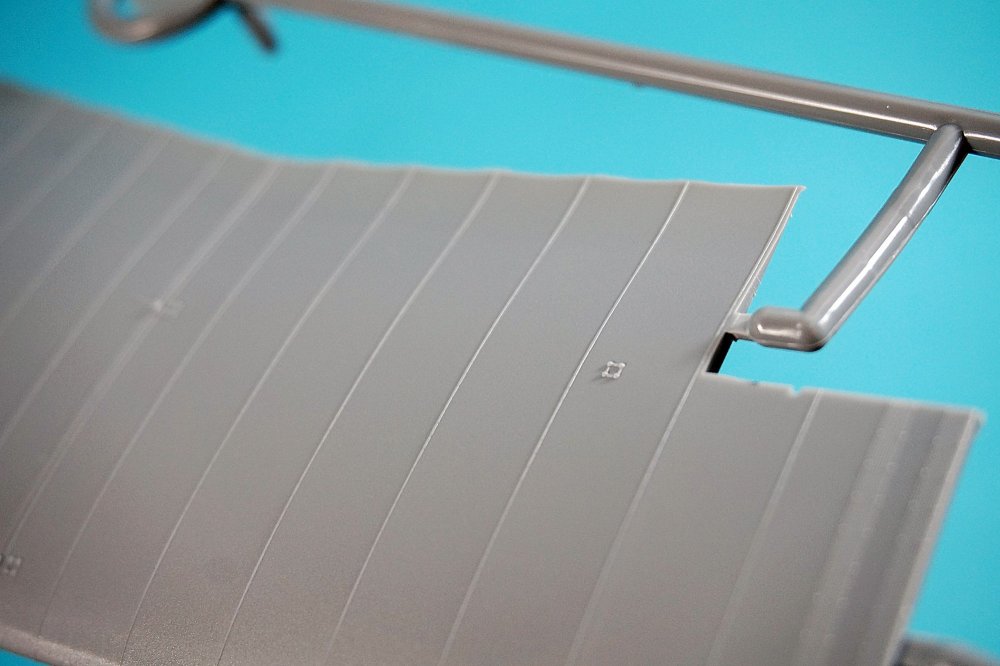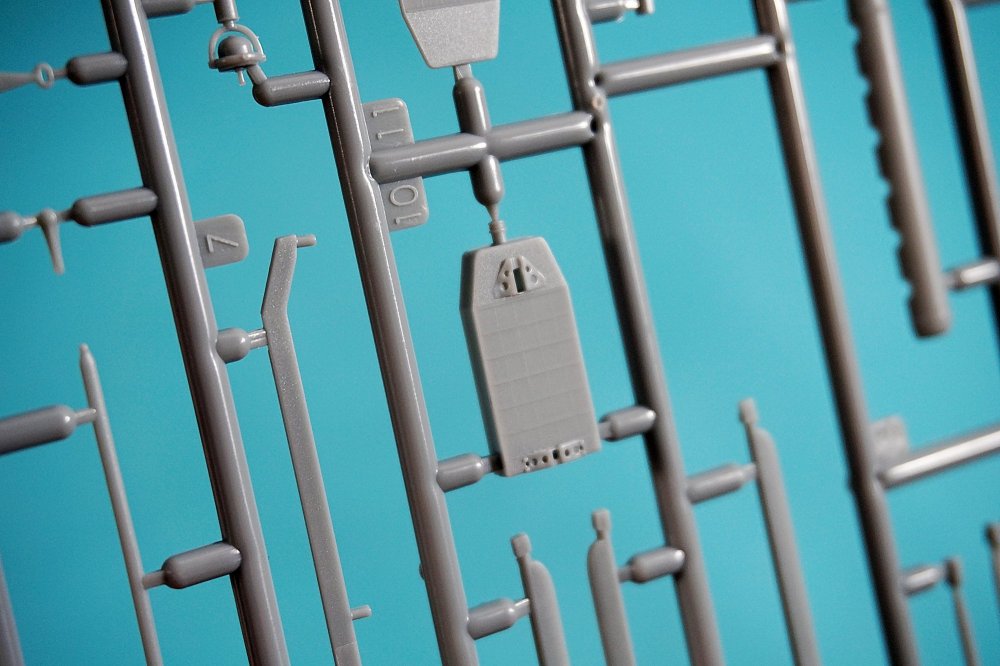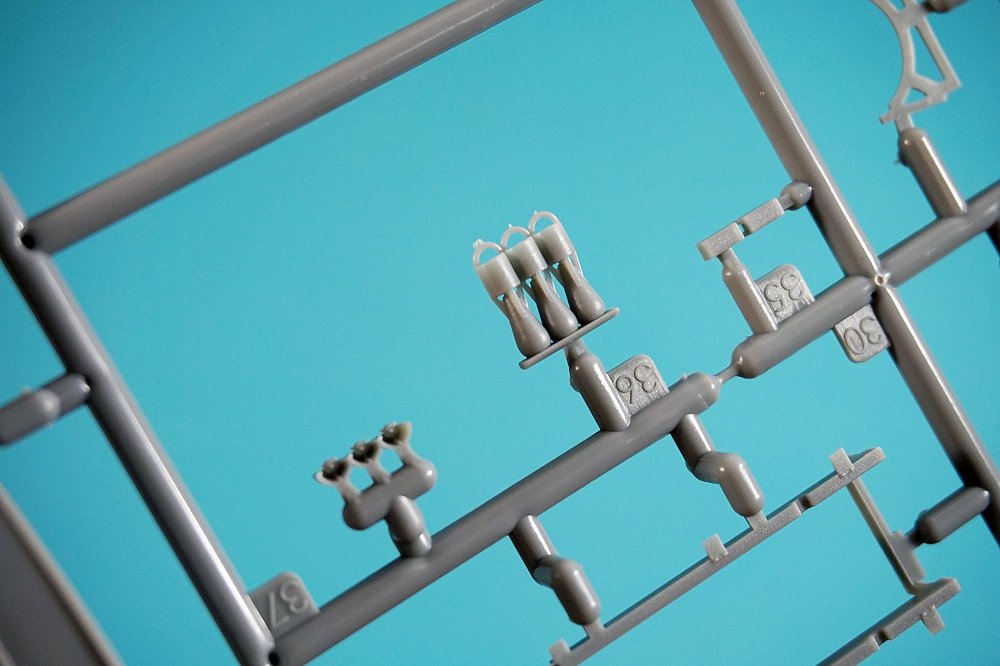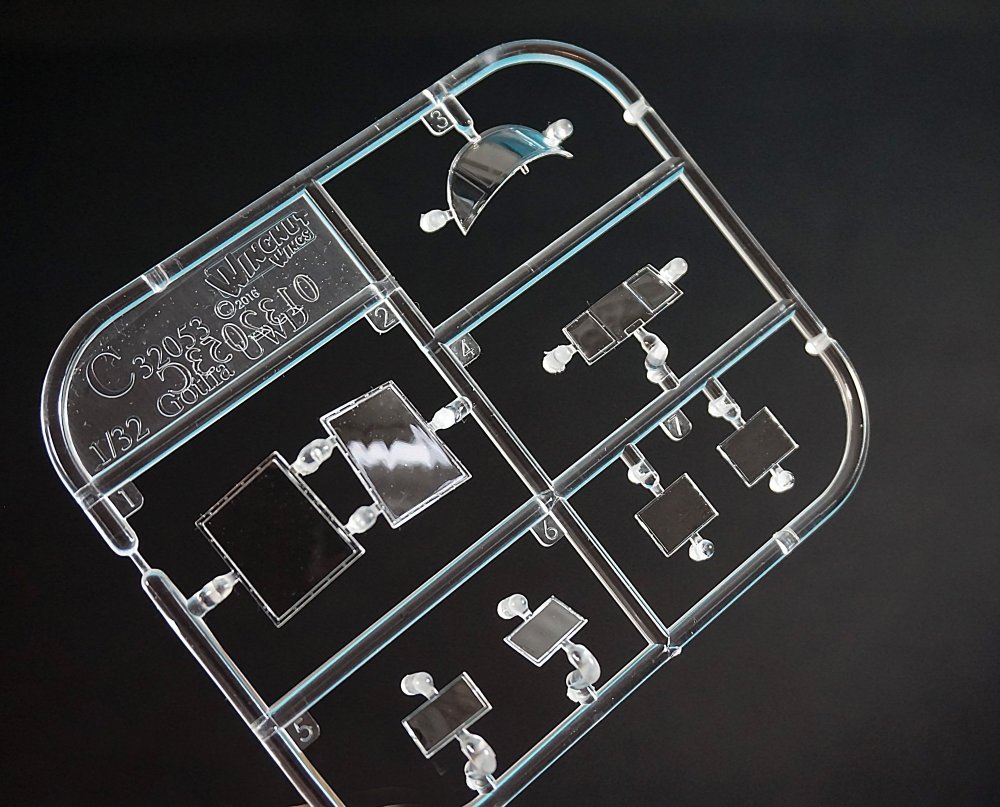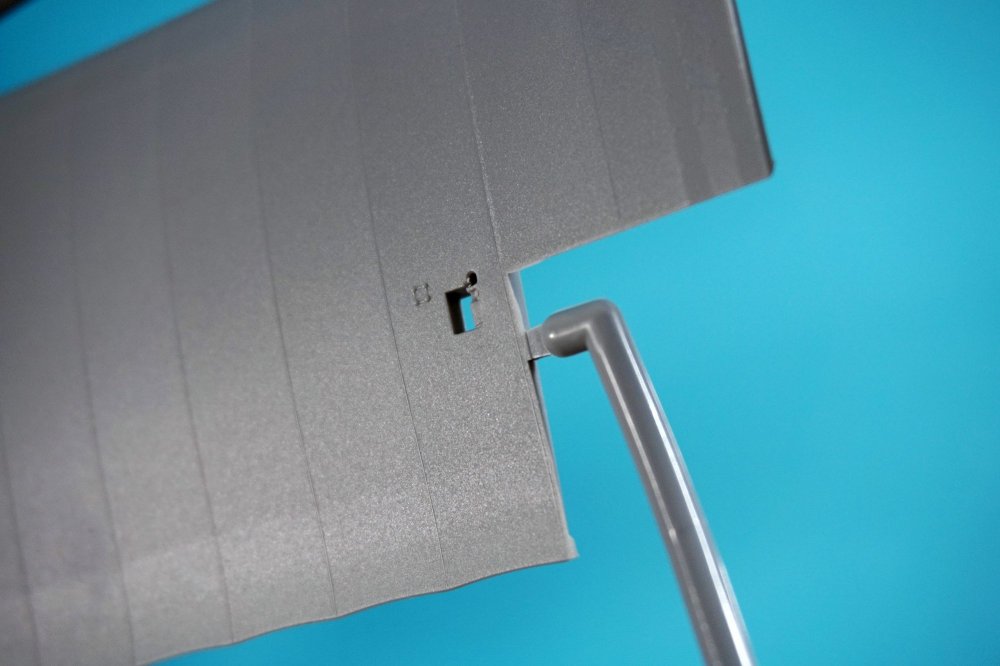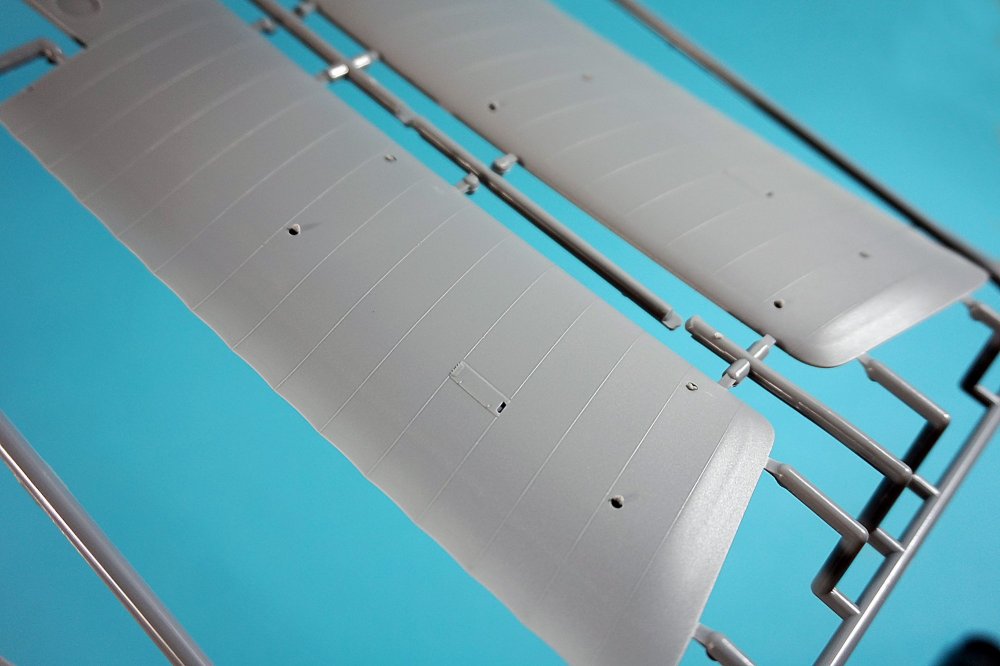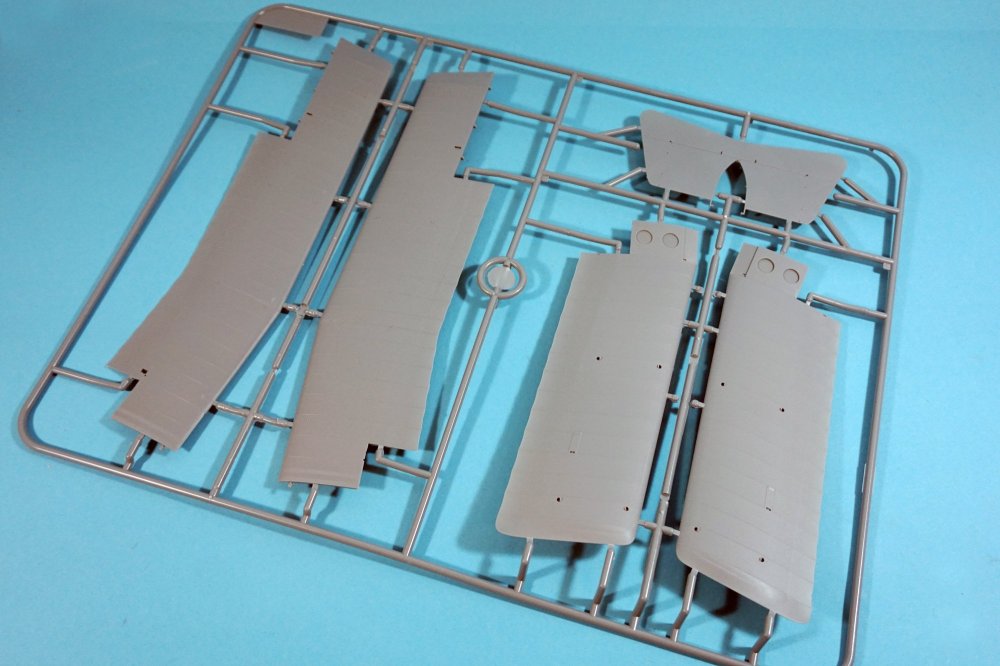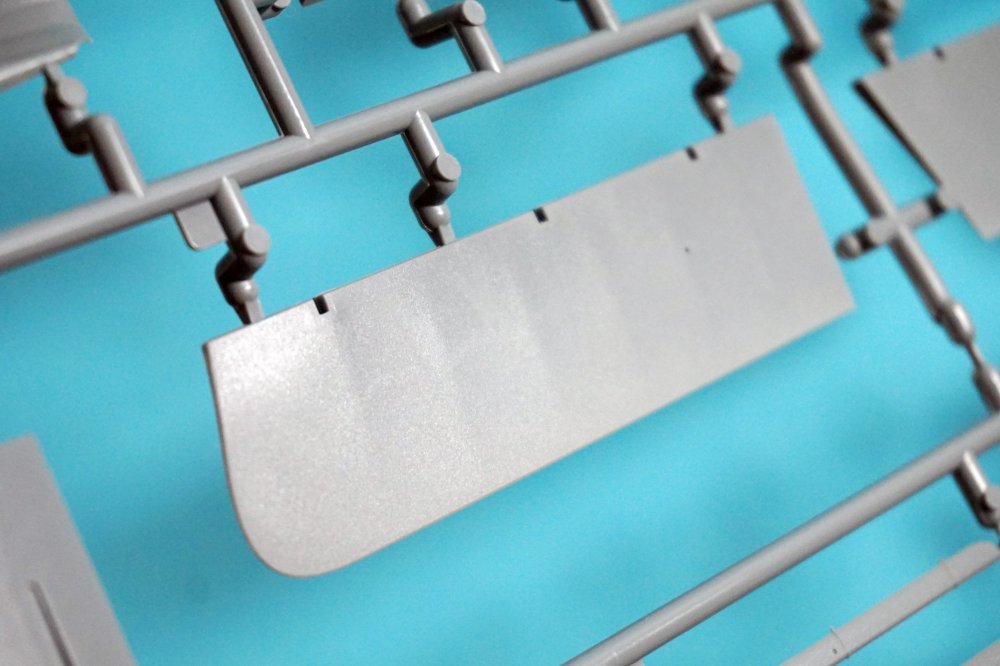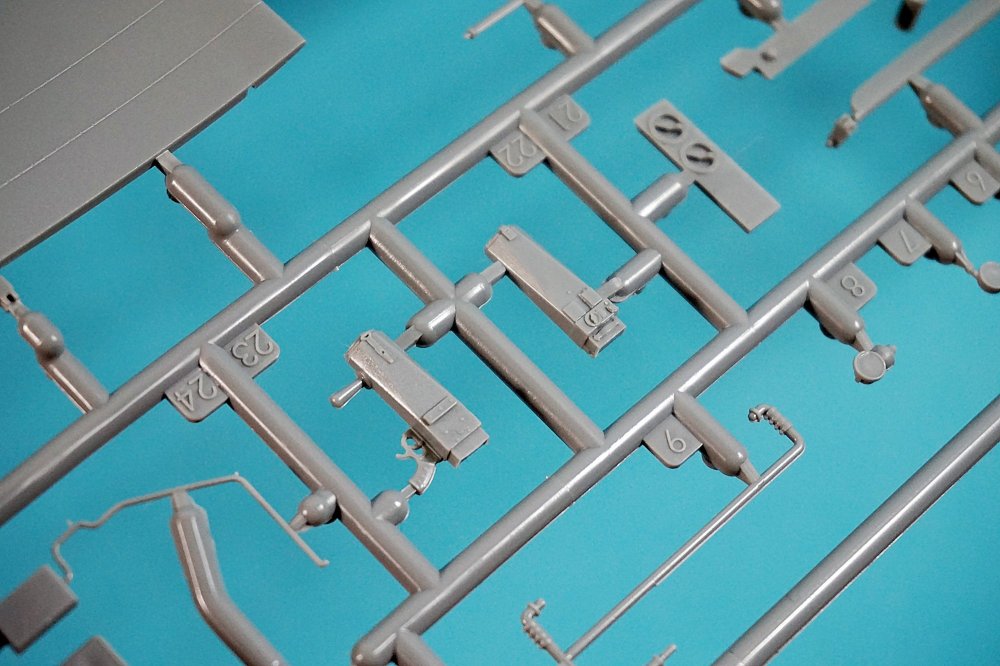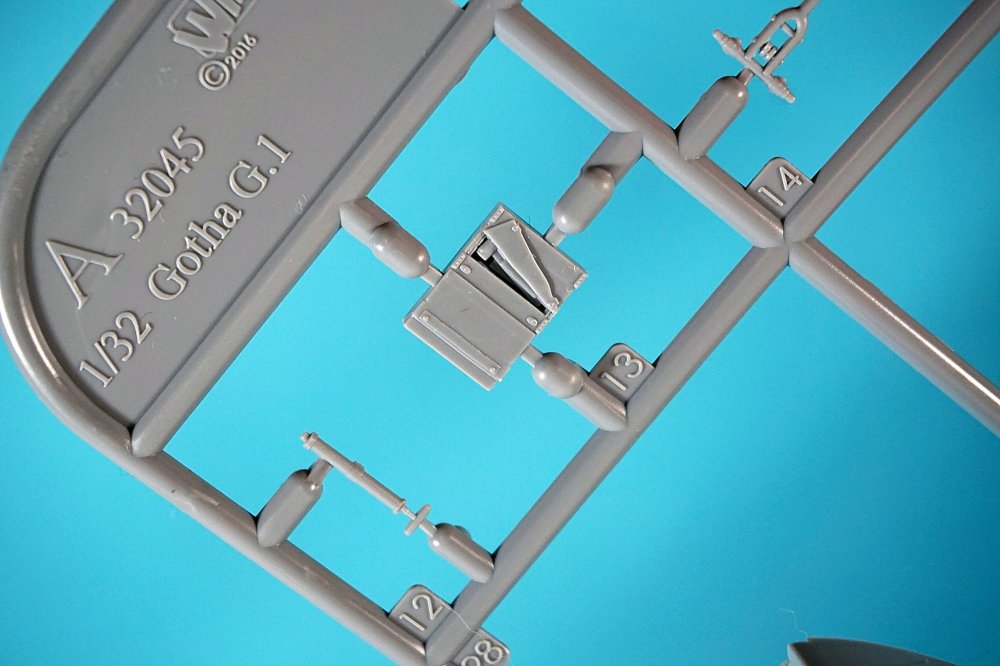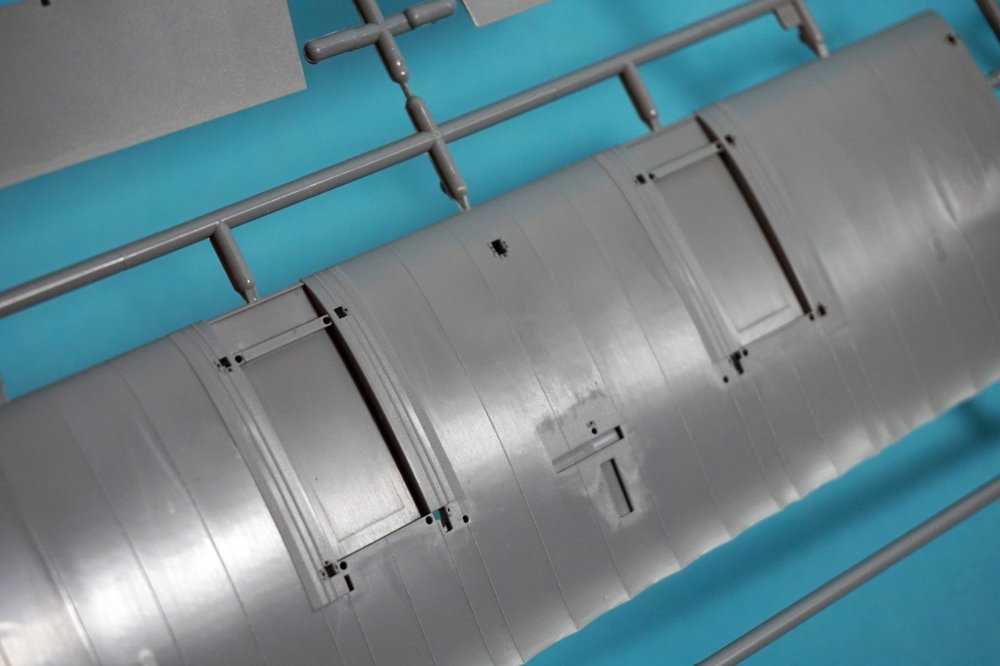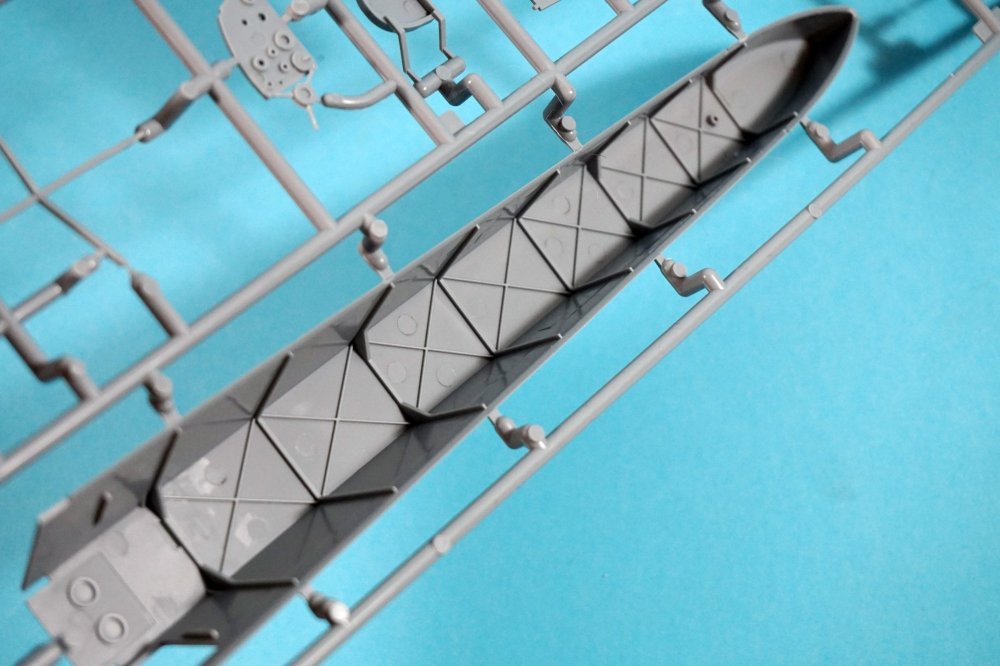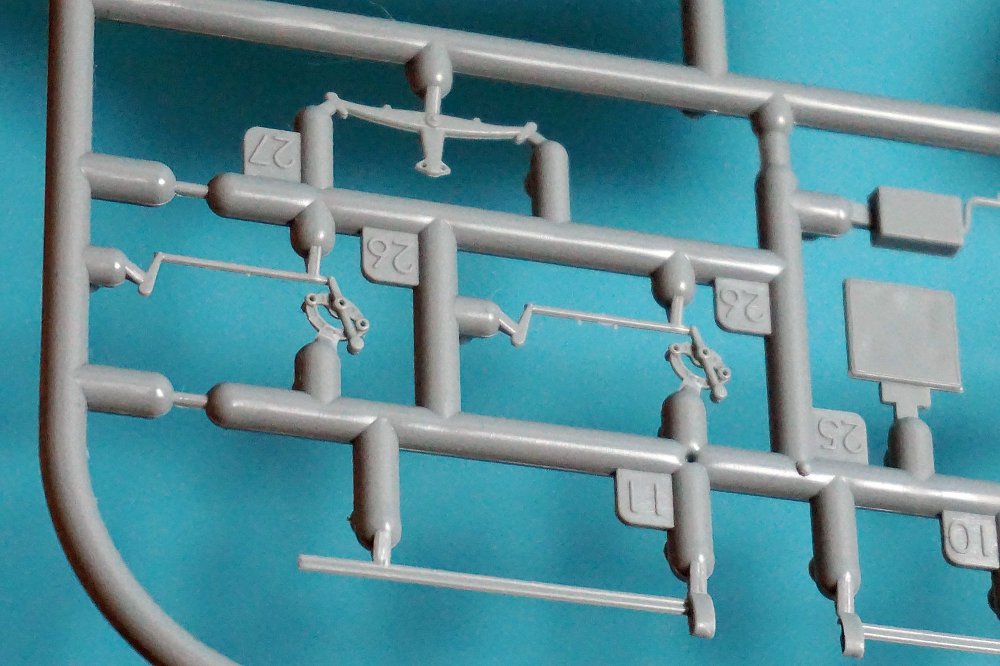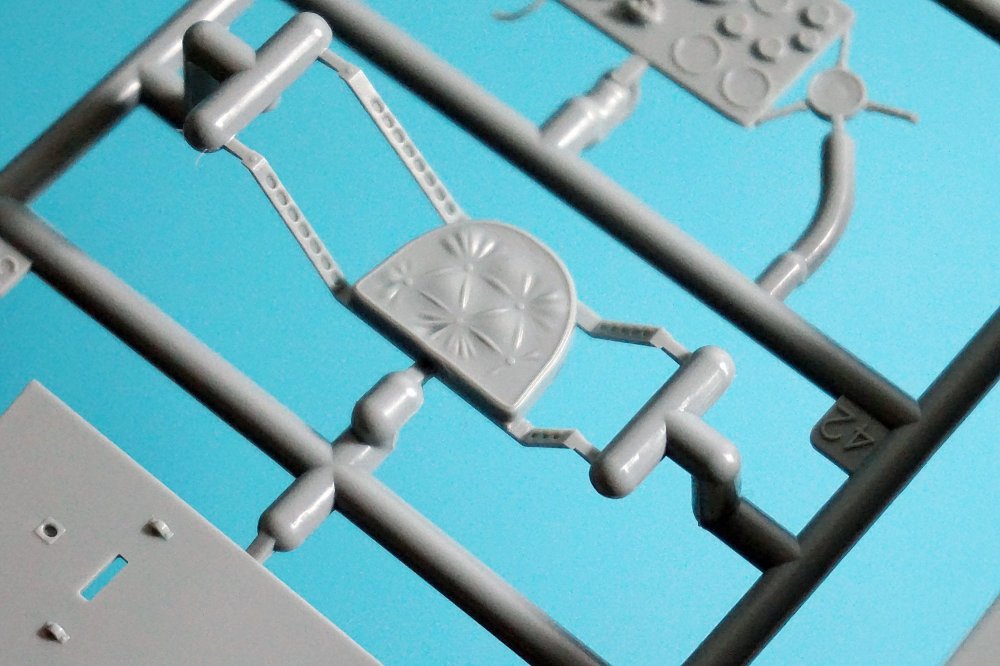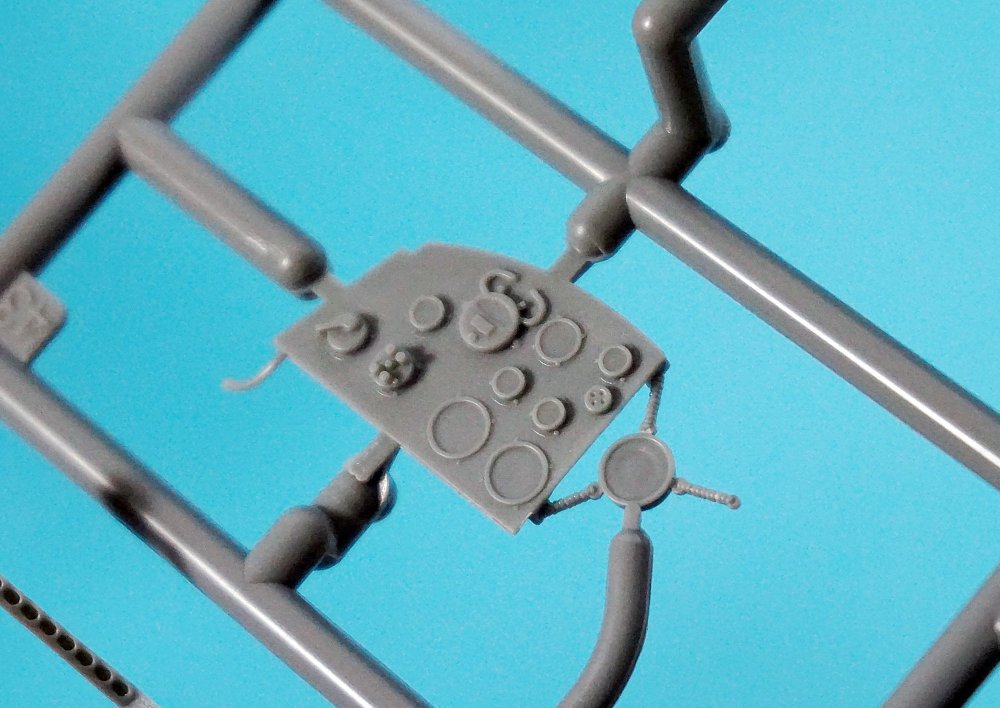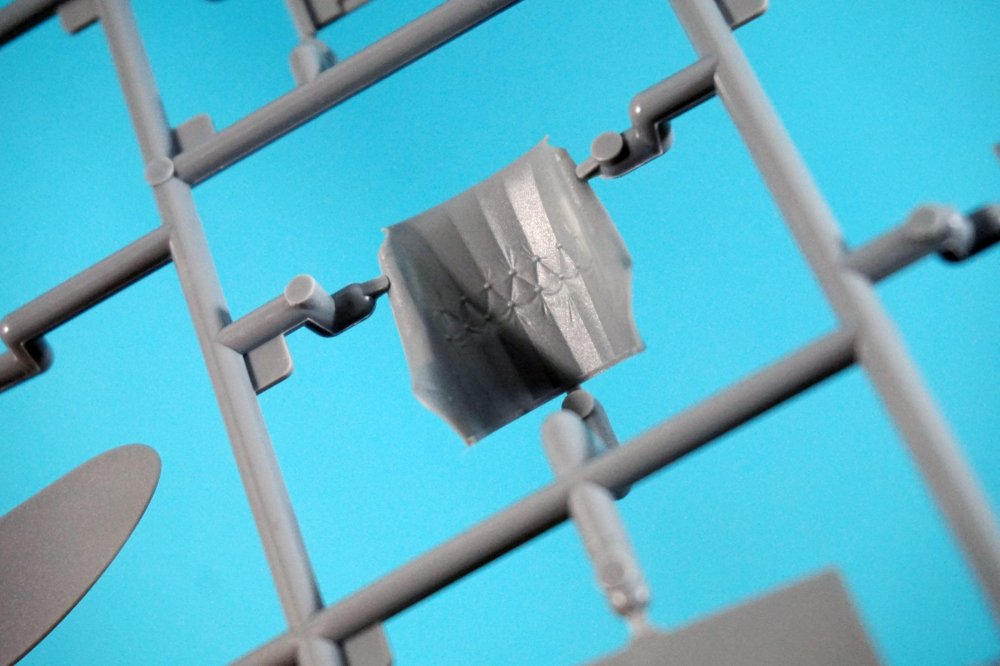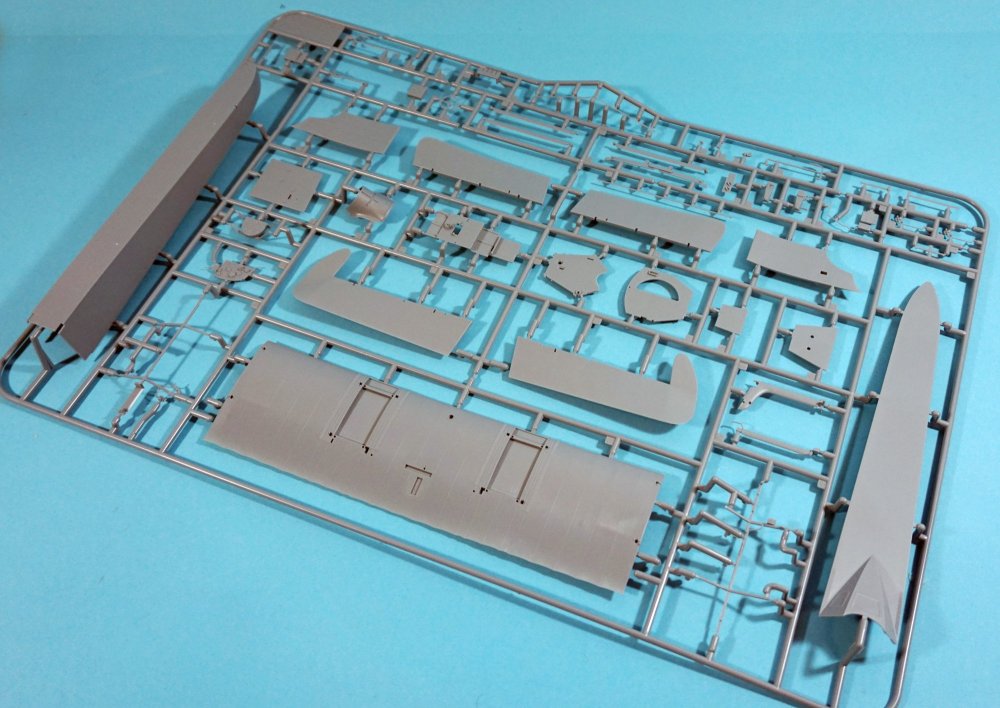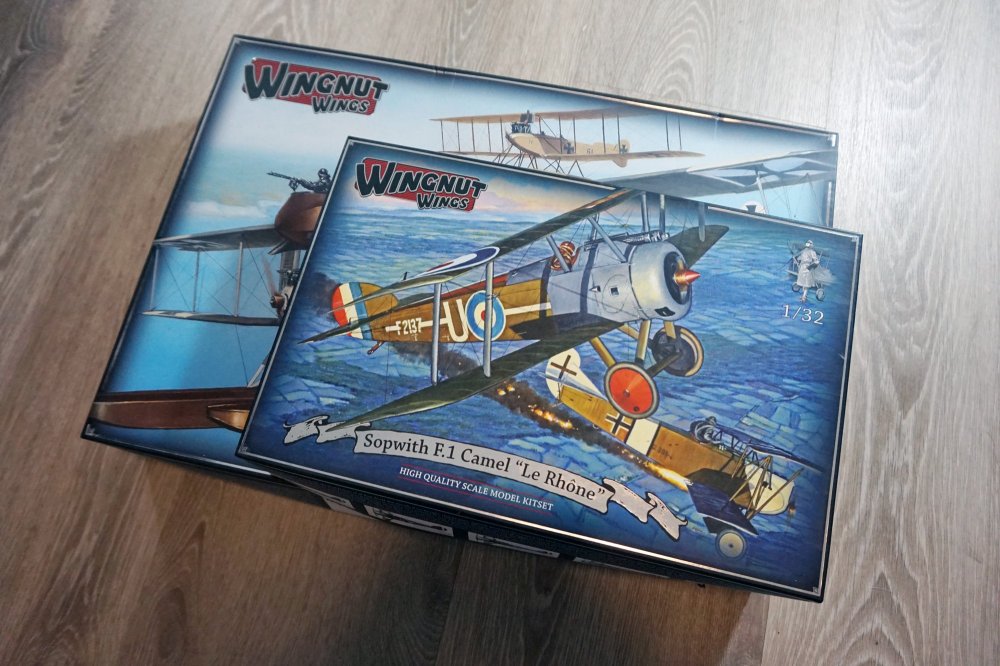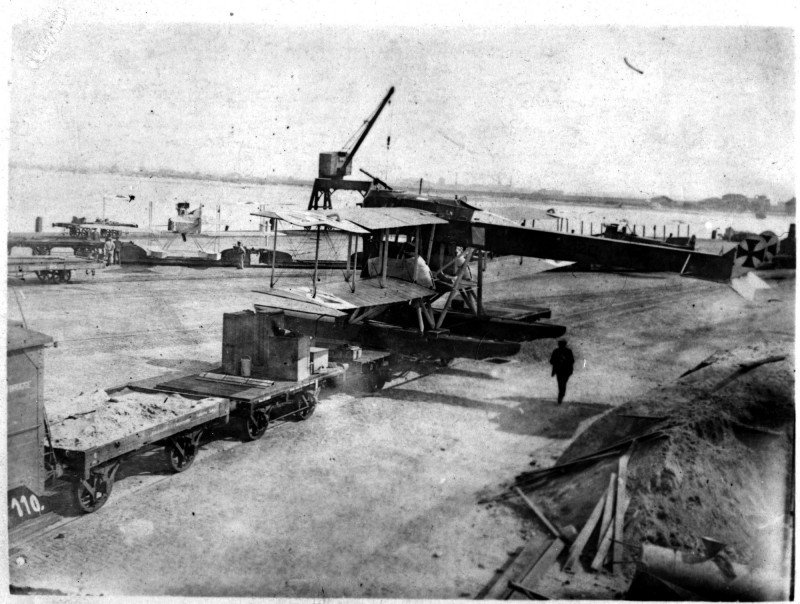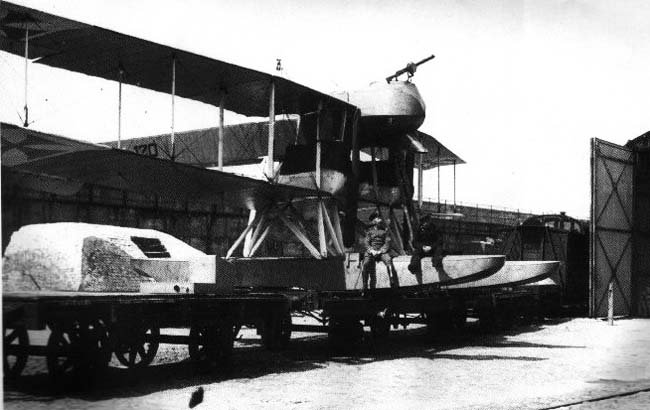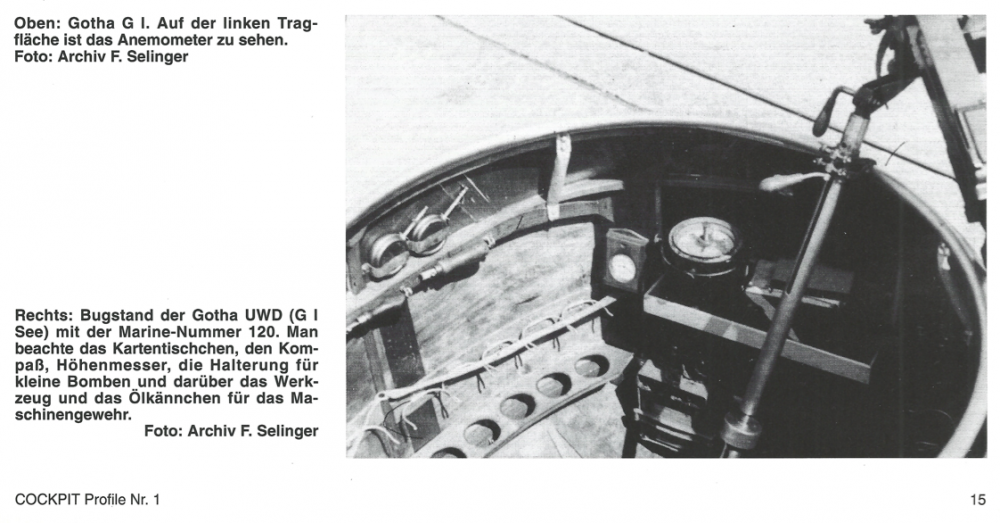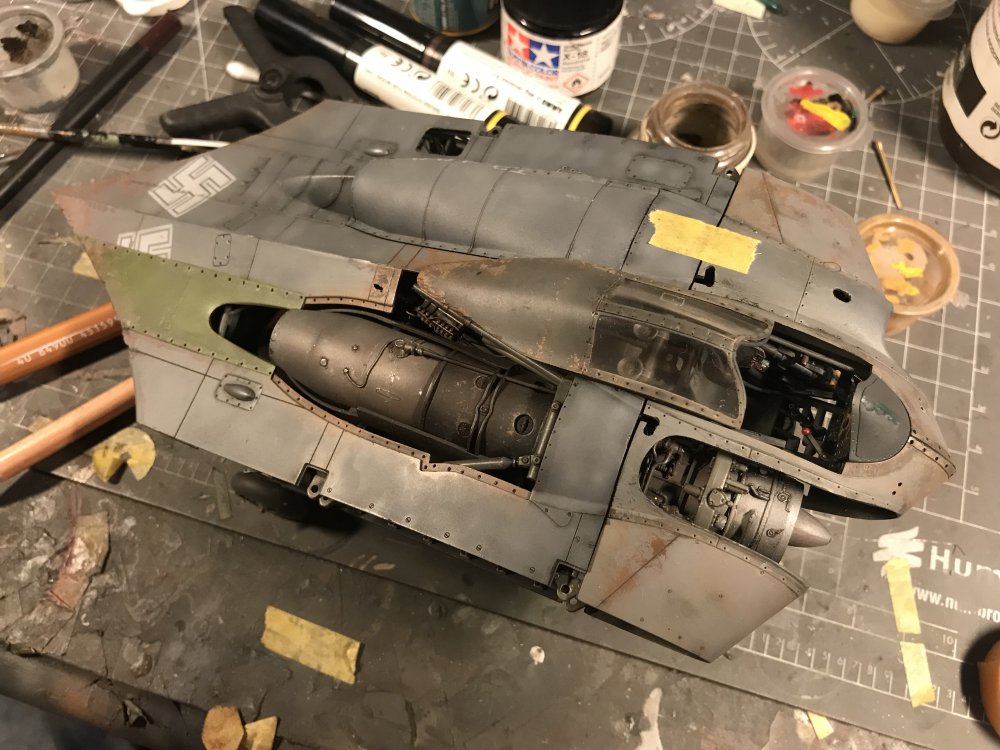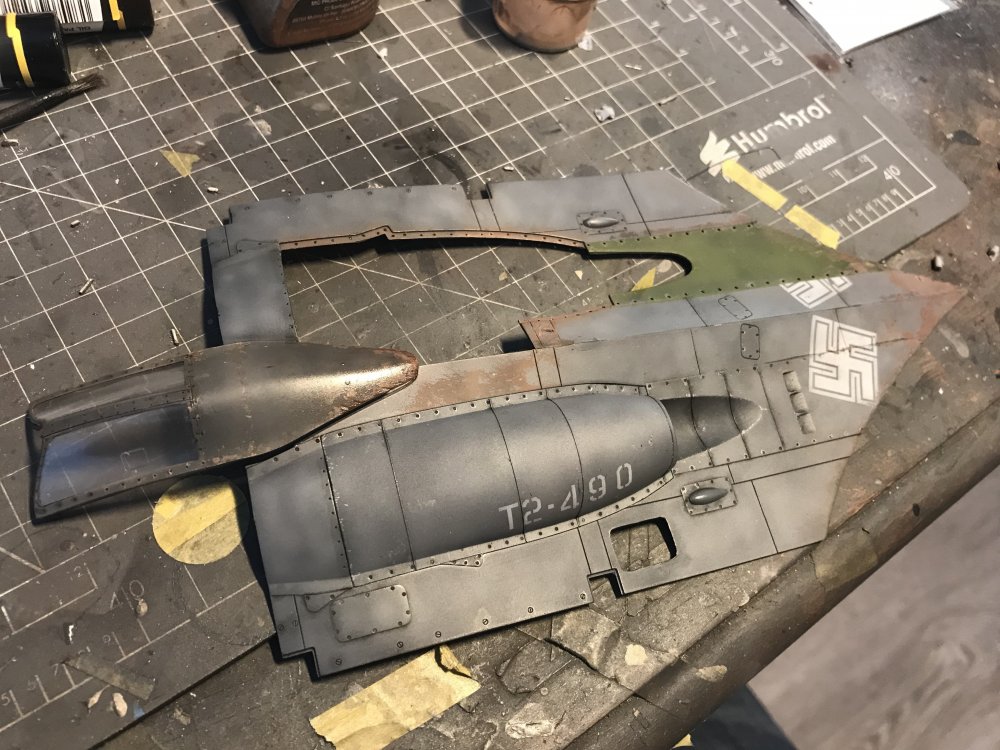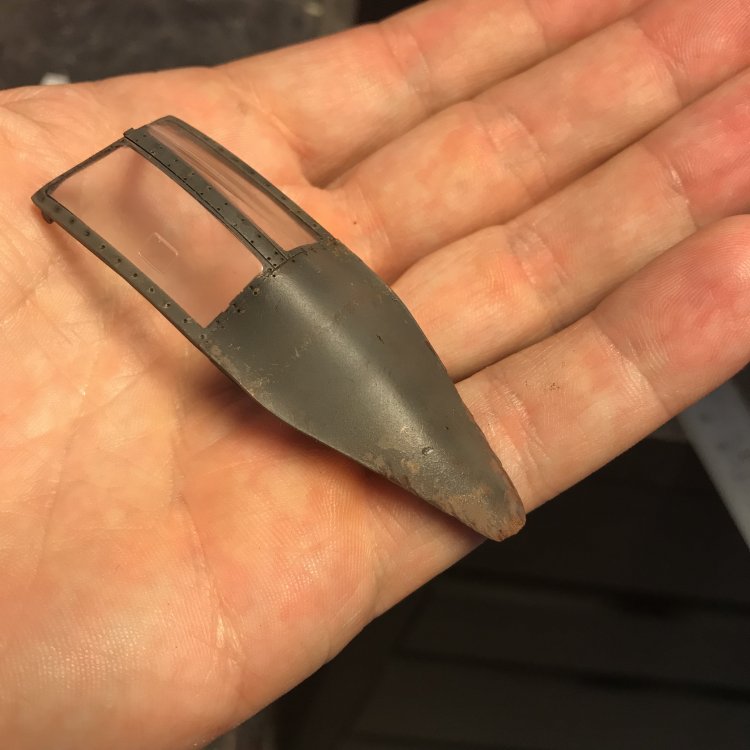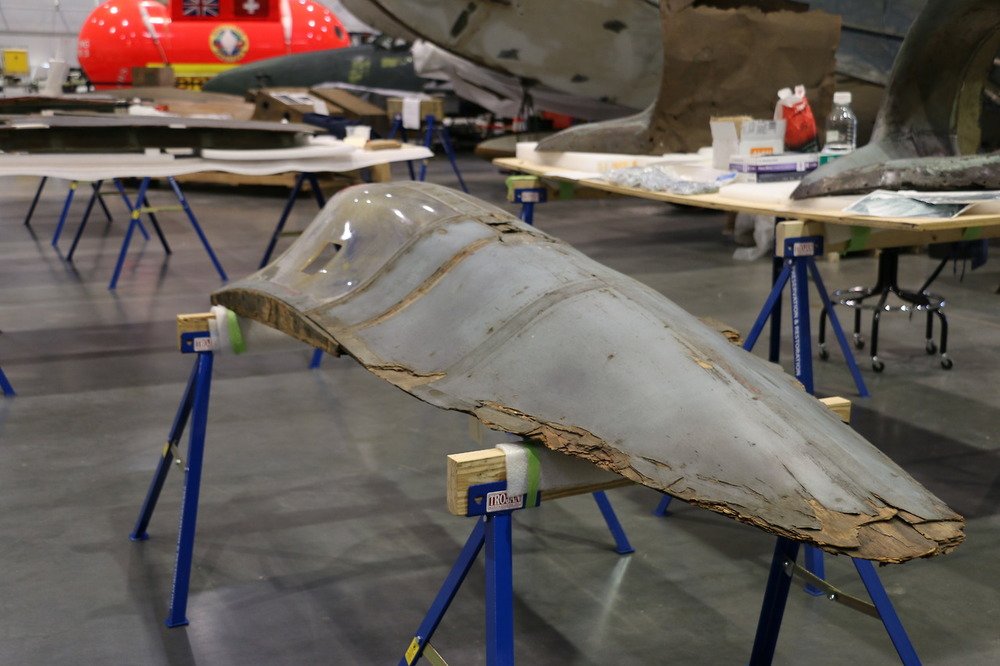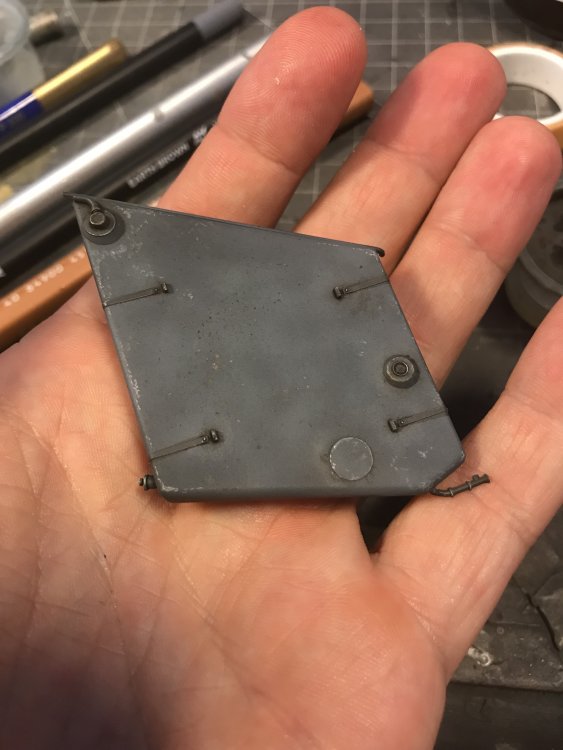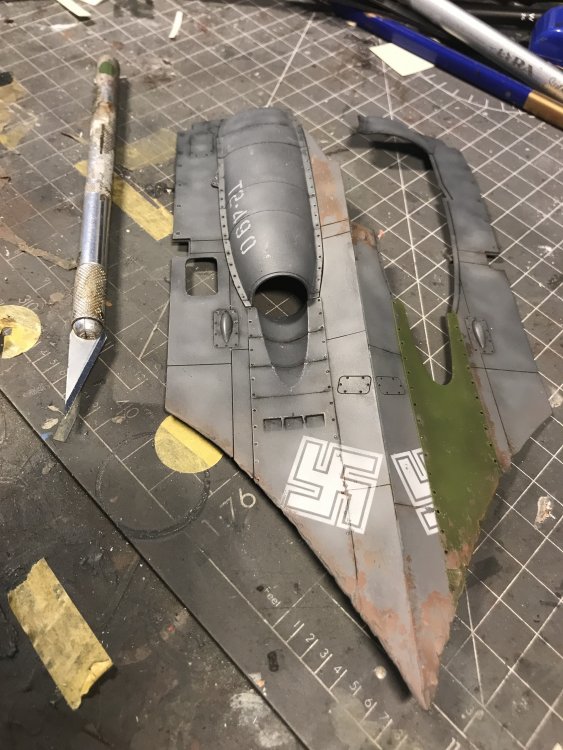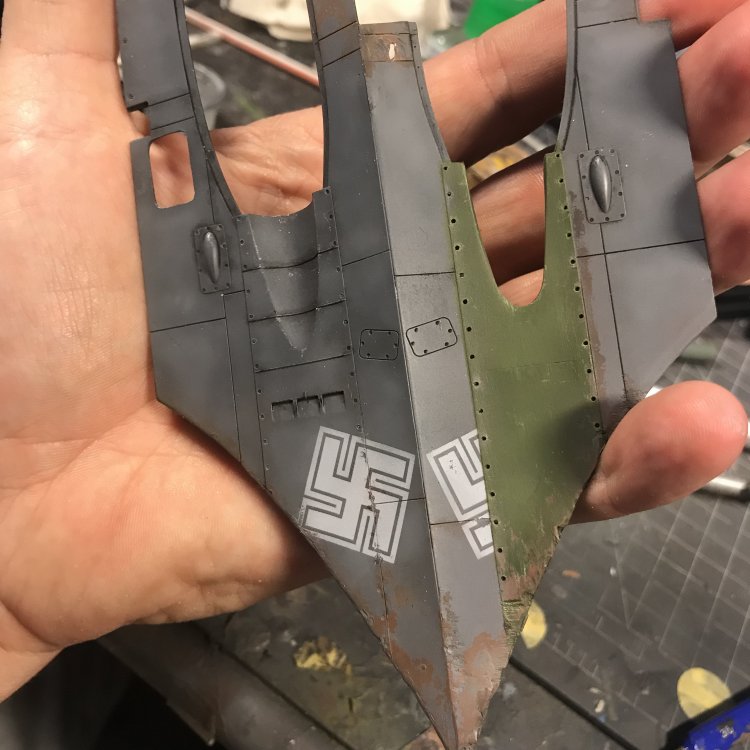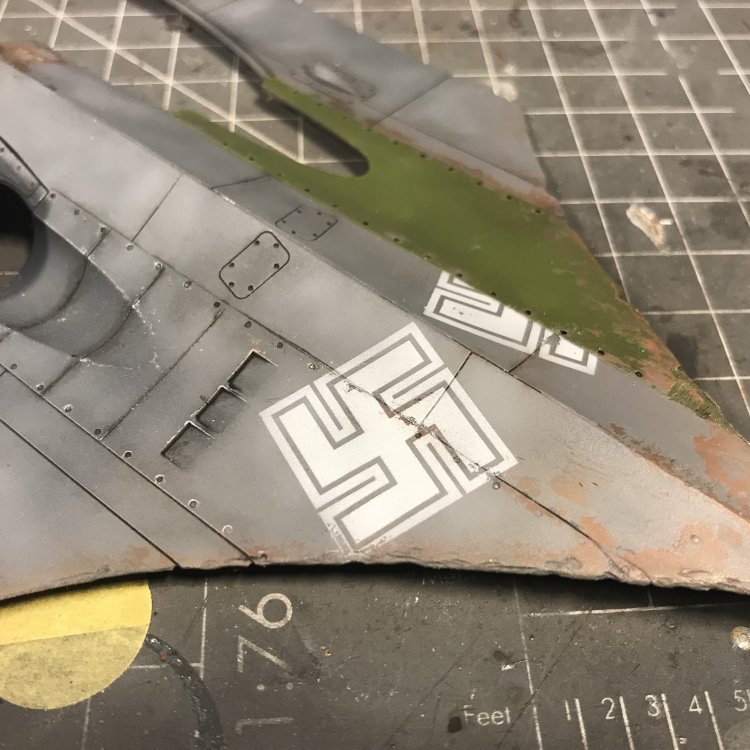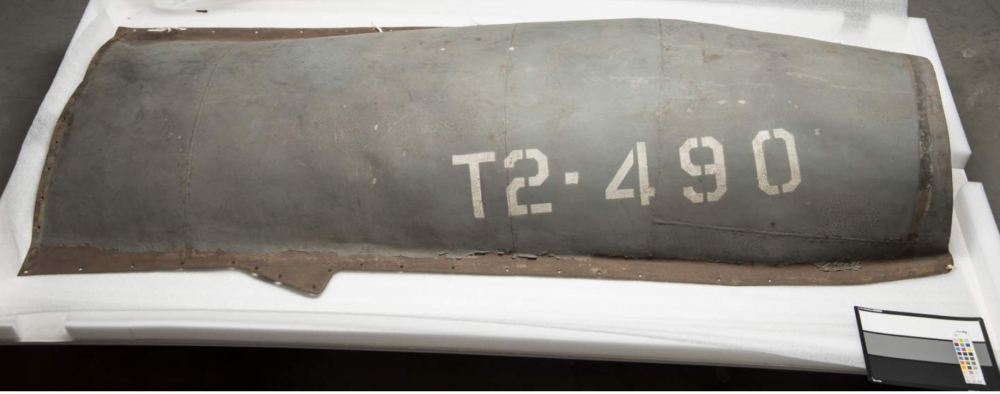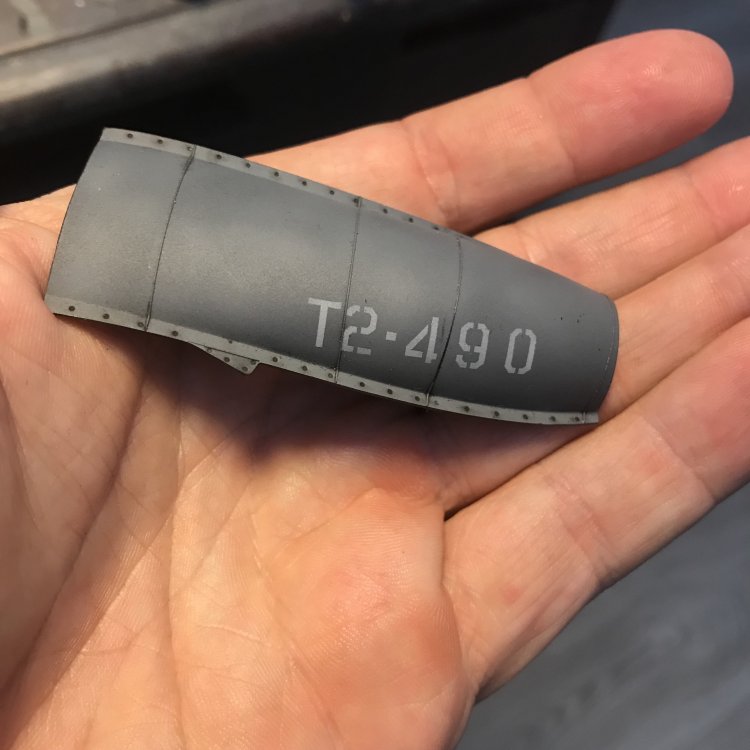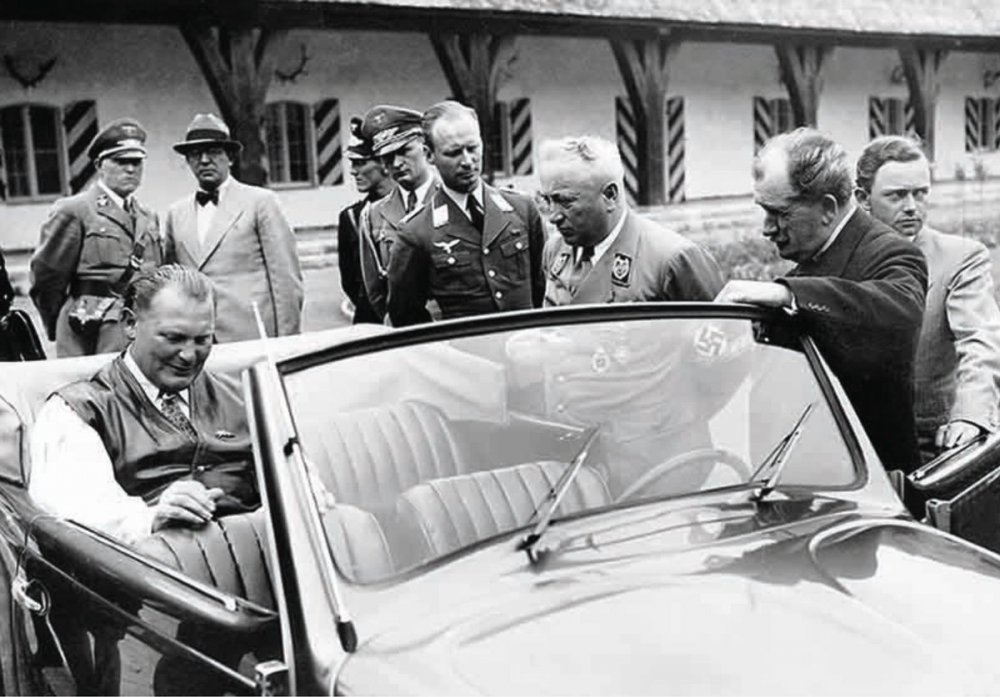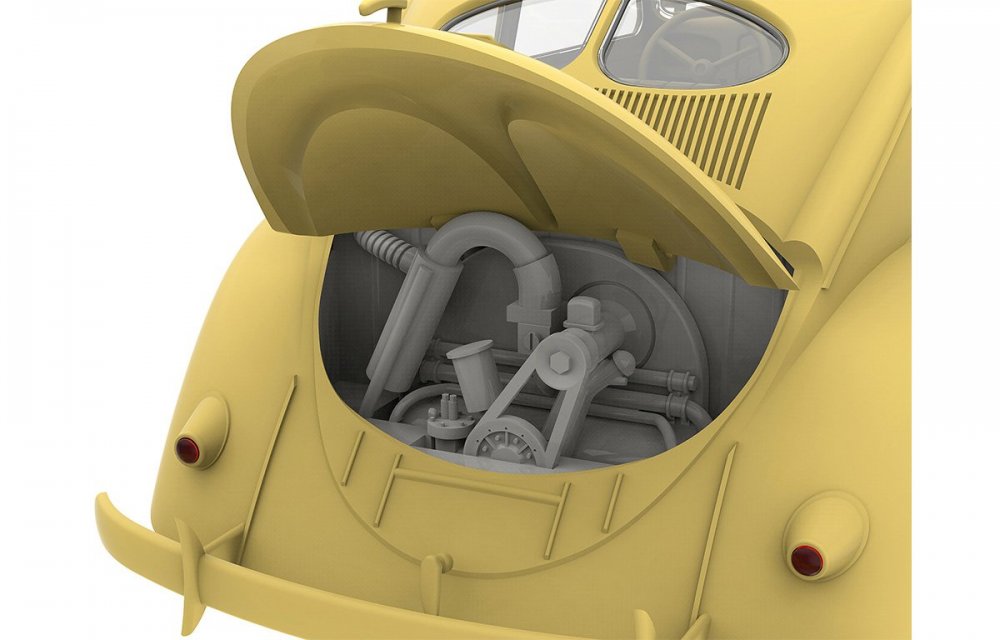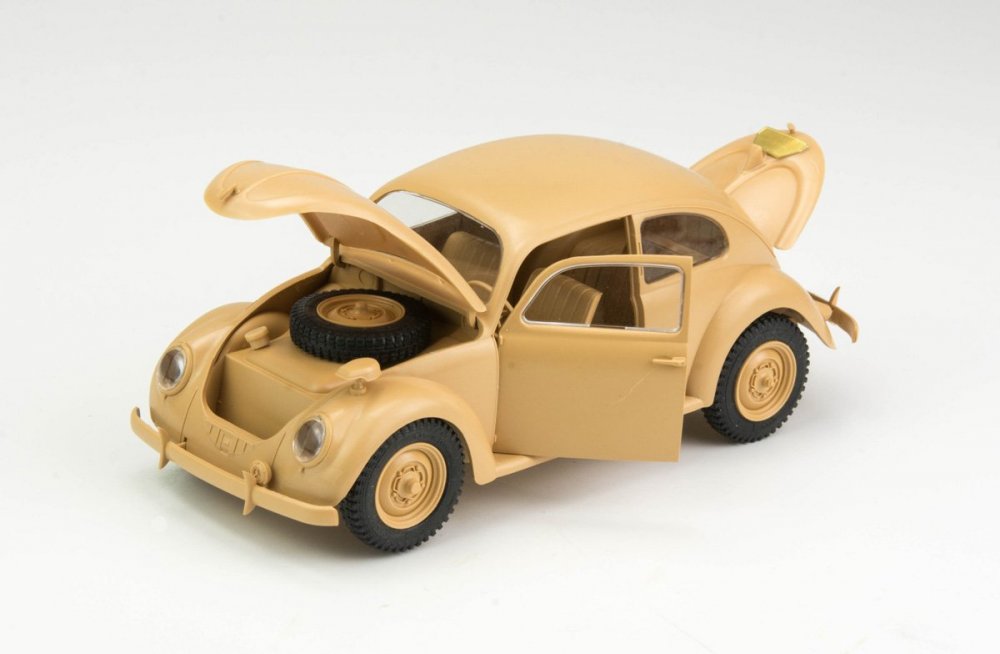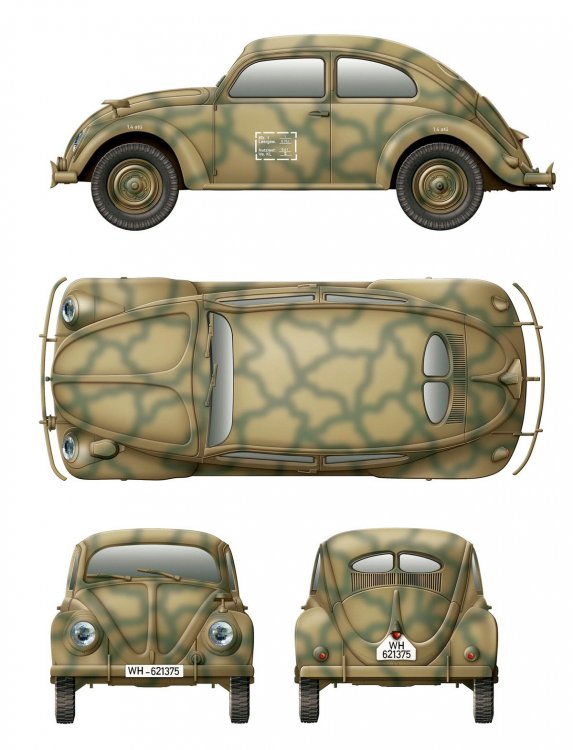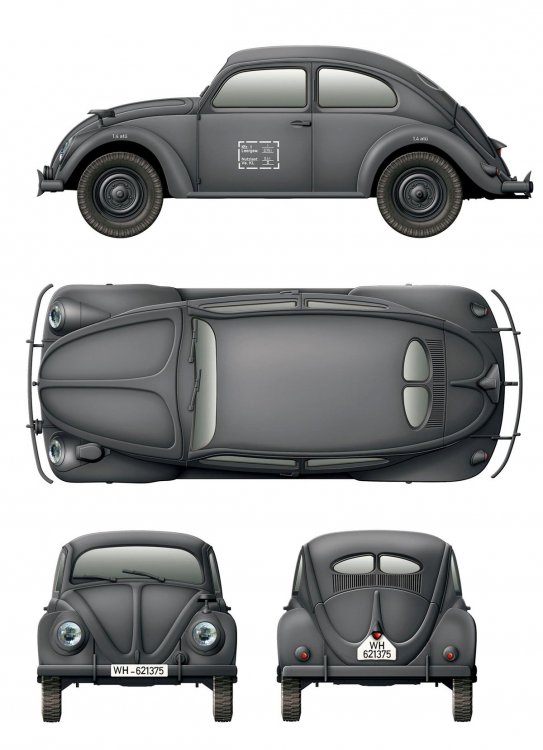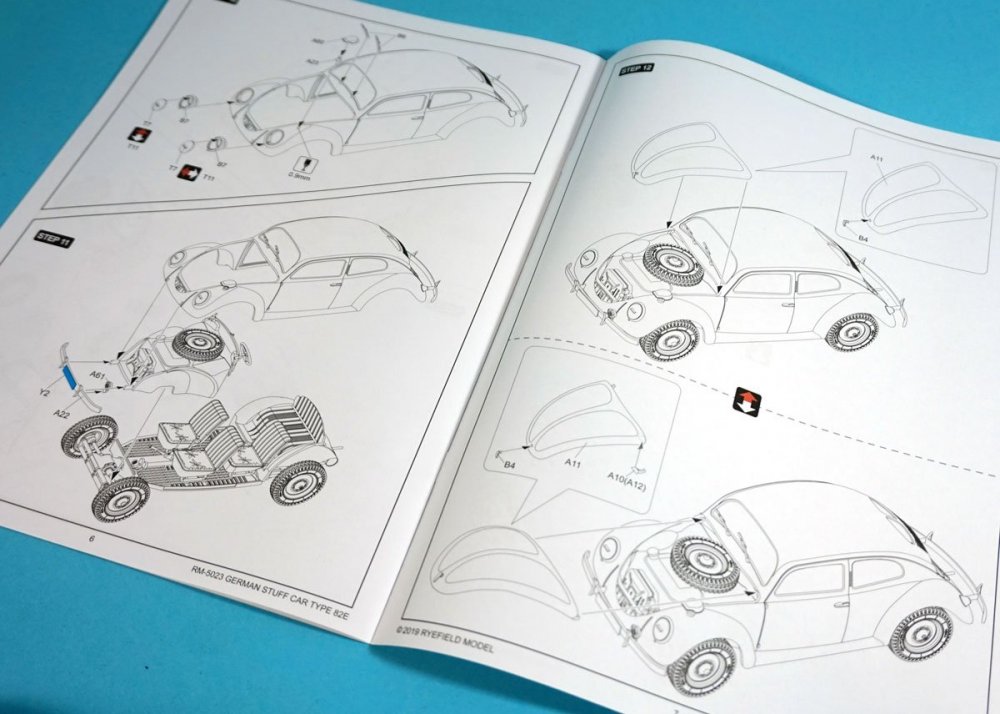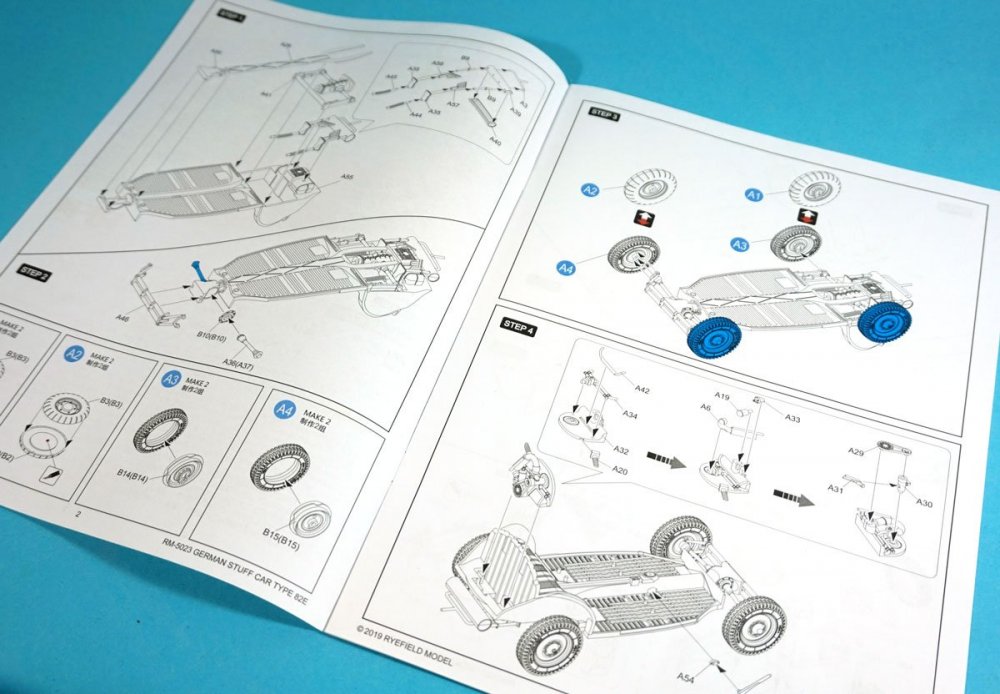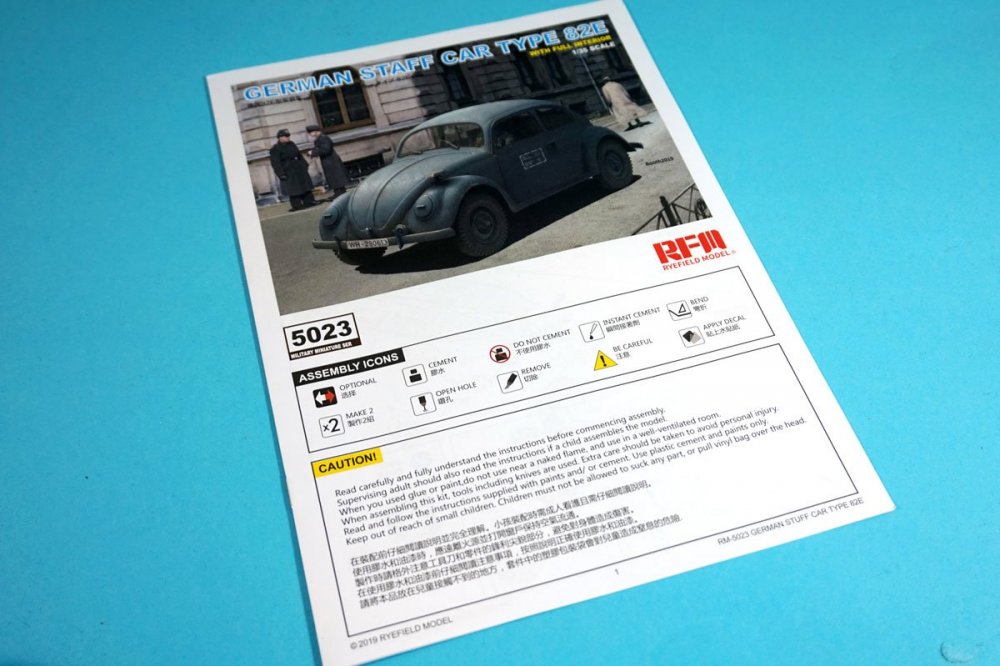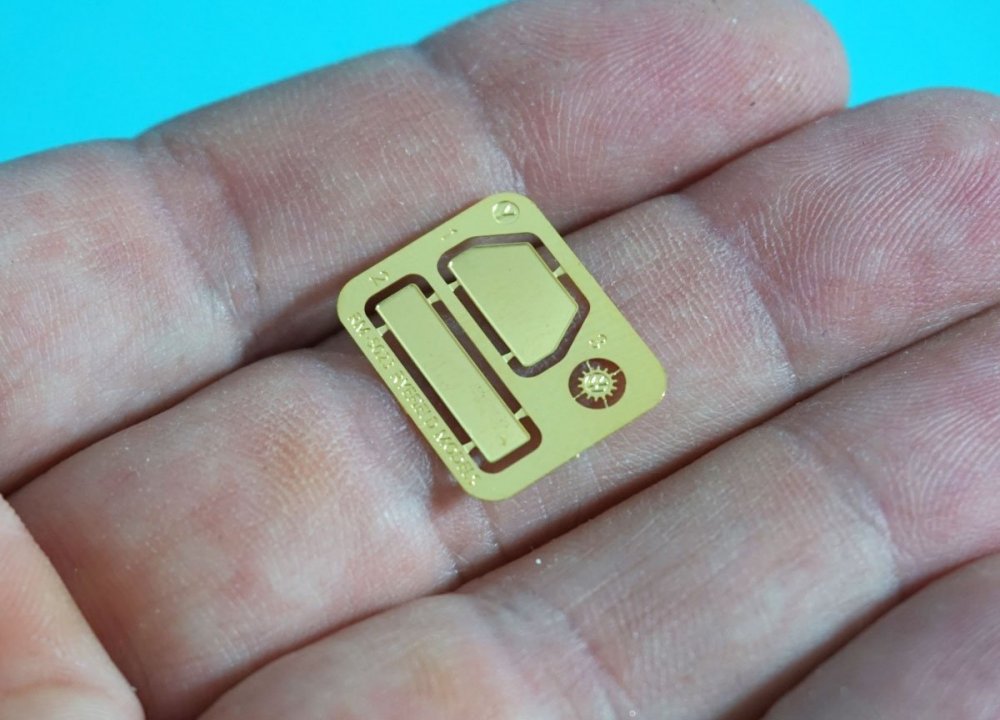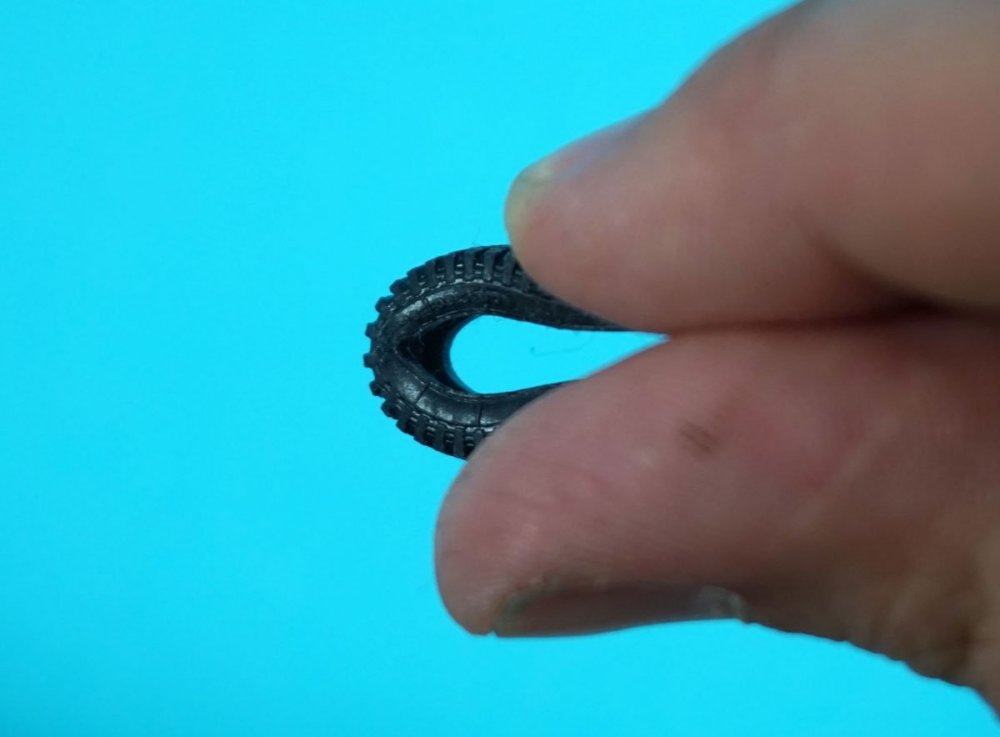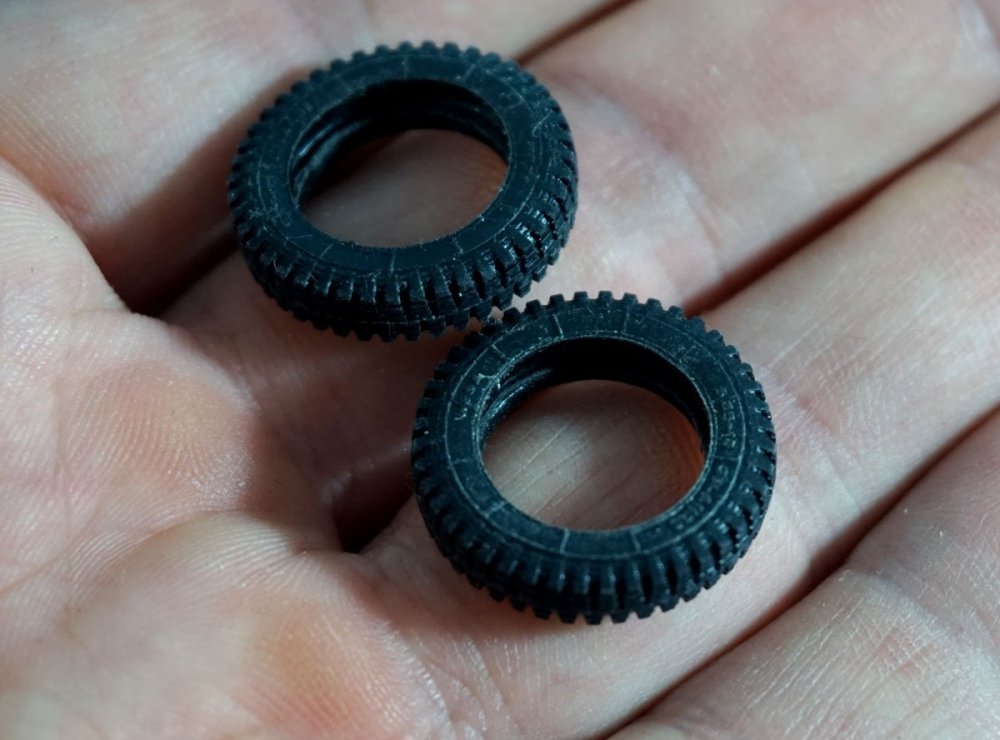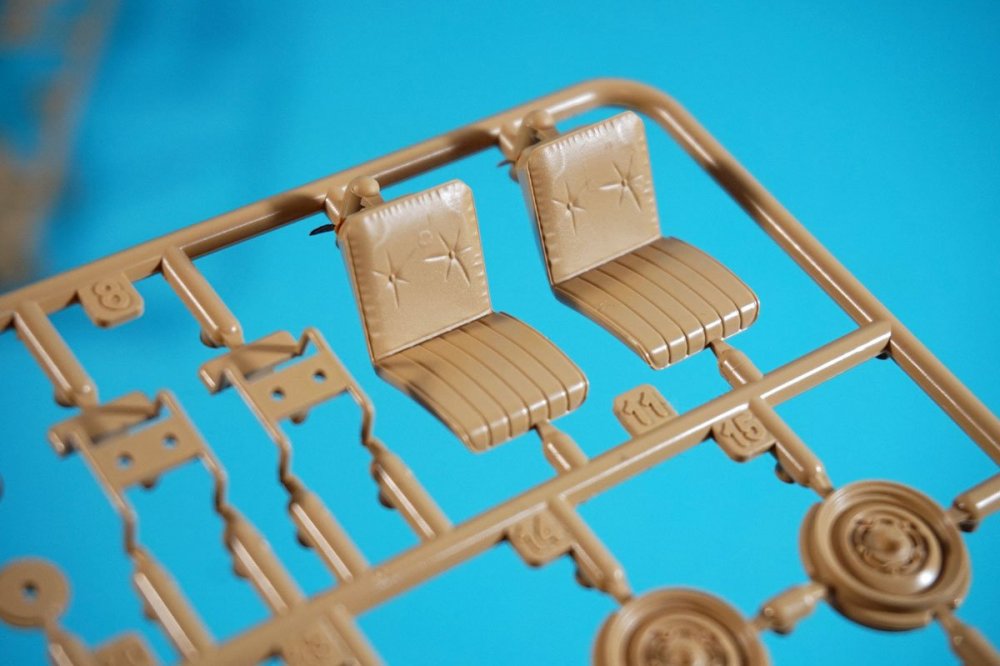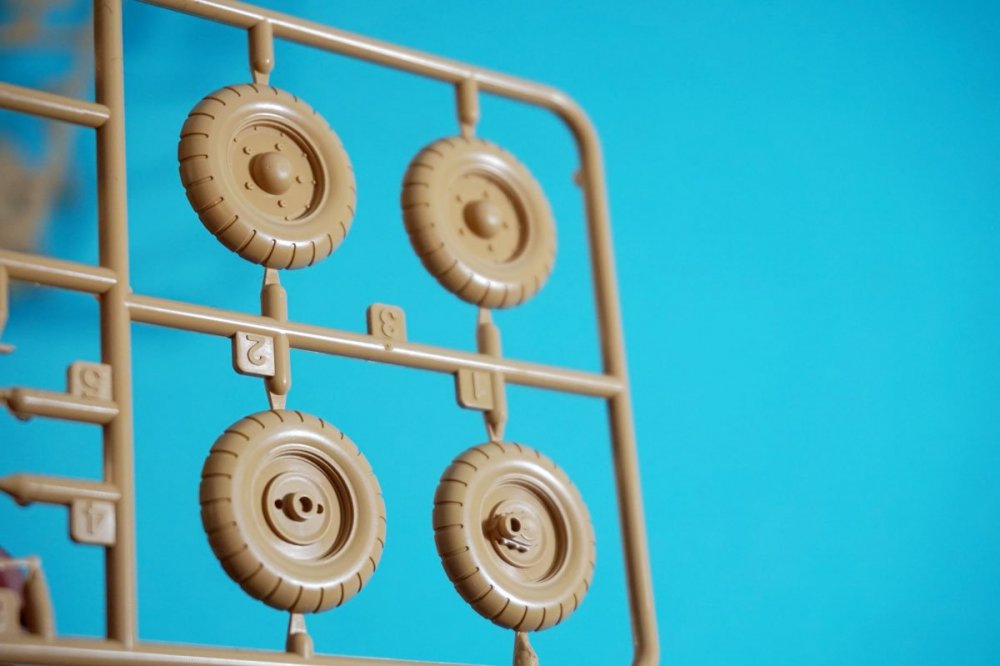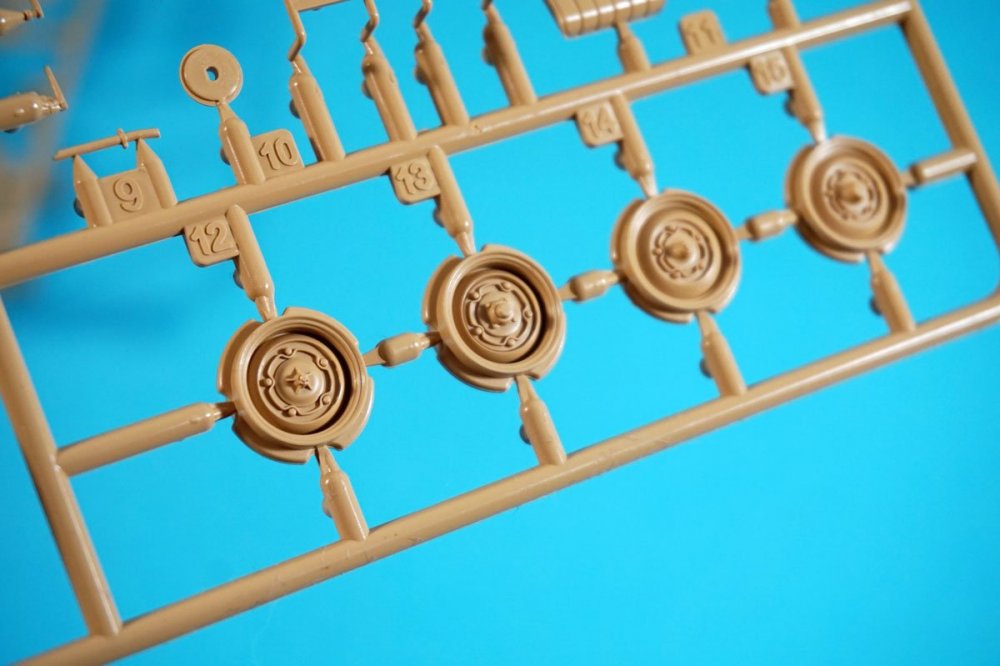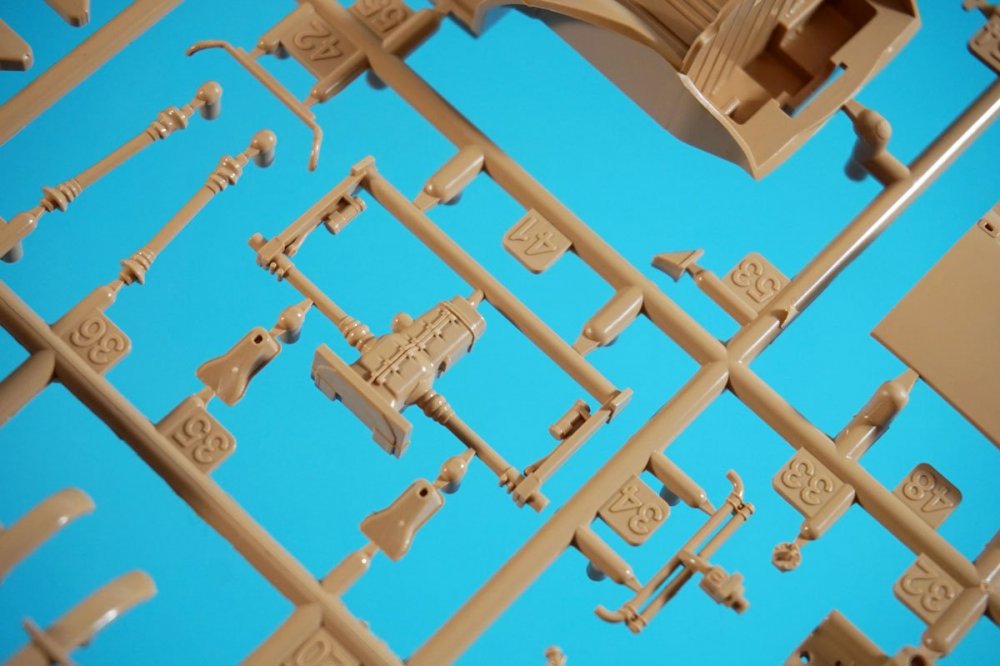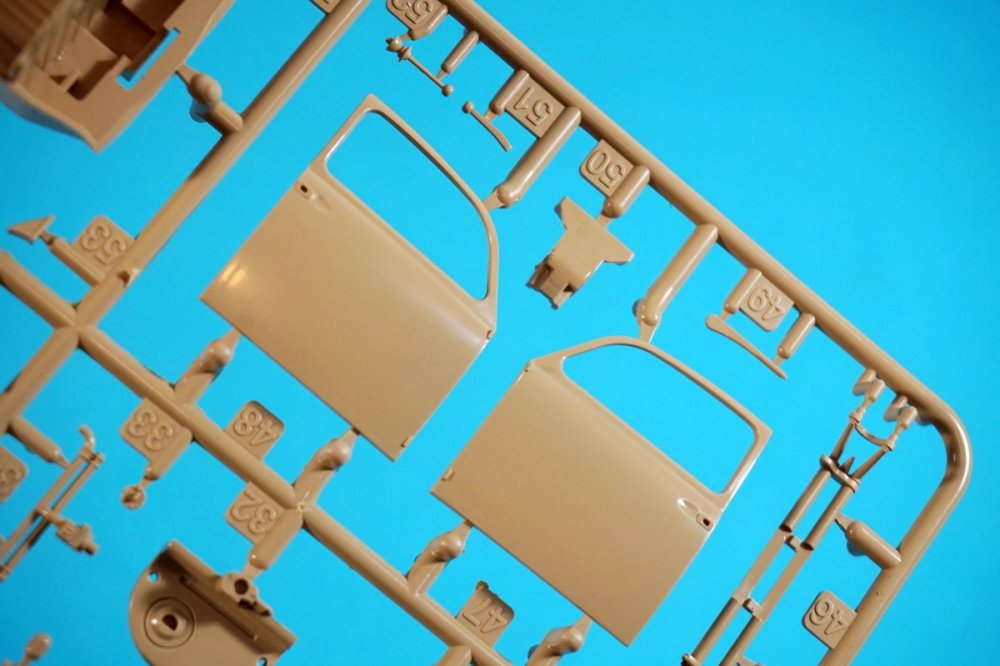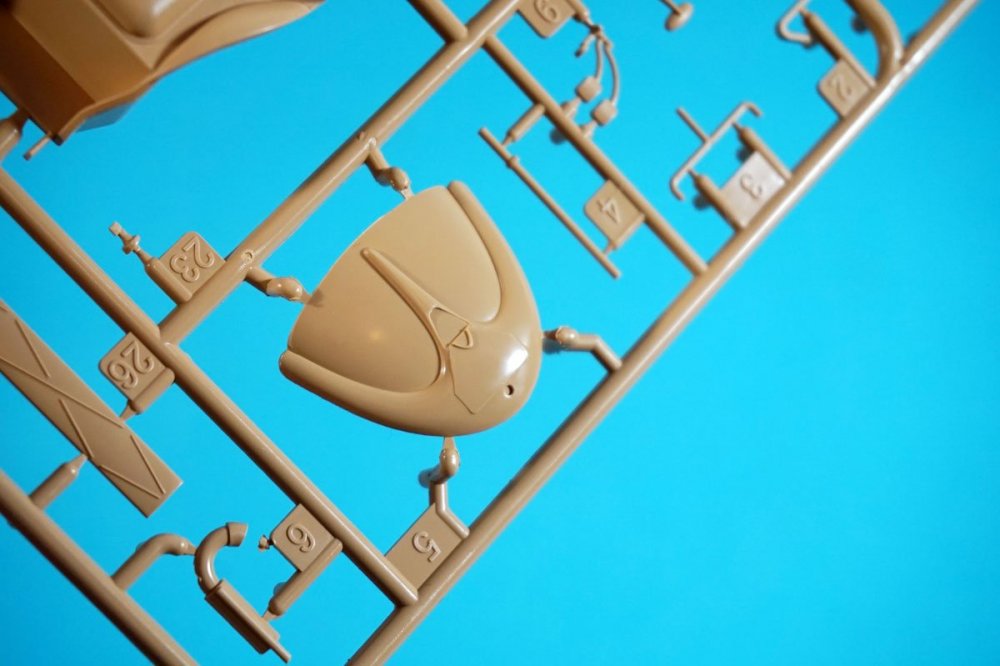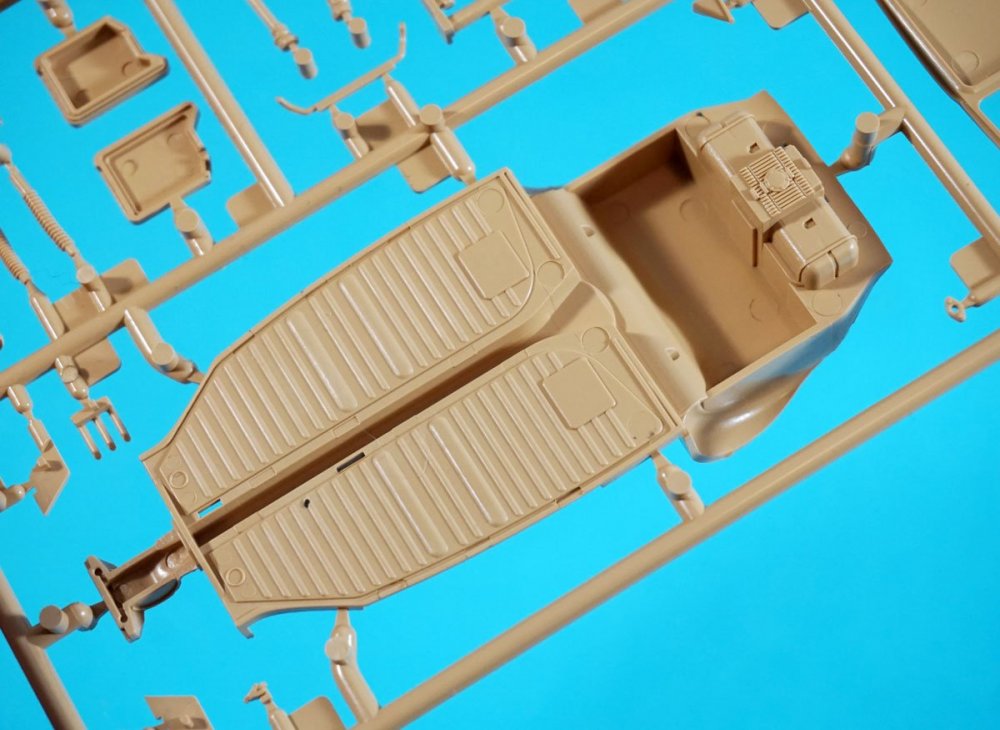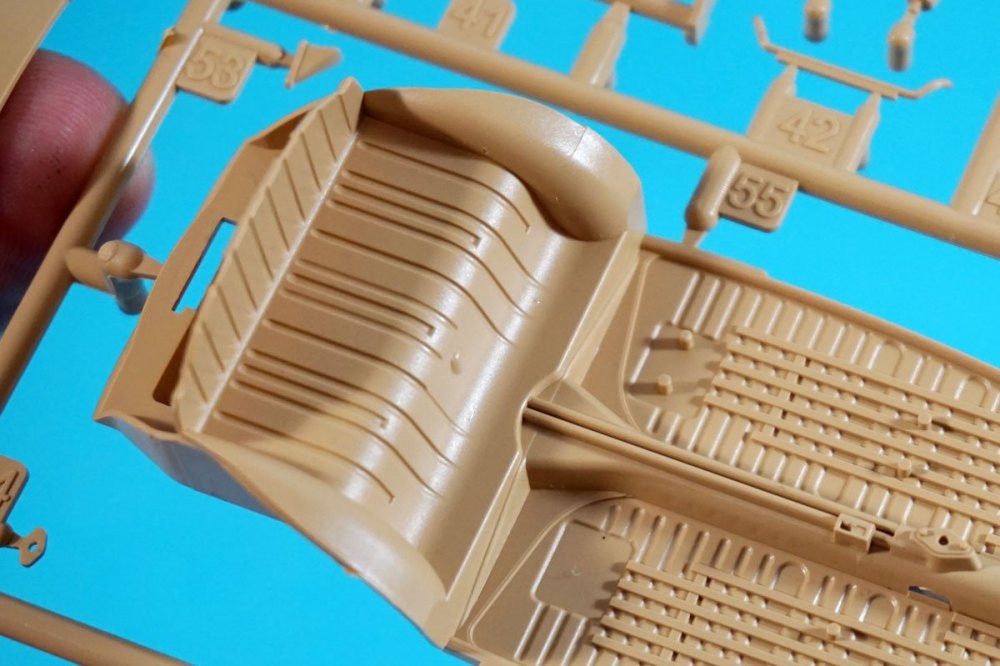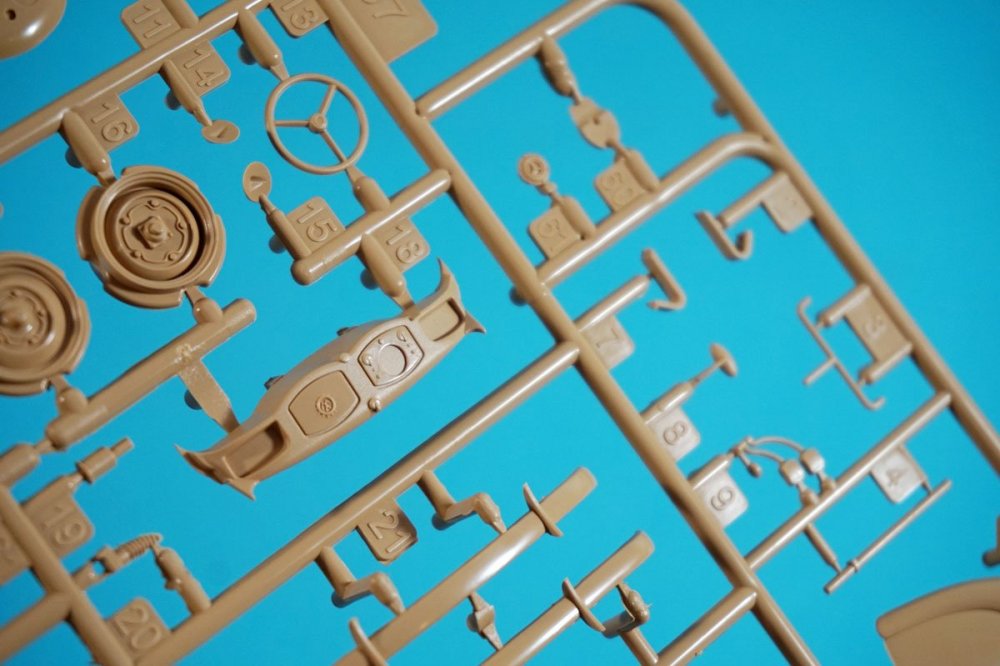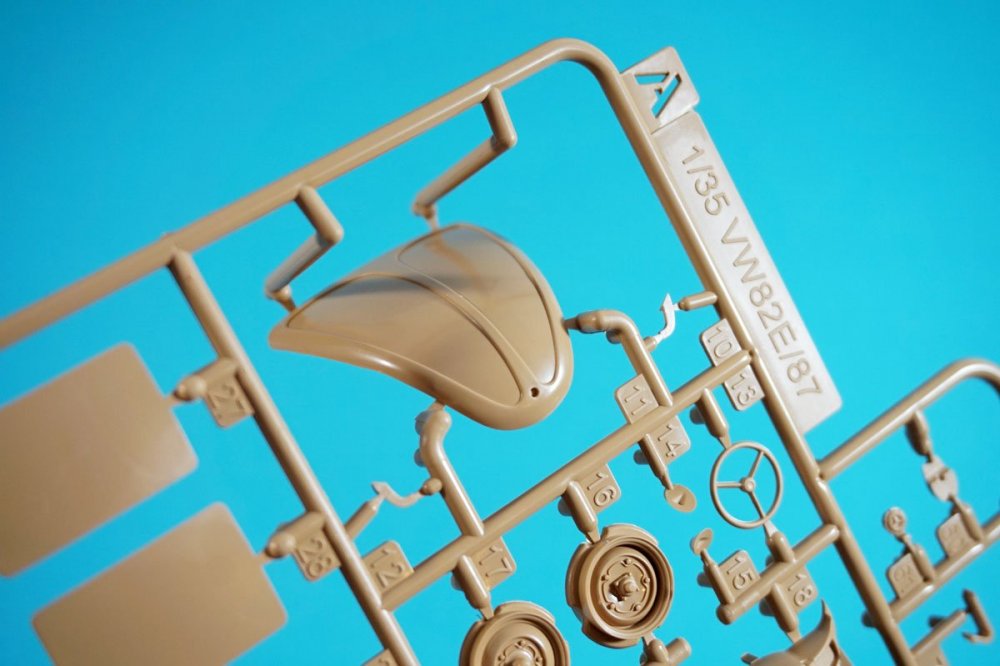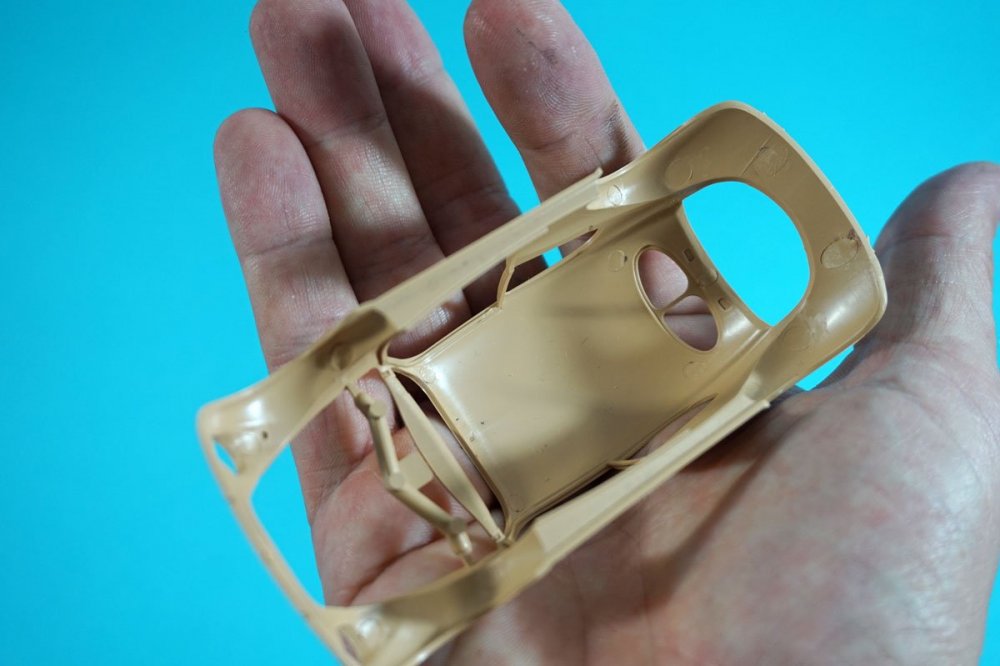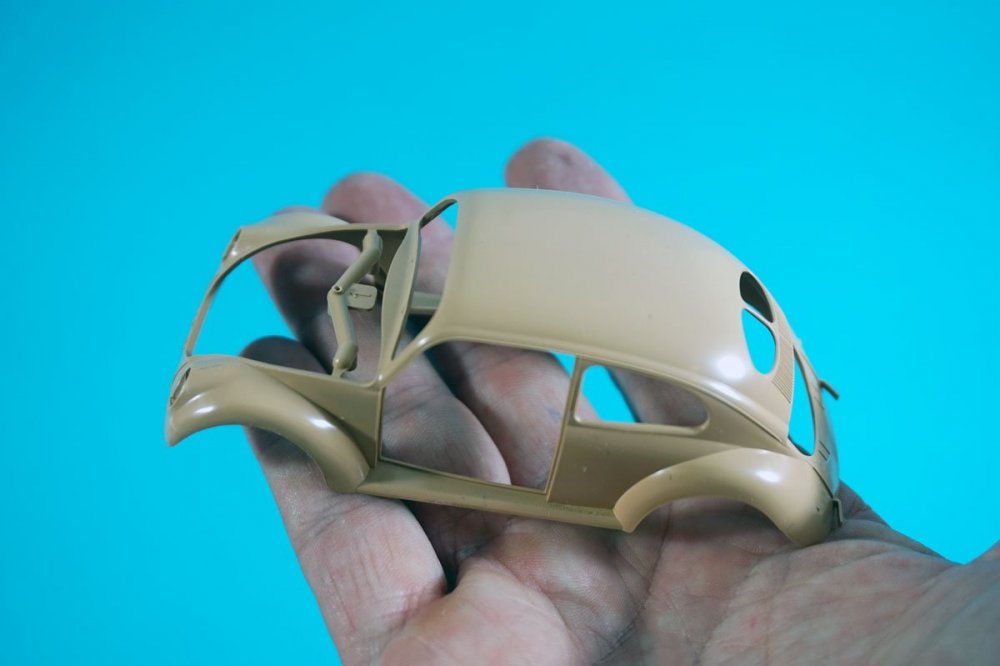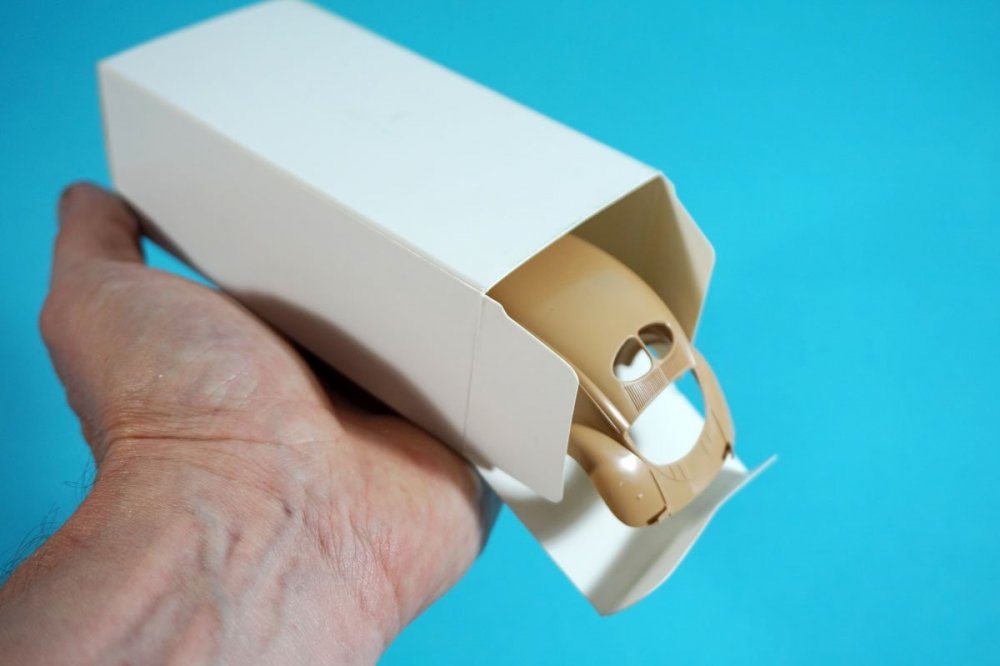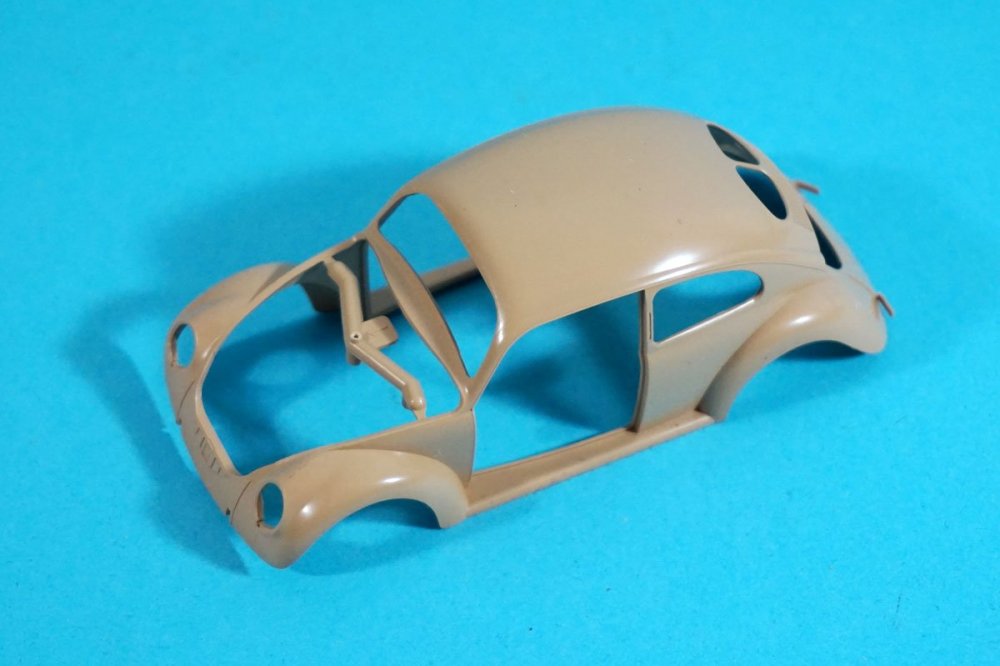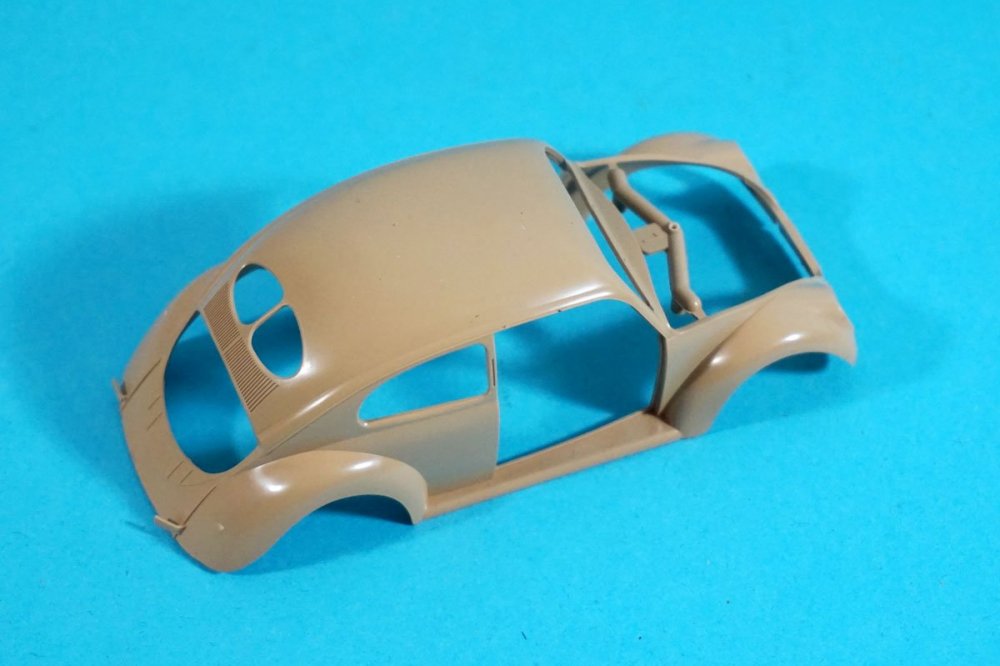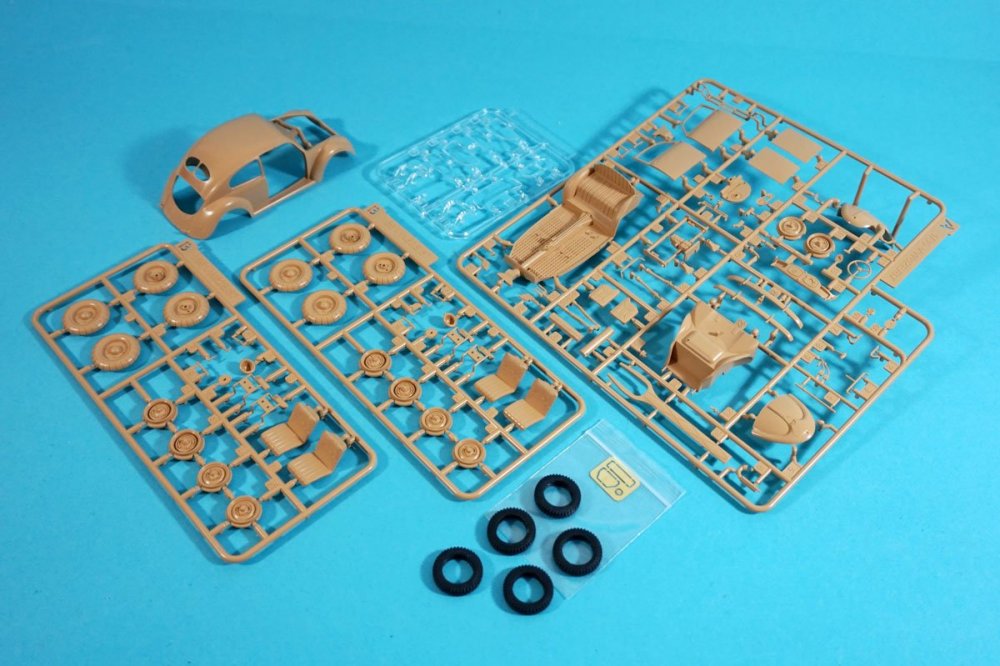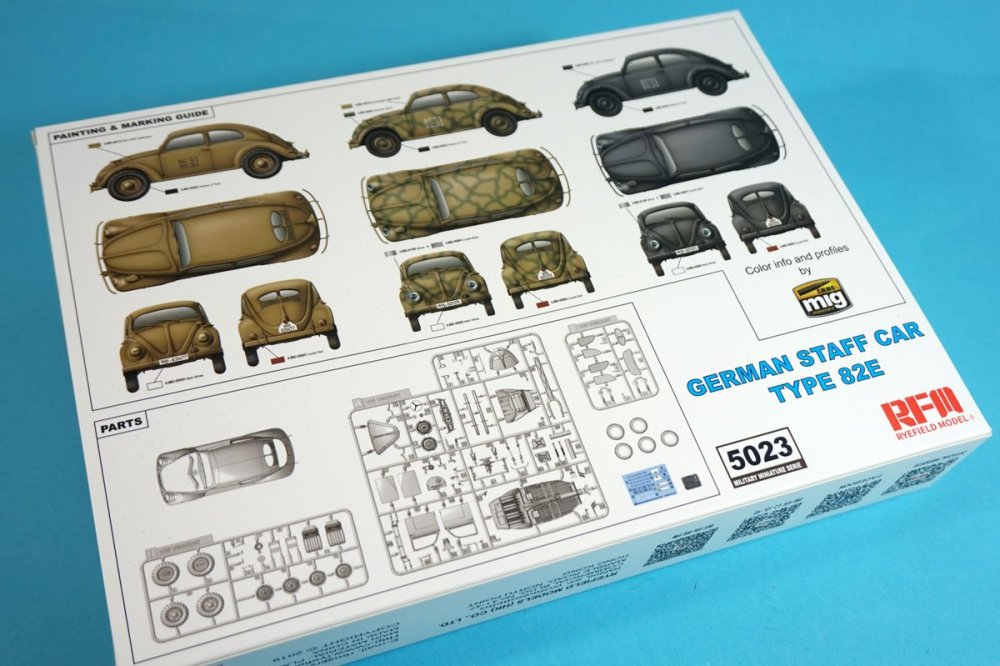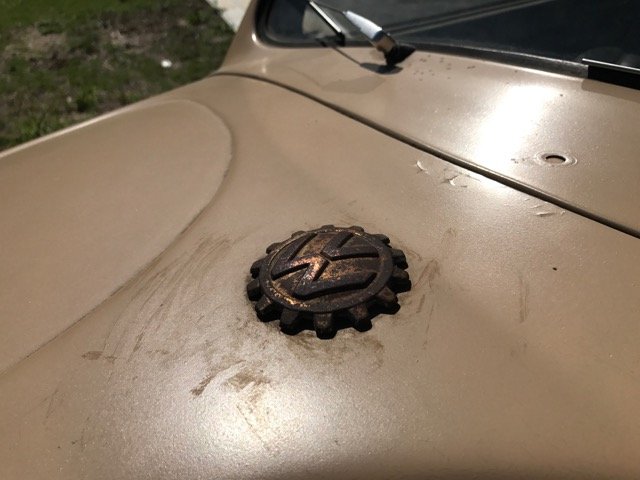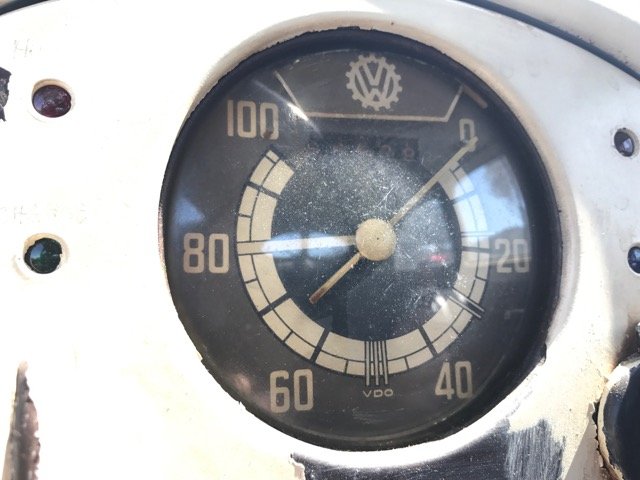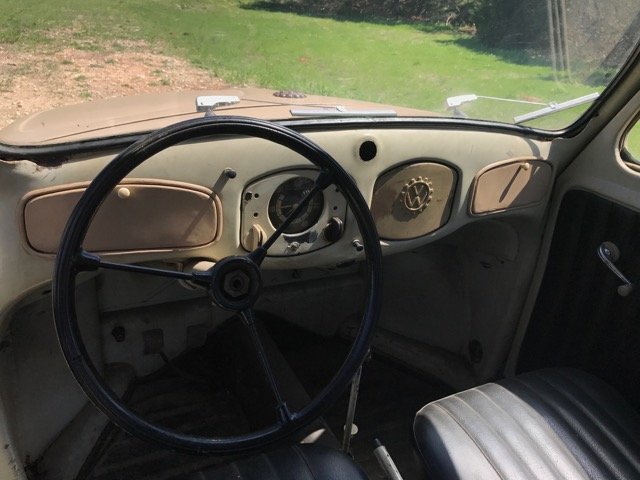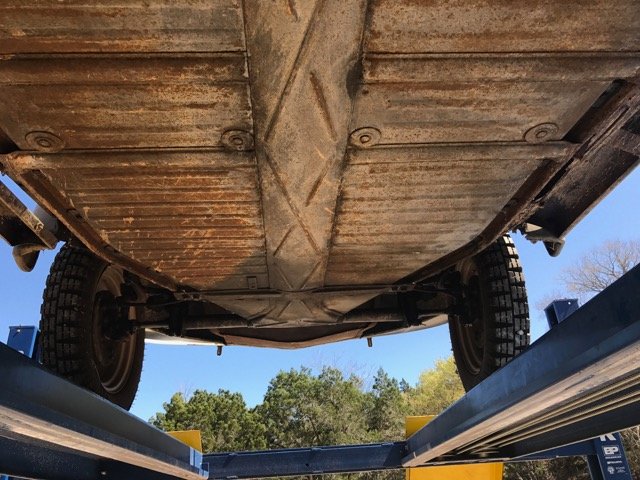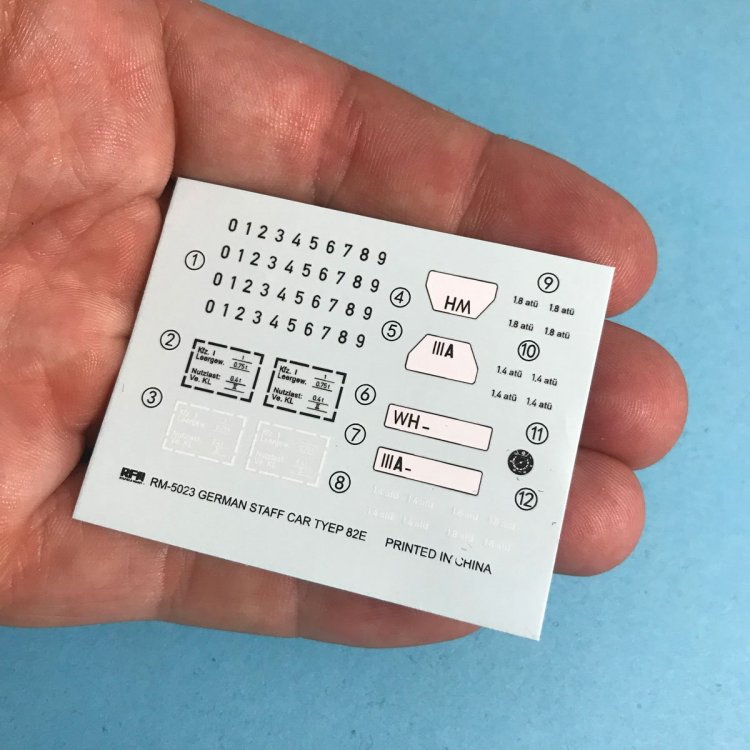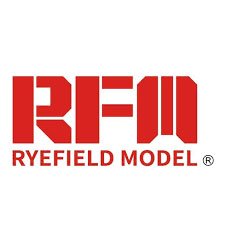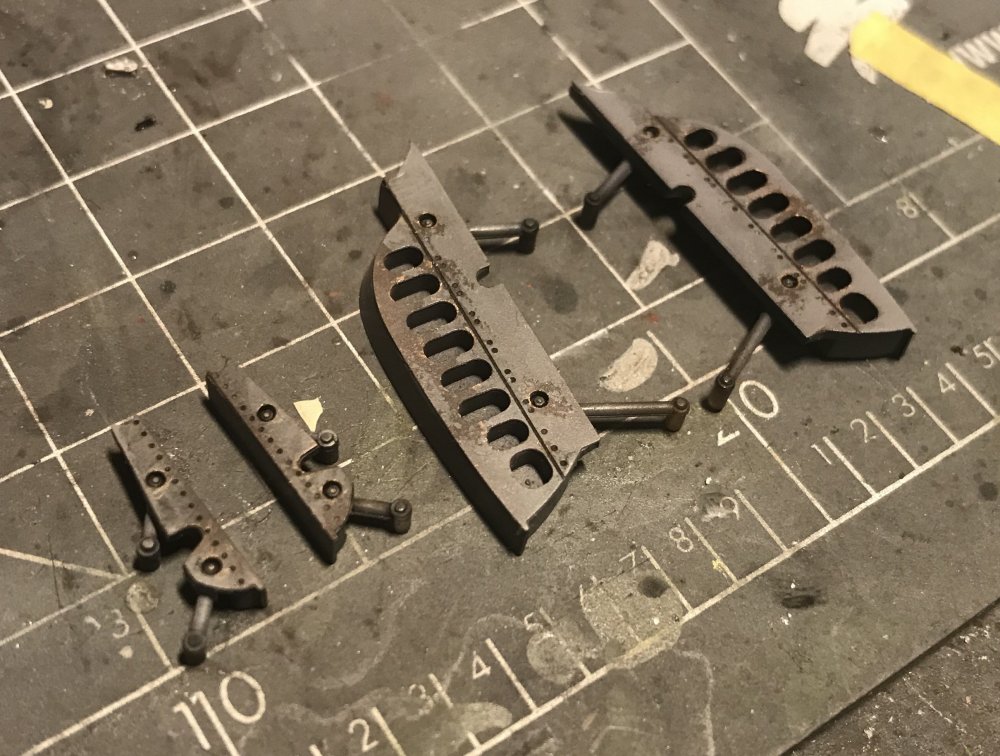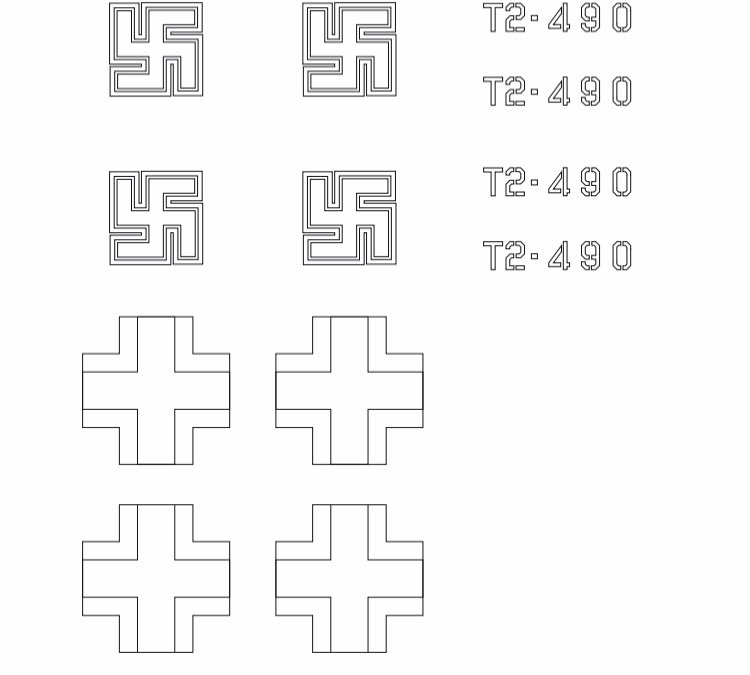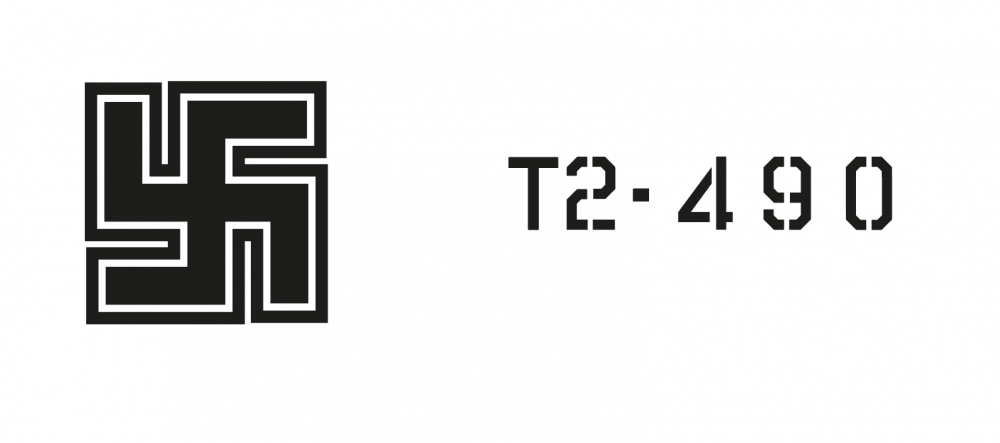-
Posts
4,777 -
Joined
-
Last visited
Content Type
Profiles
Forums
Events
Gallery
Everything posted by JeroenPeters
-
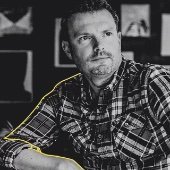
Ho229 at the Udvar-Hazy Center
JeroenPeters replied to JeroenPeters's topic in LSM 1/35 and Larger Work In Progress
-

Ho229 at the Udvar-Hazy Center
JeroenPeters replied to JeroenPeters's topic in LSM 1/35 and Larger Work In Progress
It’s not done yet... much more weathering to do. Front windshield, etc.. I am aware of the yaw control but found it more pleasing to the eye to pose them all open. Let’s say the controls are disconnected and the restoration crew is working on these I’m guessing a week or so and she should be ready. Ps. Rick Kranias checked the real wings last week and noted there is also a cross on the left wings underside, but NOT on the right wing. So i managed to get that right just in time -

Ho229 at the Udvar-Hazy Center
JeroenPeters replied to JeroenPeters's topic in LSM 1/35 and Larger Work In Progress
-
Focke-Wulf Triebflügel Interceptor Kit# 40002 Miniart Available from Hannants for 43,99 pounds Background For some reason the Luft ’46 subjects appeal to a lot of modelers and aviation enthusiast. Designs that never made it to mock-up stage, wind tunnel or prototype. Since I have gotten the question many times in the past, let me be clear: this concept is no different. It was drawn up and as far as I know, only one propeller blade with one Ram jet shape made it to a vertical wind tunnel set up. Ofcourse a lot of material was destroyed by German engineers at the end of the war, a lot of factories were bombed by the allies and a lot of material was captured and researched after the war. But since no records were found from the RLM, it looks like the idea for the Treidbflügel was born and died inside Focke Wulf walls. The only found Focke-Wulf drawings of the Triebflügel: Drawing of the ramjet: Overall drawings. Damaged, but readable: Drawing of the retractable landing gear: Here's a not so clear picture, but of utmost importance. One ramjet powered wing, placed in a wind tunnel setup: Let me start at the beginning This concept is based on the use of ramjet engines. Not to be mistaken by the pulse jet (like on the V1), the rocket engine or jet engine. The jet engine is capable of compressing air by itself and can thus create thrust from stand still. The ramjet however needs speed (or air to be blown in the engine). This does not happen when it’s standing still on the ground. The idea came from the French René Lorin back in 1913. He however lacked the proper materials to make it work. Still, we call the concept of the ramjet after him: Lorin engine. The advantage of the ramjet is that it’s cheap, powerful and does not use up too much fuel. The concept of the ramjet was further developed by Hellmuth Walter in 1936 and research continued by Eugen Sänger and Focke Wulf throughout the war. Still the problem remained on how to get enough speed (or air) through the ramjets in order to get them started. A few ideas were suggested. A small external jet engine, simple engine with propeller and a rocket motor. The latter seems to have been preferred. So inside the ramjets on the tips of the rotating wings were small rocket engines. These were started first, and these gave the ramjets the airflow the needed. The rotating wings had variable pitch. During the first stage of the startup procedure the pitch would be zero. When the ramjets were activated by the rockets inside the pitch would gradualy be turned up, creating lift. It was important to prevent the wingtips to exceed mach 0.9. This could be managed by increasing the pitch, thus slowing the wings down, but creating more lift. Even though the shape and lay-out of the Triebflügel (Power Wing) looks alien, it made sense. The reason the Treibflügel concept made it a few steps beyond the drawing board (windtunnel stage) is because the material needed for the power consisted of low grade steel, and as said: the ramjet engines were fuel efficient. Also: it needed no runway, had an amazing climb rate (670 ft p/sec), high altitude capability, low weight, simplicity and was able to run on different types of fuel (as long as they could be vapourised). The landing procedure is still a little sketchy. The aircraft would vertically reverse into the ground and deploy it’s 5 wheels. 4 in each tail tip and one big wheel in the main fuselage. Concepts for a catching / hook device were also found (maybe for naval use), but not further worked out. In terms of armament a possibility would have been 2x MK103 (100 rounds each) and 2x MK151 (250 rounds each). With these teeth and a top speed of 620 mph this would have been a serious threat for American high altitude bombers… Onto the kit As soon as I posted an image of this kit, mentioning I would review it, some Facebook member yelled: Toy! Even though that seemed like an immature reaction at first, it made me think. This is a kit of something that never really existed. It never even made it to the mockup stage. This makes it more fiction than airplane and moves close to the realms of Star Wars. So when does a kit become toy or makes it to scale model? Is the Ho229 a toy? The Huckebein (which only made it to mockup)? I like to think of this kit as a small step beyond. I would model mine without paint and puttied rivets. Like many Me262’s and He162’s were found. To be honest: mdoelling this kit in winter, navy or eastern front camo is what will make this a toy (In my honest opinion). I search the net high and low and managed to find the Focke Wulf drawings (number 0310 240-004 and 005), dated September 30, 1944. These show the main shape and lines of the Triebflügel. Everything beyond that has had to be conjured through the years. There have been kits before. Like the resin Antaris 1/32 version, the Arba 1/48 resin version, the HUMA 1/72 version and the most recent: the Amusing Hobby 1/48 offering. A great kit by the way, reviewed by James Hatch here. It’s interesting to see how different companies interpret (and fill in the gaps) when it comes to rivets and panel lines. Here's a drawing showing some the insides, that give some idea of where panel lines would be situated: The only thing that eludes me is why Miniart places their range of aviation subjects in their armour line-up: scale 1/35. They even categorize this kit in their ‘What if?’ section alongside their Soviet Ball Tank. I can imagine (like the Tristar 1/35 Storch) that it makes a good subject for a diorama with US soldiers crawling all over it. But can the same be said of their Flettner? Or coming Rota? It’s as if they ignore the presence of a popular 1/32 aviation scale norm and set sail on their own journey. For me it’s not a problem, since this baby will be displayed alongside the Takom V2. The part breakdown of this kit is pretty simple. Forward and rear fuselage halves. Rotating wings in halves with variable pitch, open gunbay (which is a section where less imagination is needed, since we know it would carry 2x Mk103 and 2x Mk151) and a cockpit that feels like the cockpit of a He162. All in all the part count is very manageable. Tail sprue A: Instrument panel: Armoured seat: Rivet detail. I love the smooth surface and sharp detail: Tail sprue Ab: Nose sprue B: Opening for the gunbay: Gunbay detail: Sprue Ba: Cockpit tub: Some simplified detail, but this area will benefit from the spares box. Add your own rudder pedals, instruments, seatbelts. The cockpit does come with PE levers... Gear: Sprue Ca and Cb (2x) Armament: Mk103 cannon: Mk151 cannon (I will replace the nozzle for the Master barrel version), or you can drill out the holes with a fine drill: Sprue Db, Nose cone: Sprue Cd (2x) holding the wheels, tailplanes, gear parts: Rudder pedal. We will replace this for a PE version: Sprue C (3x), ramjet and wing: Ramjet detail: Sprue D, Clear parts, including the Revi gunsight. Even if it's in 35th scale, I will replace this for a Quickboost version: Photo etch parts. I think I'll only use the levers Decals: The red text looks to be 'What if' too. I can't make out what it says I love the instructions. Nothing fancy. Clear and comprehensible: Schemes: Air Defense of Berlin 1945 All aluminium with puttied rivets and panel lines. 5thpre-production model in one of the training fighter aviation schools. Germany 1945. An all red brown appearance with a large V5 marking. Jagdgeschwader 333, Eastern Front, 1947 This is where we enter the realm of Star Wars… Jagdgeschader 54 “Grünherz”. Eastern front, winter of 1946. A winter camo version. Zerstörrergeschader 1. Germany 1945-1946 With the Bf110 Wespe art on the nose. Aircraft carrier “Hermann Göring”. Mediterranean, 1947. Based on the concept notes of landing this aircraft by a catching hook device. Verdict This kit has balls. It’s based on mere drawings and an idea. All panel lines, cockpit layout, smaller details, are interpreted by looking at other subjects. There is a pretty big market for Luft ’46 subjects and this will be a bulls eye if you ask me. Even if the scale is not compatible with the usual 1/32 scale. The night fighter version of this kit, is a step too far if you ask me, since this is already a step beyond where a scale modeler would go. The first scheme in the instructions (all aluminium with puttied rivets and panel lines) would be my choice (air defence of Berlin). The quality of the plastic, decals, research, creativity needs to be applauded and I can only hope their ‘What if’ series expands. A Huckebein? Lippisch? Bring it on! Word of warning: There is an error in the instructions Aaron Scott pointed out. Do not glue the armoured seat backplate before you install the top part of the cockpit! A special thanks to Miniart for supplying the review sample. Stay tuned for a build of this subject here on LSM!
-

HB P-61 finished FINALLY
JeroenPeters replied to JohnB's topic in LSM 1/32 and Larger Aircraft Ready for Inspection
Impressive!! -

Ho229 at the Udvar-Hazy Center
JeroenPeters replied to JeroenPeters's topic in LSM 1/35 and Larger Work In Progress
Adding gearbay doors. Well.. only the ones that are on the real one. Also sprayed the balkenkreuzen. Special thnx to Mal Mayfield! -

Ho229 at the Udvar-Hazy Center
JeroenPeters replied to JeroenPeters's topic in LSM 1/35 and Larger Work In Progress
-

Ho229 at the Udvar-Hazy Center
JeroenPeters replied to JeroenPeters's topic in LSM 1/35 and Larger Work In Progress
Hi Randy, thnx! You’re right! I indeed already installed the airbrakes. The rudder drag brakes will be all be posed open to make the huge wings look interesting, but i get the picture. It would make more sense to pose them open on just one side. I will actually build the wings. -

Ho229 at the Udvar-Hazy Center
JeroenPeters replied to JeroenPeters's topic in LSM 1/35 and Larger Work In Progress
Thnx guys! built the wings. Added damage (as per reference). Replaced airbrakes by photo etch airbrakes. Sprayed primer. Polished the primer smooth. Cut downnthe trim controls and made my own with leftover pe. -
1:32 Gotha UWD Wingnut Wings Catalogue # 32053 Available from Wingnut Wings for $199.00 plus shipping In 1914 the German VPK (Verkehrstechnische Prüfungs Kommission) dictated that three types of tactical role aircraft were to be developed, each in their own class and with their own specifications. Type 1: A two seater, 130hp, for longer flights, carrying a small bomb payload or photographic equipment. Type 2: A light, very maneouverable two seater for short flights. A plane that can take off quick and is armed with self defence weapons. Type 3: The heavy bomber. Like the Gotha G.1. A three seater with at least 200hp. A wingspan that is only limited by what ground transport can handle. Heavy bomb load (450kg) and a speed of at least 120km/h. It should be able to climb 800 meters in 10 minutes and be able to fly for 6 hours. And last but not least: five men should be able to assemble it after transport in 1.5 hours. Fellow LSM reviewer James Hatch already elaborated on the background and history of the Gotha G.1 here. But today we are covering the Gotha UWD. Or: Ursinus Wasser Doppeldecker. The Gotha G.1 was actually born from a design for a civil(!) seaplane. So modifying it back to a seaplane was relatively easy. On 14 April 1915 (only two weeks after the first order of the G.1) the German Navy ordered their first UWD for long range recon and torpedo missions. This machine received marine number 120. It carried two Mercedes D.III engines with each 160hp. It took the Navy a whole year of testing before accepting it for service. It’s said that during one of these tests not three, but six men were carried. After the plane had landed the acceptance engineer saw six men climb out of the aircraft and was amazed. He cried: “Donnerwetter! That is a veritable Trojan Horse!” And for some reason this name stuck to the plane in naval service. This same Gotha UWD was used in a raid on Dover, accompanied by Friedrichshafen FF33, where it arrived at the coast first and dropped 32 bombs (probably 5kg) on the fort, castle and barracks. The Gotha UWD was also the first to return in Zeebrugge, whereas the other FF33’s were slower and attacked by Sopwith Baby seaplanes. The 120 remained in service until 2 October 1916 when it crashed. So, as you may have gathered by now only one operational version of the UWD has seen service. Look at the bright side: this saves you some time pondering what scheme to choose! Building tip When looking at a kit I usually picture it built, in my cabinet. No other with this kit. Imagine a portion of train track, a few flatbeds and this baby sideways on top of it: The kit You might think that this kit is simply the G.1 kit, but without the wheels and with the floats. This is not the case. Sprue A gives you two different sets of ailerons. The UWD uses the larger one, and the Gotha G1 the smalles ones on the sprue. This also explanes why the crosses don’t extend over the ailerons on the UWD. Looks like the Navy requested an alteration in this area, after the crosses were painted on. They requested bigger balanced ailerons instead of the smaller unbalanced versions of the G.1. Sprue B (the wings) is identical for both versions. Sprue C (transparencies) is totally different. The UWD has a lot more windows for observation in the sides of the cockpit/hull, whereas the Gotha G1 only has a windshield for the pilot. Sprue D is totally different as well. These contain the floats. The same goes for sprue G. Some parts (like the engine covers) are on a whole different sprue than in the UWD kit. The photo etch fret is different as well. Three cooling jackets and sights. Where the UWD only carries PE for one LMG 14. The Mercedes D.III sprue is interesting. Designed in 2008, whereas all the other sprues were designed in 2016. This is because the Mercedes sprue is standard. You can put ALL of the props on it directly into your spares box. If you look at the middle disc on the sprue you’ll see: 160/180/200. This indicates in quadrant what parts are used for the 160HP, 180HP or 200HP engine. We will need the 160HP version. Another eye catching difference between the G.1 and the UWD was the probiscus bomb dropping tube. A tube that looks like a goatie under the chin of the cockpit. I dare you to Google ‘proboscis’. It will however give you a clue why they named this tube ‘proboscis’. All of this is actually of no real interest to you I’m sure. All I’m trying to show is that this kit is not just a simple modification of the G1 kit. Compare the sprue overview of the G1 against the UWD: Gotha G1: Gotha UWD: Not a whole lot of reference can be found on the G1 (let alone the UWD for that matter) since they were quite quickly obsolete and replaced by better versions. It kind of makes you wonder why WNW has chosen this subject. My educated guess is that this design paved the way for a number of seaplanes and shows how aviation grew it’s wings. The whole idea of putting the engines as close together and the hull as possible to even out negative dynamic effects… the idea of putting the hull above the engines to achieve better sight and a wider firing angle… it all makes sense in the evolution of things. As a matter of fact: the longer I look at this plane, the more I develop a love for it. A pretty big box: Sprue A: Fuselage, wing mid section, elevators: Leather pilot seat: The inside of the aft fuselage shows some rudimentary detail of cross bracing and framing. This won’t be visible, but it might give the model some strength. I love the half opened storage case: Handheld camera: Smaller unbalanced Gotha G.1 aileron (that we don't use on the Gotha UWD): Looking at the first construction stages, everything looks quite straightforward and typical for WNW kits. I love the attention to detail. From the half folded open storage case, the hand held camera to the creases in the leather pilot chair. The seatbelts are as always offered in PE, but I myself have never used them. I usually (well… always) get some HGW fabric seatbelts. Before closing the cockpit you’ll need to add the 10kg Carbonit bombs. The decals that go on them are simply amazing. The letters are difficult for an ant to read and I had to zoom in my photo to read the text: “Sprengstoff A G Carbonit Something.. bombe J” Sprue B: The wings: Grainy surface texture. A matter of taste? One peace moulded elevator. I prefer these parts to come separately: Sprue C: transparencies. Crystal clear. And much more parts than the Gotha G.1: Sprue D (x2): floats, engine covers and rudders: Note the grain on the engine cover. I would polish this part: Nicely thinned edges on these engine covers: The engines were operated by rods. Parts G33 and G34. These rods come from the wings and protrude through the engine covers. I myself will replace these rods with real copper rod. Just because it looks better than plastic I think. What I really like are the thinned edges of the engine covers. Especially when posing the covers open, this will look pretty convincing. Fixed rudders. Where's my scalpel? Internal strengthening in the floats: Sprue E (x2): Mercedes D.III engine: These are all the parts you'll need: Sprue G: If I had to nitt pick I should say that this is the first WNW kit I’ve seen with a tiny amount of flash. Not much, but enough to mention. You’ll see some around the cockpit combing of my sample. The prop you'll need. All others on the engine sprue can be discarded: The simple way to do the LMG 14. A solid piece: Or take the high road and add a PE cooling jacket and sight: When looking at the armament we get the usual option of using a full plastic LMG 14 with plastic cooling jacket, or you can be ballsy and add the PE jacket with PE gunsight. Ofcourse you’ll go for the latter! Or do like me and replace the gun for the amazing Gaspatch offering, here. The gun mount looks great: Here's the real deal: A tip that was given by Gary Llaxob on the Facebook page: WingNut Wings Fans: on the G.1 there is rigging running through a couple of struts (A17 & A19). These show holes for the rigging to pass through. Please study your rigging guide, because it looks like these holes should also be present on two other struts. I can’t make them out for the UWD just yet, just a word of caution, because adding holes after the struts are installed can be a pain… Forward fuselage: Engine control rods. I will replace mine with copper or brass tubing: Painting schemes As said: only one operational Gotha UWD is recorded so choosing a scheme is something you won’t have to do today. Ray Rimmell drew us a nice colour scheme in Windsock Datafile 83, but I’m glad to see WNW provides a much lighter version in their manual. A dark varnished plywood nose in high contrast with pale metal struts, engines and opaque linen. Decals: Amazing detail here: A cool detail on the decal sheet are the leather protecting patches around the control wire openings on the wings: Instructions: Unparalleled: Conclusion Unexpected. Eye catching. Exotic. Daring. All words that come to mind when looking at this release. Judging from the date on the sprues a kit that has been in development for a few years (2016). Makes you wonder why a subject like the HP 0/400 recieves a pre-announcement a year in advance and this kit just suddenly ‘pops up’. But here it is. Big, ungainly and very well researched. Richard Alexander’s last few lines of the introduction text in the manual concern WnW’s choices when it comes to colour research. Richard is sure not everyone will share their opinion. This only shows how much debate arises when interpreting scarce black and white photographic reference. If you love multi engine WW1 subjects and floats, this should rock your boat. With only one scheme to ‘choose’ from, we’ll see little variation in online and show builds. What I personally don’t love about Wingnut Wings kits (and modern Revell kits for that matter) is the matted surface on the wings. A simulation of fabric perhaps, but I rather control my own grain in the surface finish with my paints. Gives me more control. It might also be just the way WnW loves to tackle surfaces, since it’s also on the engine cover. I also would have rather seen the rudders and elevator offered as separate parts. Yes you can cut them loose, but this can be tricky with the hinges. Take care during rigging and check what cable runs through what strut and check whether the holes are present. Other than that, this kit is sublime. As it should be, since it’s Wingnut Wings themselves that have raised the bar over the last years. Our sincere thanks to Wingnut Wings for this review sample. Jeroen Peters
-

Ho229 at the Udvar-Hazy Center
JeroenPeters replied to JeroenPeters's topic in LSM 1/35 and Larger Work In Progress
-

Ho229 at the Udvar-Hazy Center
JeroenPeters replied to JeroenPeters's topic in LSM 1/35 and Larger Work In Progress
-

Ho229 at the Udvar-Hazy Center
JeroenPeters replied to JeroenPeters's topic in LSM 1/35 and Larger Work In Progress
Canopy painted.. As with the Ta152 i sprayed a little bit of tinted matt varnish over de glazing to replicate scratches and dust. -

Ho229 at the Udvar-Hazy Center
JeroenPeters replied to JeroenPeters's topic in LSM 1/35 and Larger Work In Progress
-

Ho229 at the Udvar-Hazy Center
JeroenPeters replied to JeroenPeters's topic in LSM 1/35 and Larger Work In Progress
This fuel tank will NOT be visible after the wings are built and attached. At least i’ll know it’s there... -

Ho229 at the Udvar-Hazy Center
JeroenPeters replied to JeroenPeters's topic in LSM 1/35 and Larger Work In Progress
-

Ho229 at the Udvar-Hazy Center
JeroenPeters replied to JeroenPeters's topic in LSM 1/35 and Larger Work In Progress
Mal’s miracle masks cut the masks for me in really quick. Didnt expect to have them for this weekend. First marking sprayed. Really happy with the result. -
1:35 German Staff Car Type 82E Ryefield Model (RFM) Catalogue # 5023 Three main versions were developed from the beetle chassis. The Kommandeurswagen (commander’s car), Kubelwagen (bucket car), and Schwimmwagen (amphibious car). The beetle was designed in 1932 in a response to the succesfull model T Ford. As a matter of fact Hitler wanted to go head to head in trying to out-perform Ford in producing cars in numbers. In 1938 the Beetle was militarized in response to produce a light vehicle that would weigh no more than 950 kg, including 4 fully dressed soldiers. This became the Kübelwagen (type 82). Also it had to run 2.5 mph in first gear: the speed of a marching soldier, fully equipped with backpack. The type 82E beetle was delivered to the Wehrmacht and SS in matte black, so they could be painted tan or in camo by the units they were delivered to. I myself was surprised to find photo’s online on the type 82E in a light tan glossy colour and chrome bumpers and doorhandles. After some searching I found that this Beetle belonged to a special order by the Office of Colonial Policies and delivered to Afghanistan in June 1942. These Beetles also had auxiliary air vents in front of the windshield for ventilation, as well as extra louvers in the bulkhead between interior and engine for better cooling. Special air filters and off-road tires were also part of the equipment. The Office of Colonial Policies wanted to equip civil administrations with these types of vehicles. I won’t spend too much time in talking about the history of the VW Beetle, but rather look at the choice of subject, the model and how it performs against older kits. The kit So! Did we need another VW Type 82E kit? Whereas there are many, many different releases of the Type 82 (Kübelwagen) in 35thscale, there are not so many offerings in this scale of the Type 82E Beetle. Dragon, Testors, Revell, Tamiya, Cyber Hobby, Hero Hobby Kits. All have released their version of the Kübelwagen. The Beetle has also been done, and quite well too. CMK released theirs in 1998 and upgraded this kit various time by adding resin parts. RPM, Italeri and Revell released Beetles too. In my honest opinion CMK has always been the way to go. The Revell kit is kind of nice, but lacks detail and features closed doors. A missed opportunity. Also: many aftermarket sets have been released over the years for the CMK kit. Resin wheels, engine and full interior set. But… this will cost you serious cash in total at the end of the day. So! Yes! We needed this kit. It is very complete, straight out of the box and knowing RFM, the fit will be sweet as well. With complete I mean that this kit comes with: - Full chassis, suspension and underside detail - Two types of tyres (desert and normal) - Engine - Full interior - Detail under the hood (no, that’s not where the engine is at) - Separate doors that can be posed open - Photo etch details - Three colour schemes I have sourced some nice reference photo’s from (supposedly) Hermann Göring’s Beetle. This shows well how much effort RFM has put in this kit. Following the instructions the first page let’s you choose between the type of tyres. Desert or normal pattern. The Type 82E performed (and even outperformed armour and softskins) in the hot desert climate with only minimal alterations, like these tyres. As a matter of fact the Beetle also proved to perform really well in winter climate as well. The desert tyres are offered in plastic, whereas the normal pattern tyres are offered in rubber. Personally I don’t like rubber (or nylon) tyres. Never have. The material is more difficult to work with. To trim, sand or flatten. If this really is a problem for you, there are enough aftermarket sets available for the venerable CMK kit, that will also fit this kit. Except for the window masks and resin doors. I’m sure these won’t fit. First off. I love the one piece produced body: At step 4 we get to assemble the engine is made up from 10 parts. Enough for a solid platform to add more details. Step 5 and 6 show the installment of the interior. I love the dashboard with the wartime VW logo on the glove compartment. I like the creases in the seats less. Just like the Revell kit, these seats show the exact same creases on all seats. When weathering these seats, the repeated pattern will become more obvious. I myself would smooth them over with putty and form my own. Instrument details: Look at these decals. The instrument dial is lovely and detailed. The license plates are generic. This will be fiddly, but it lets you make any plate! Step 8 and 9 show the installment on the windows. The transparent parts and very clear and nicely molded, but I would not use them in the open door. The transparent tab on the bottom of the doorwindow will be visible when the door is open. I would replace these parts with thin plastic transparency (from packaging) and maybe pose them halfway open. Step 12 shows the hood. If you look at reference pics, you’ll see a large VW logo on top of the hood. And what do you know?! It’s included in this kit, in photo etch. Lovely. But the instructions don’t tell you to mount it. I can imagine that not all wartime Beetles carried this ornament, so check your references. Step 13 deals with the booth cover. This is the first time this part is done right. I’m talking about the trapezium shaped flat surface on the back for the number plate. Painting schemes Three different schemes are offered and apparently researched by MIG. That’s re-assuring. • Standard Wehrmacht grey (Ral 7021, Dunkelgrau) • Mid war camo pattern (Dunkelgelb and Olivgrün) • Desert scheme (Gelbbraun) The seats with repeated pattern. Other than that: sharp and crisp: The plastic desert tyres and separate hubs for the nylon tyres: Seperate doors: Chassis detail. Very complete, straight from the box: Underside detail of the real thing. Conclusion So. What do we think? This kit exceeds the Revell kit. The Revell kit lacks detail, has some inaccuracies and a large moulding pin, right on top of the roof. It does however feature plastic tyres J. The CMK kit is nice, but outdated and outperformed. All three kits have approximately the same part count, but RFM is far more complete. In underside detail, interior detail, it has the full engine, detail under the hood (including fuel can and spare wheel) and lots of delicate accurate details. The price of this kit is about two times of that of Revell and CMK, but if you buy just one after market set for the CMK kit, that difference is gone. Our sincere thanks to Ryefield Model RFM for this sample. Jeroen Peters
- 11 replies
-
- 8
-

-

-
- rfm
- ryefield model
-
(and 1 more)
Tagged with:
-

Ho229 at the Udvar-Hazy Center
JeroenPeters replied to JeroenPeters's topic in LSM 1/35 and Larger Work In Progress
-

Ho229 at the Udvar-Hazy Center
JeroenPeters replied to JeroenPeters's topic in LSM 1/35 and Larger Work In Progress
And this is the complete sheet. Hope to have it cut by Maketar. i asked Rick whether the underside of the wings show balkenkreuzen and he doesn’t think so. But i rather have a few spare masks. -

Ho229 at the Udvar-Hazy Center
JeroenPeters replied to JeroenPeters's topic in LSM 1/35 and Larger Work In Progress
And this is the complete sheet. Hope to have it cut by Maketar. i asked Rick whether the underside of the wings show balkenkreuzen and he doesn’t think so. But i rather have a few spare masks. -

Ho229 at the Udvar-Hazy Center
JeroenPeters replied to JeroenPeters's topic in LSM 1/35 and Larger Work In Progress
Working on the masks now. Managed to trace the numeral on the engine with photoshop and illustrator: -
wow.... cool little kit! Lovely review!

